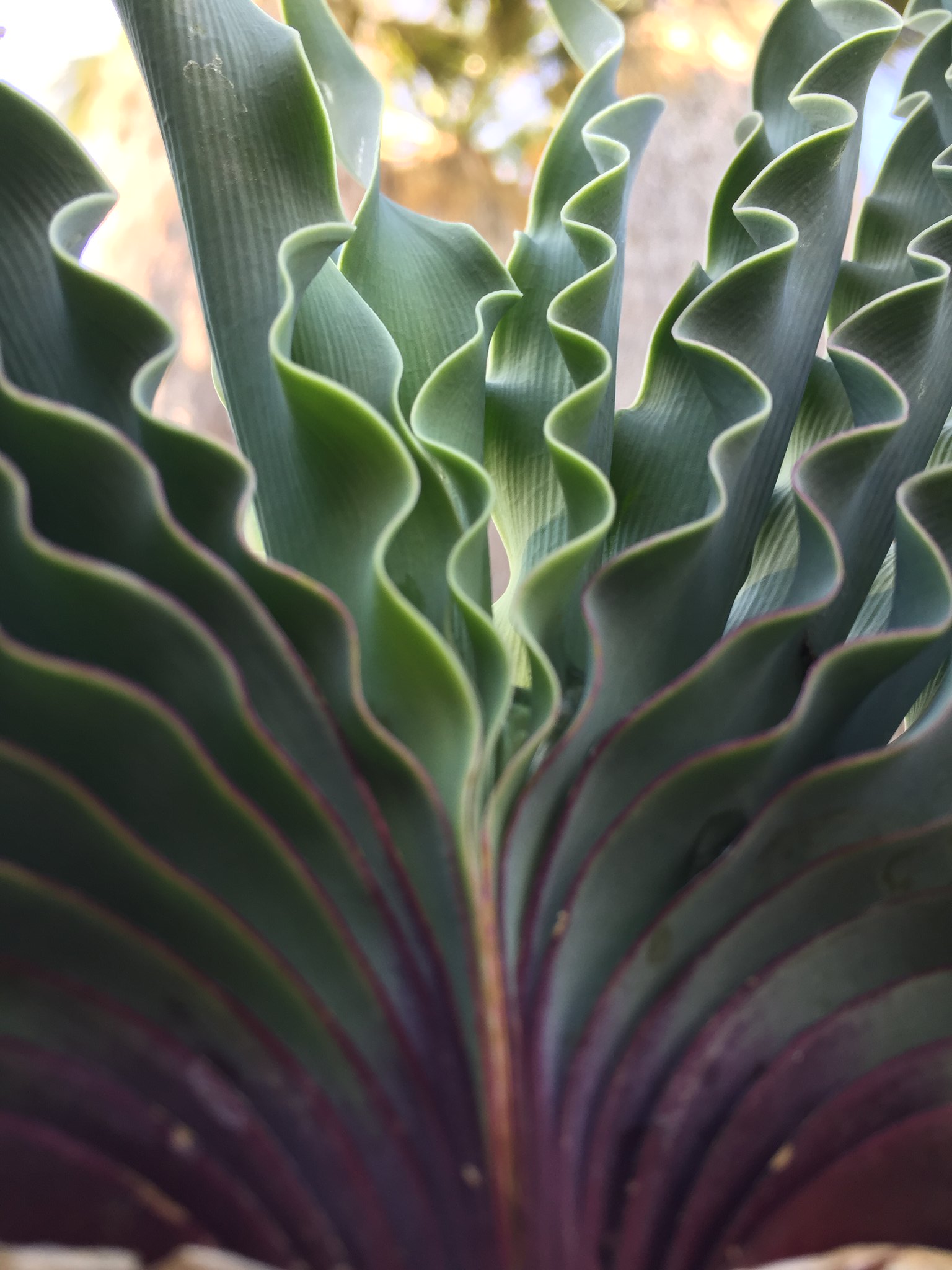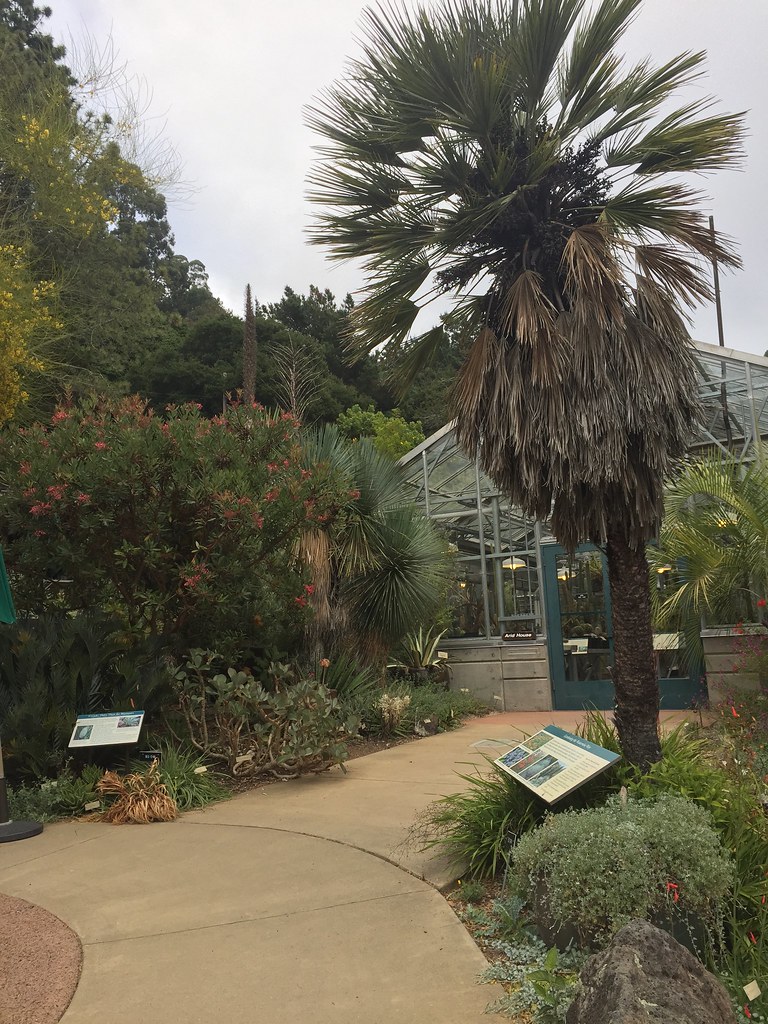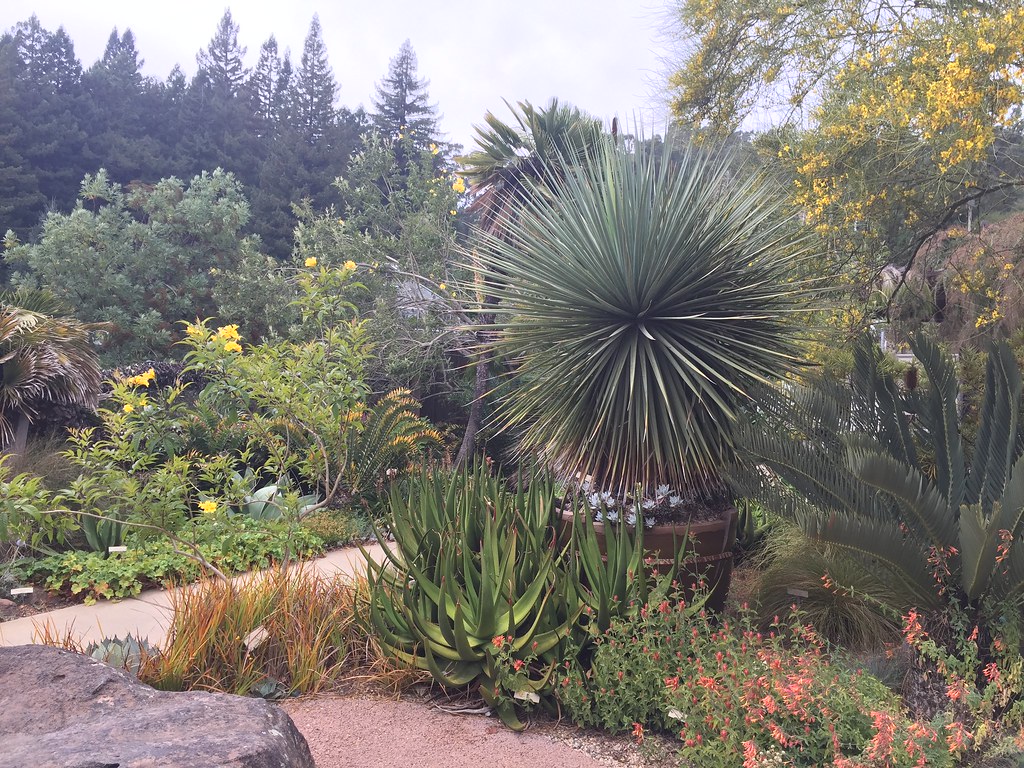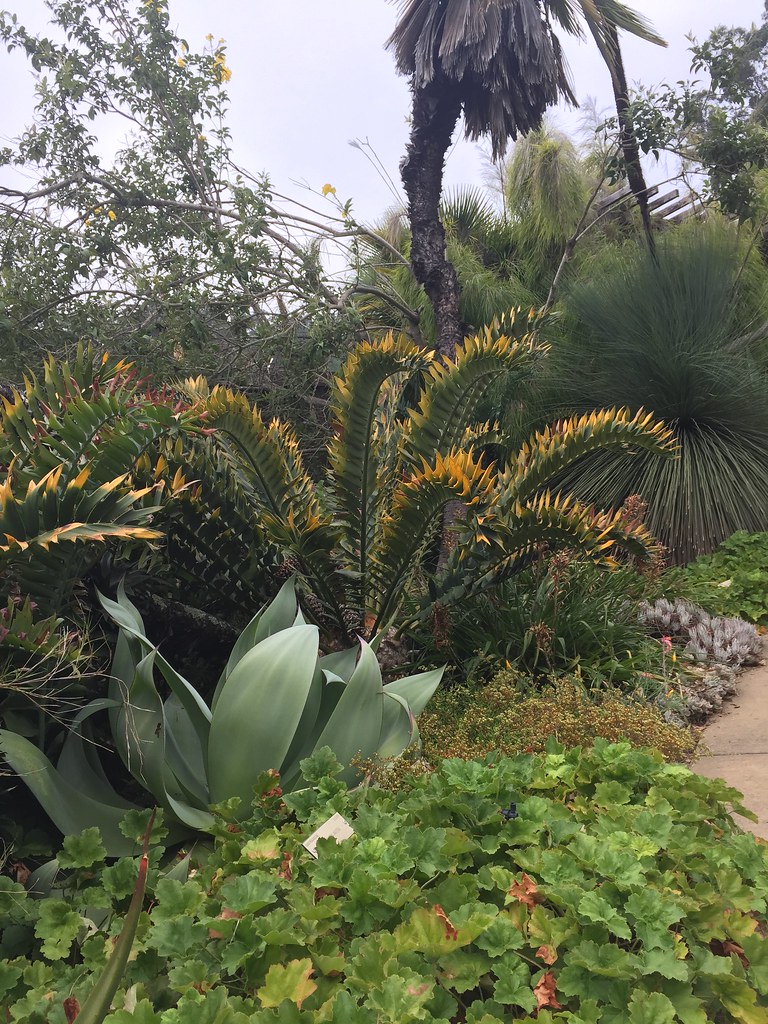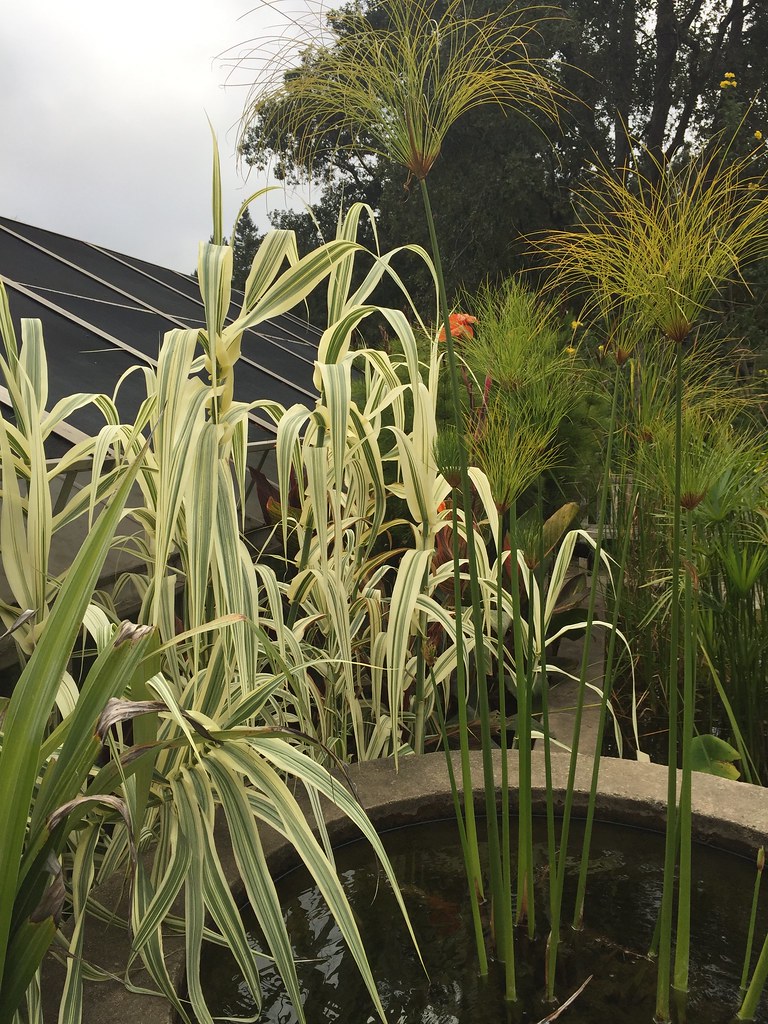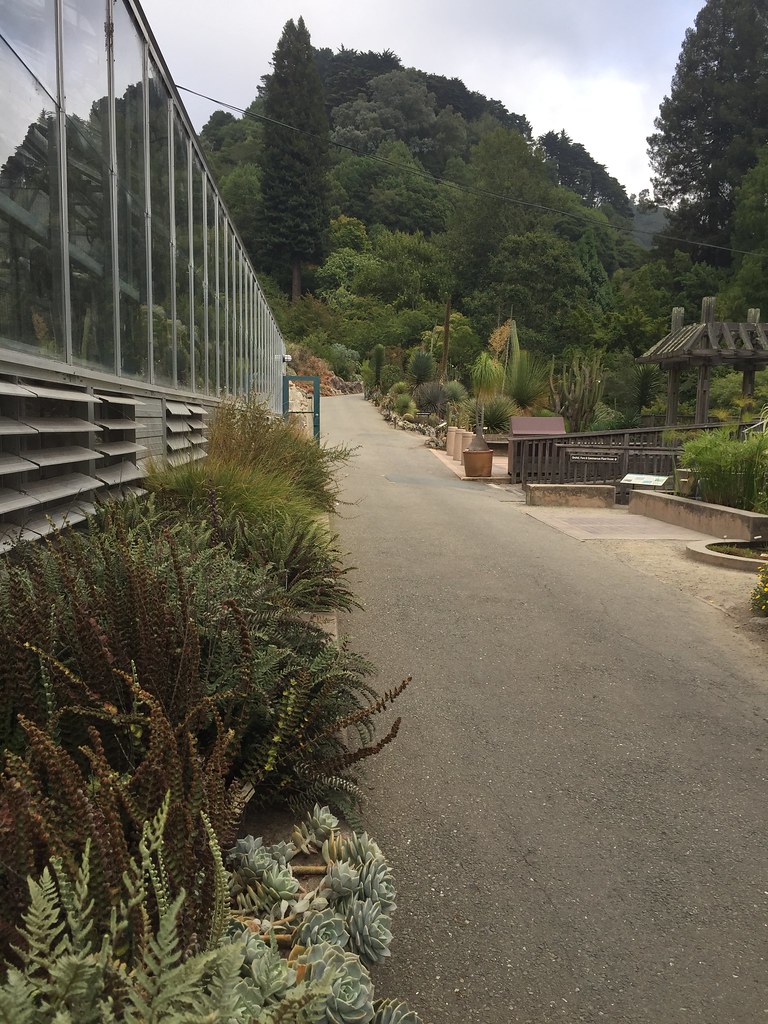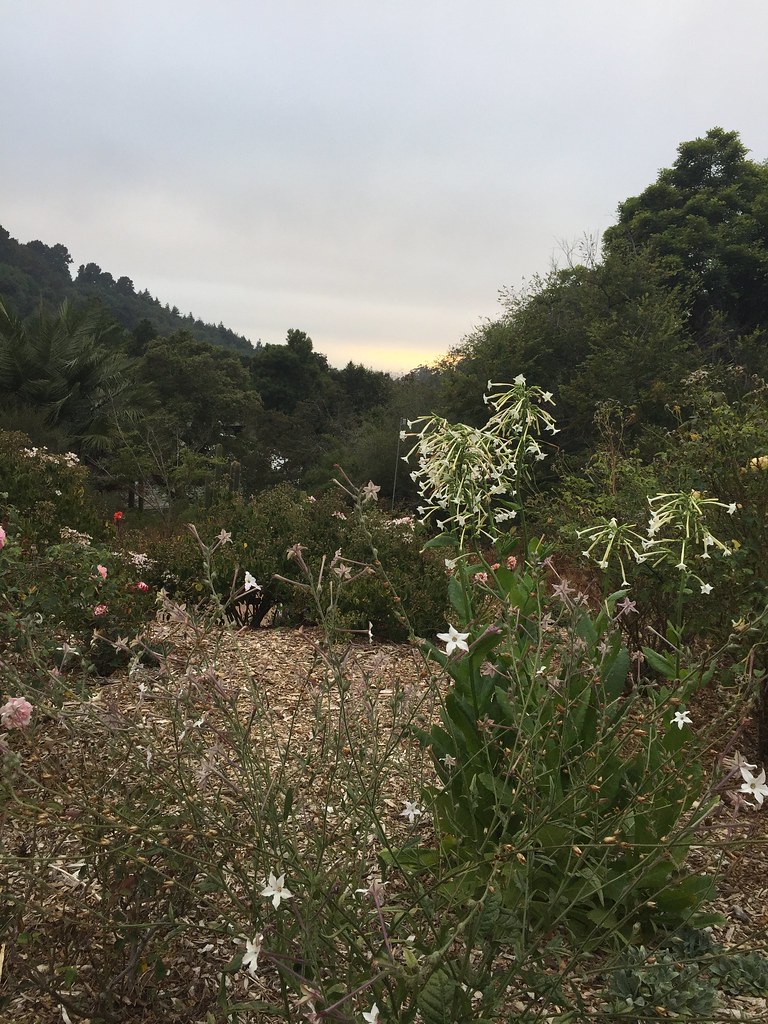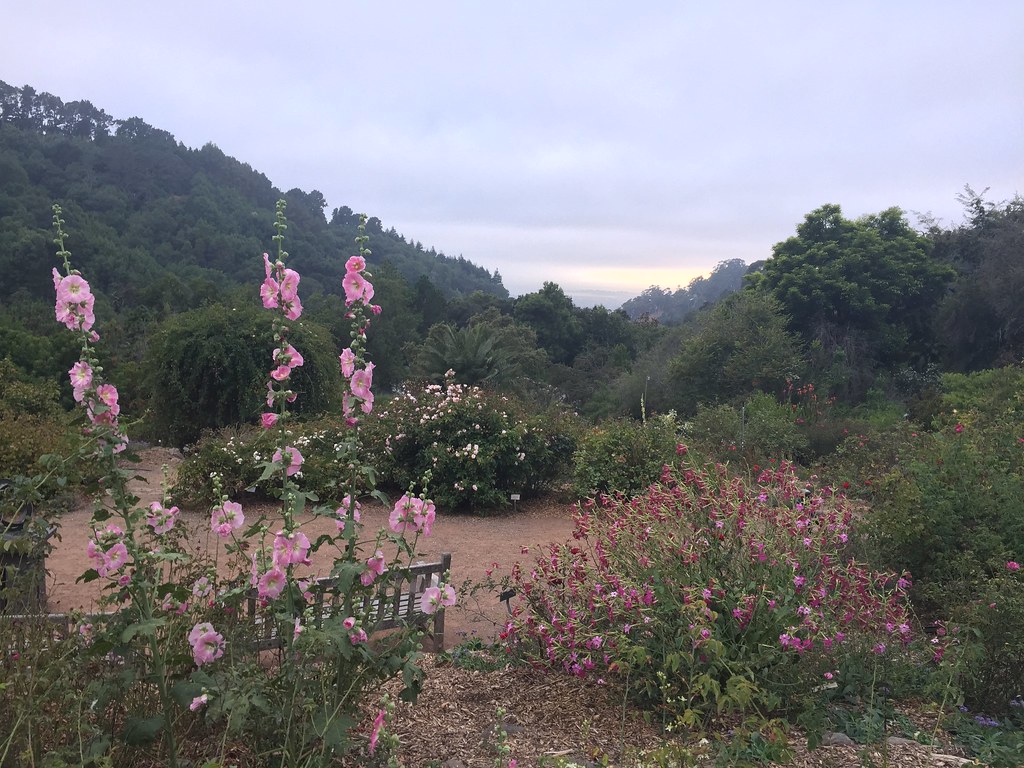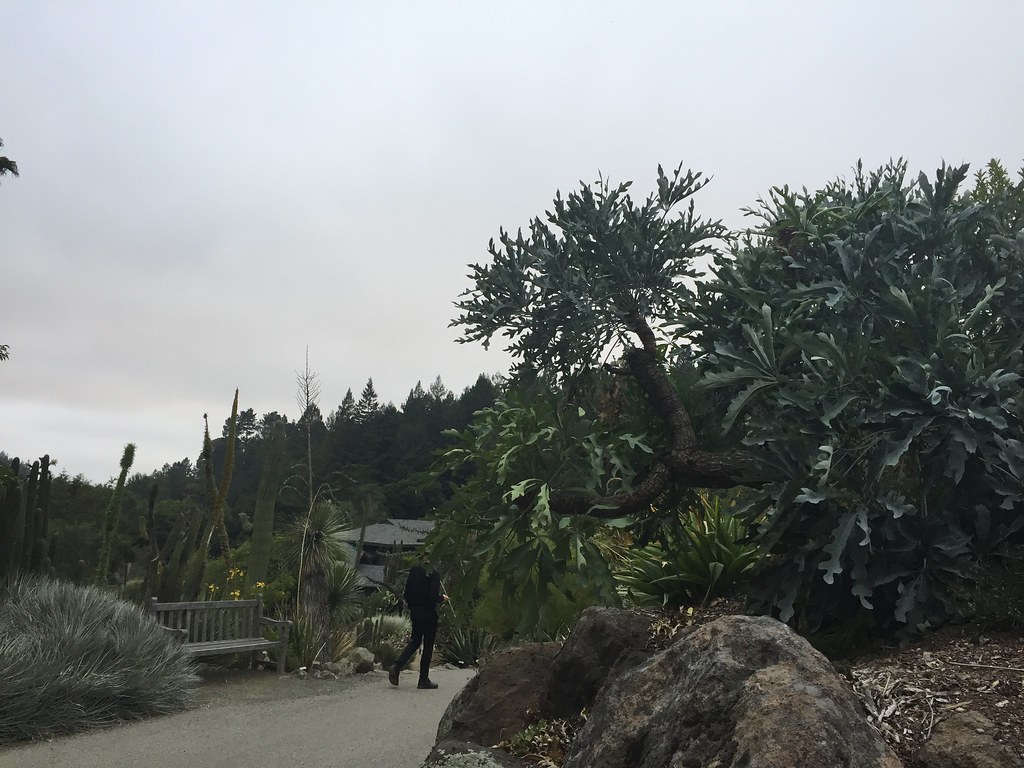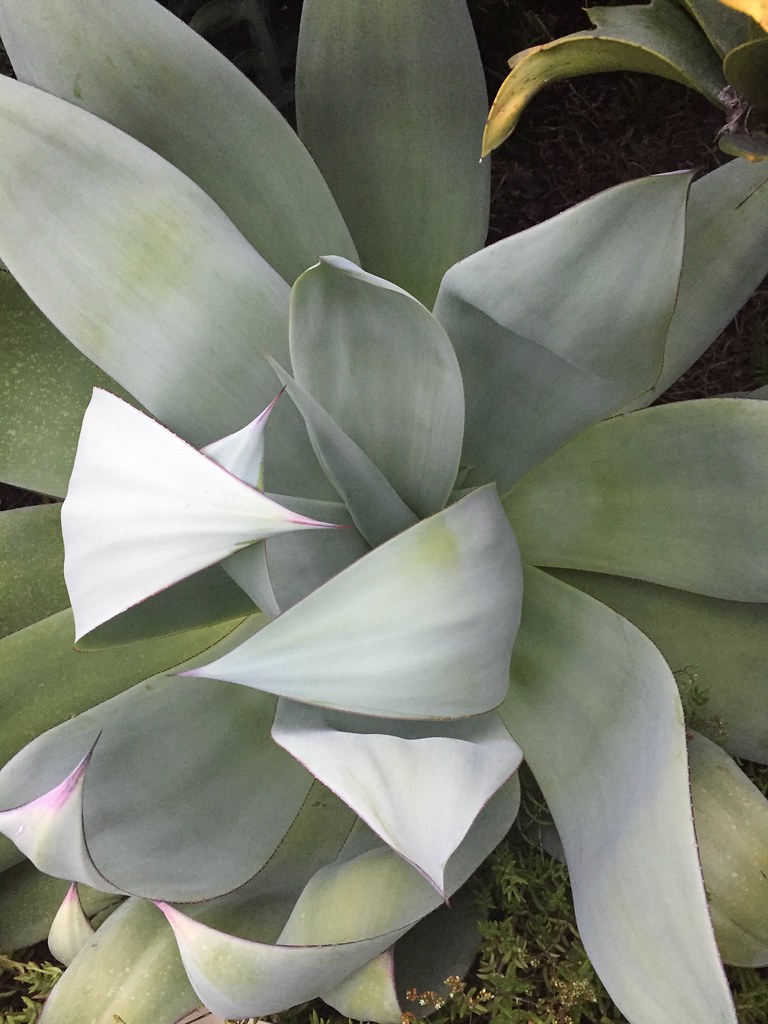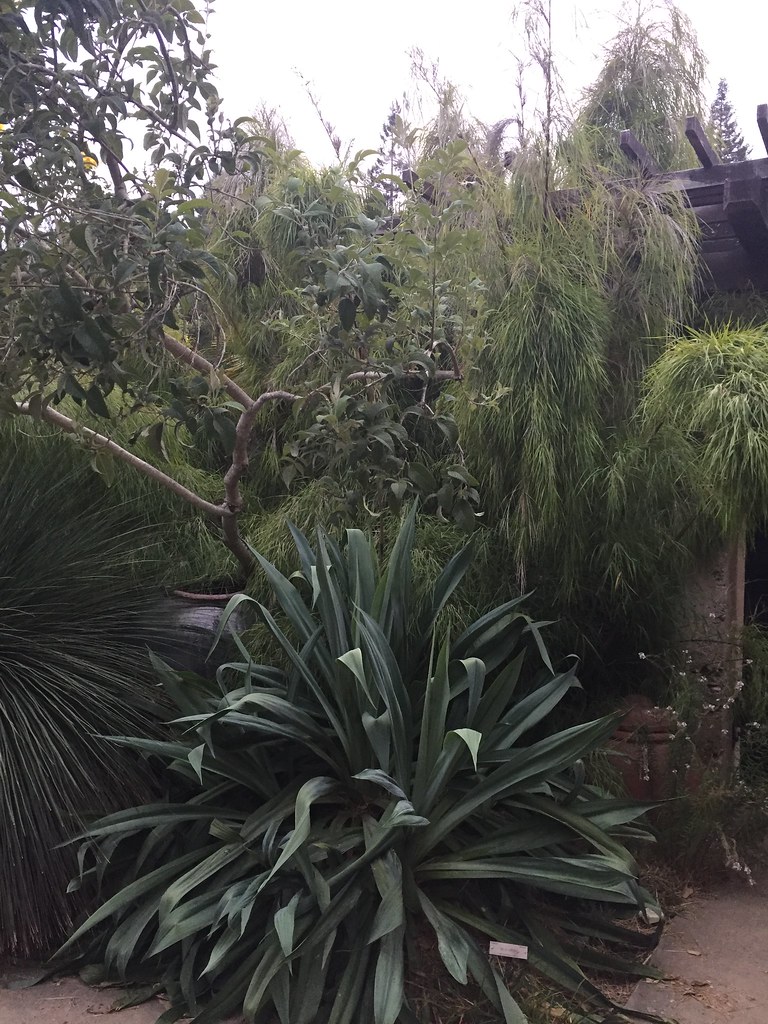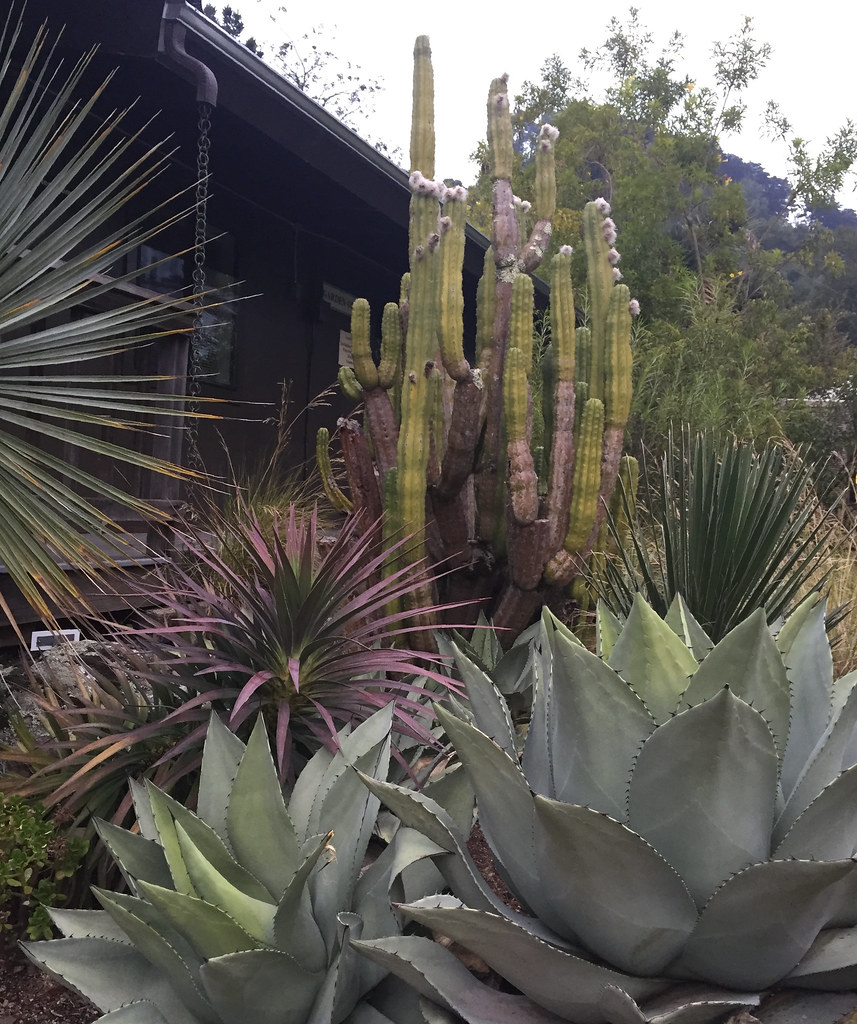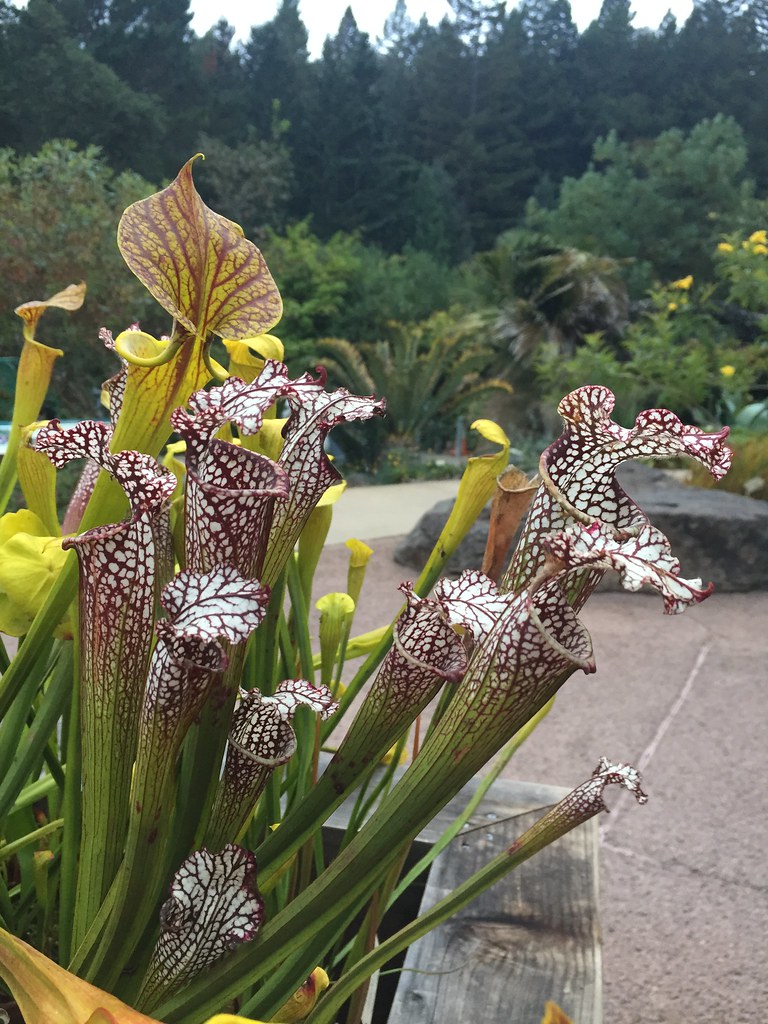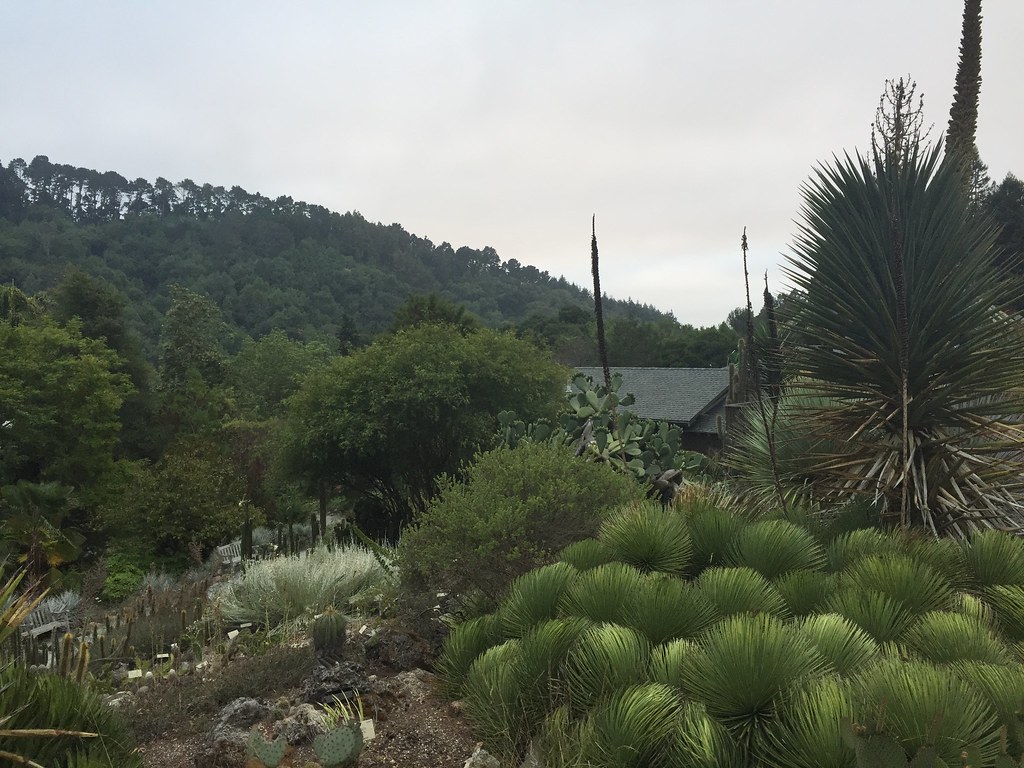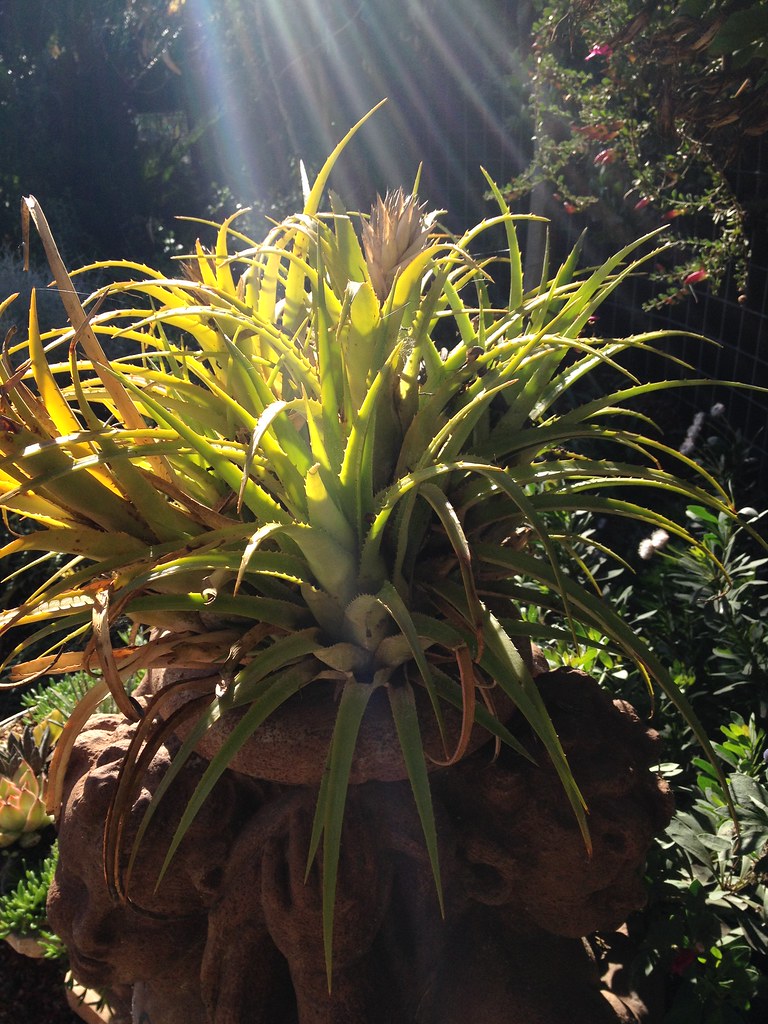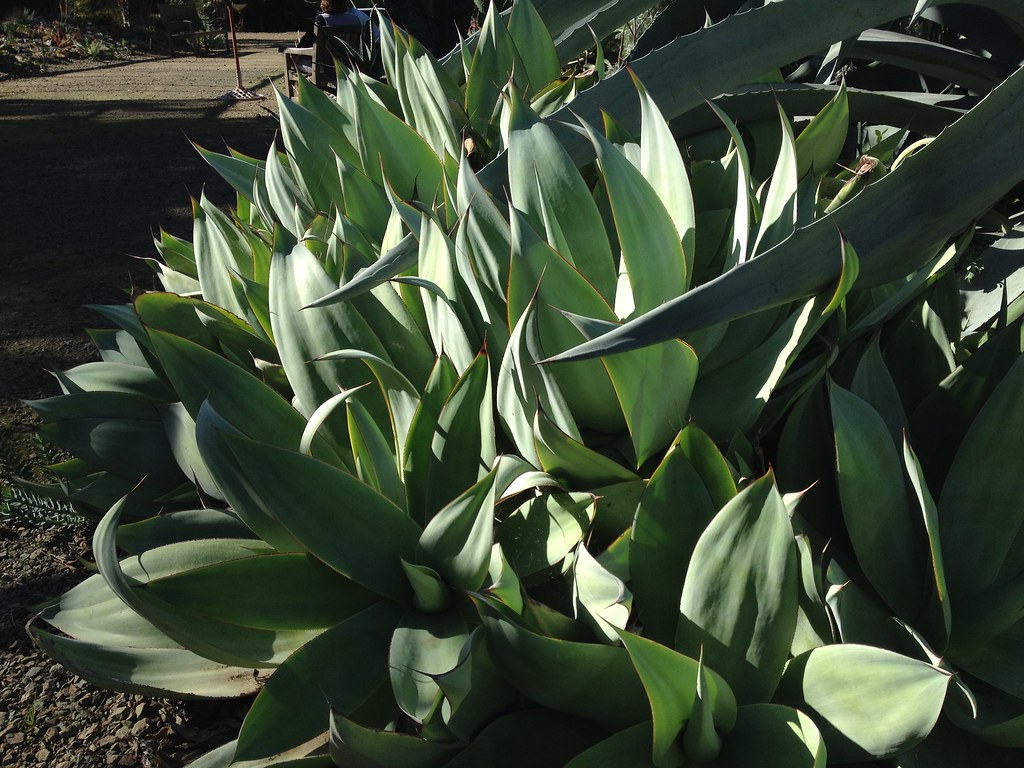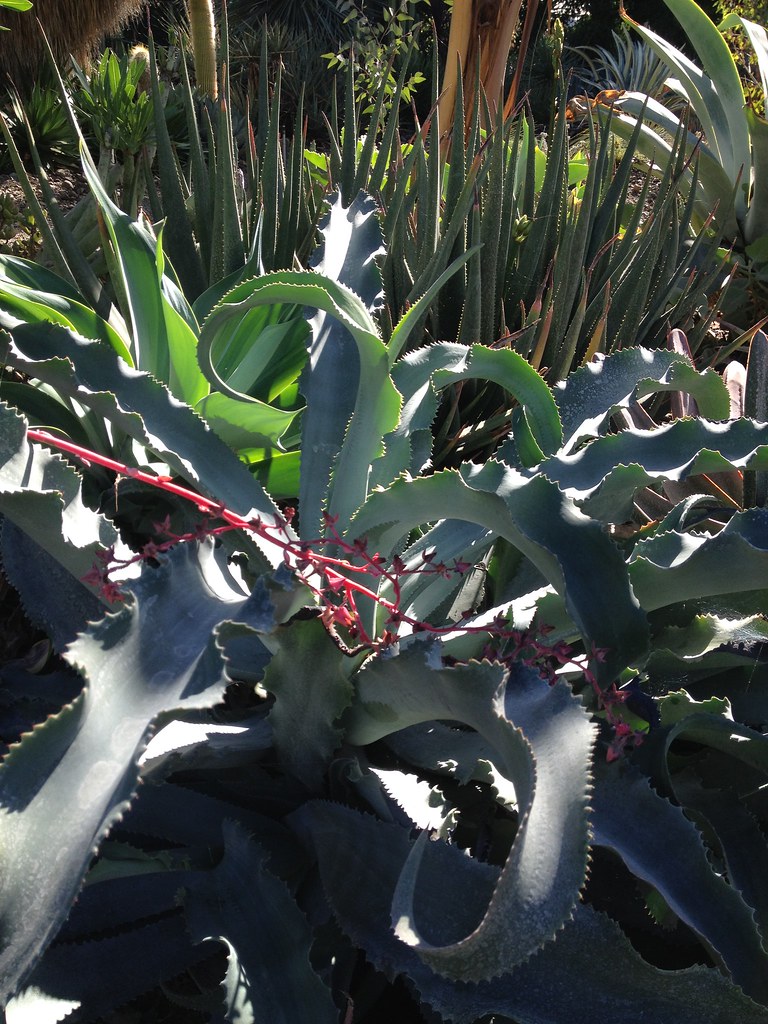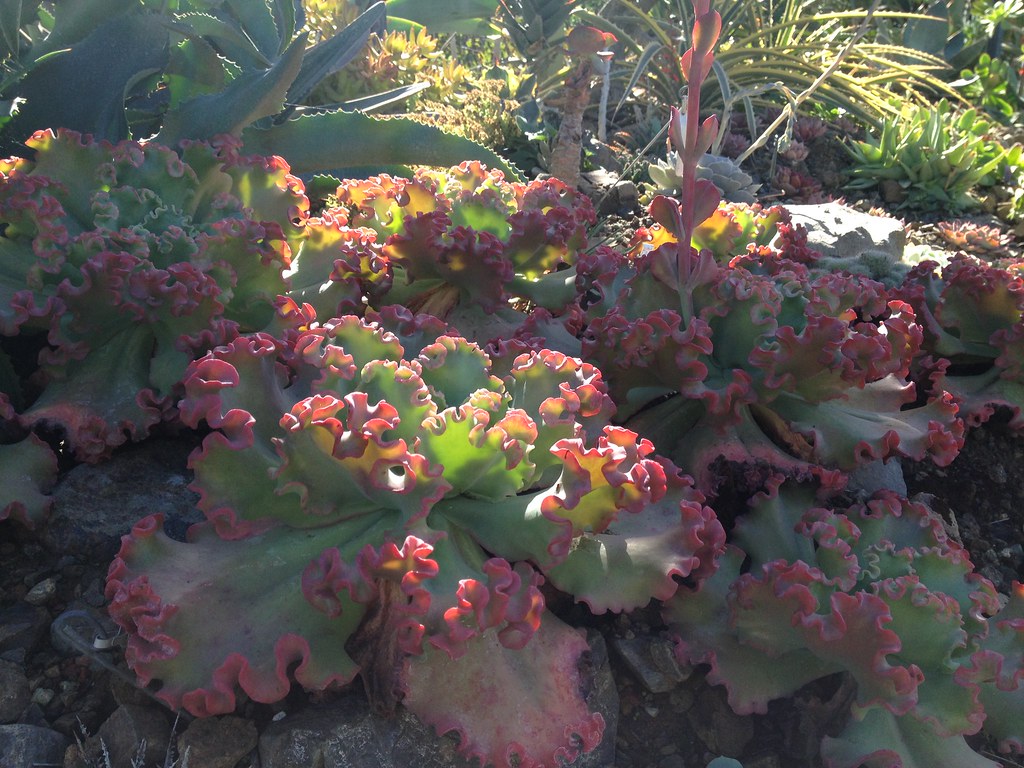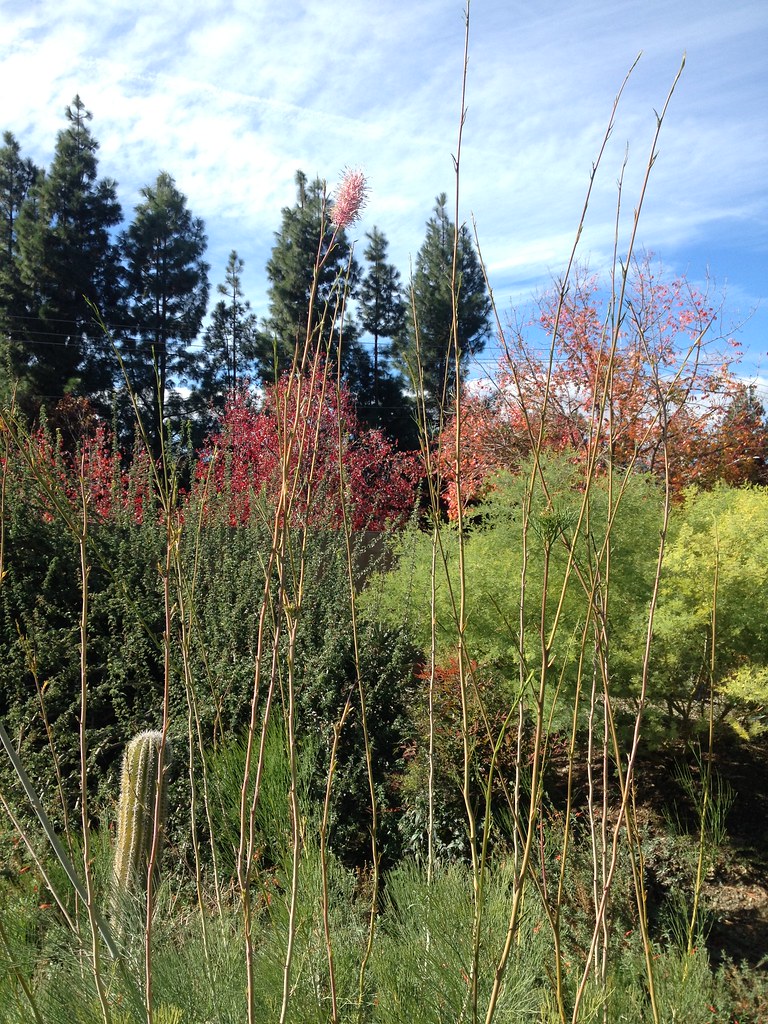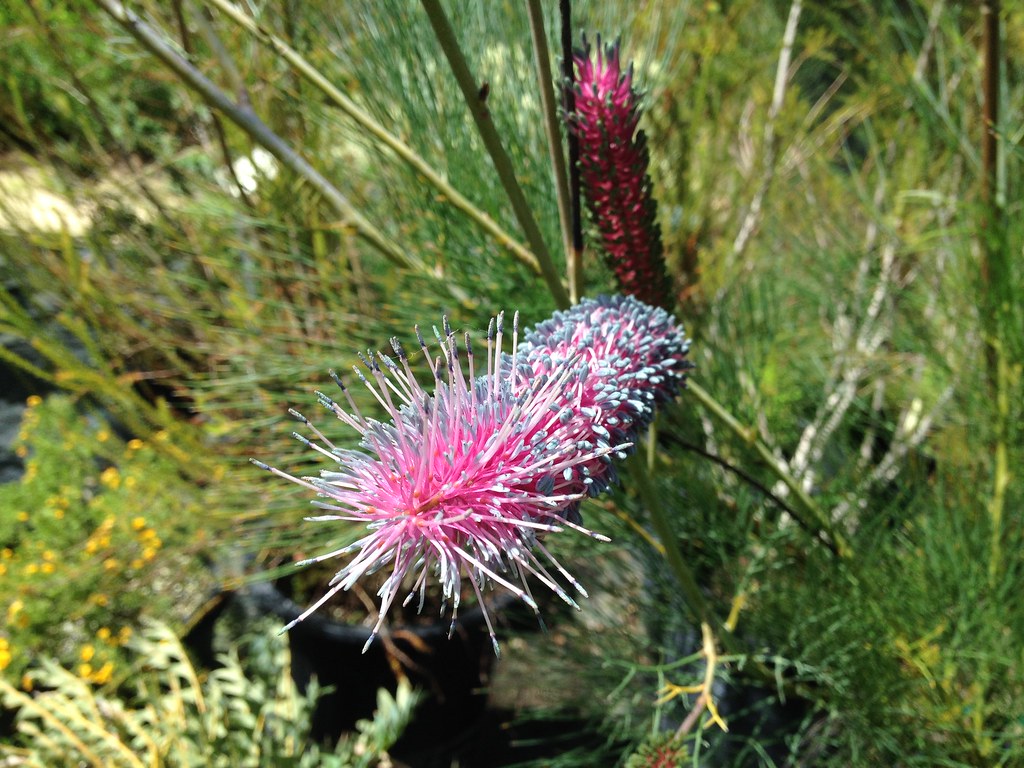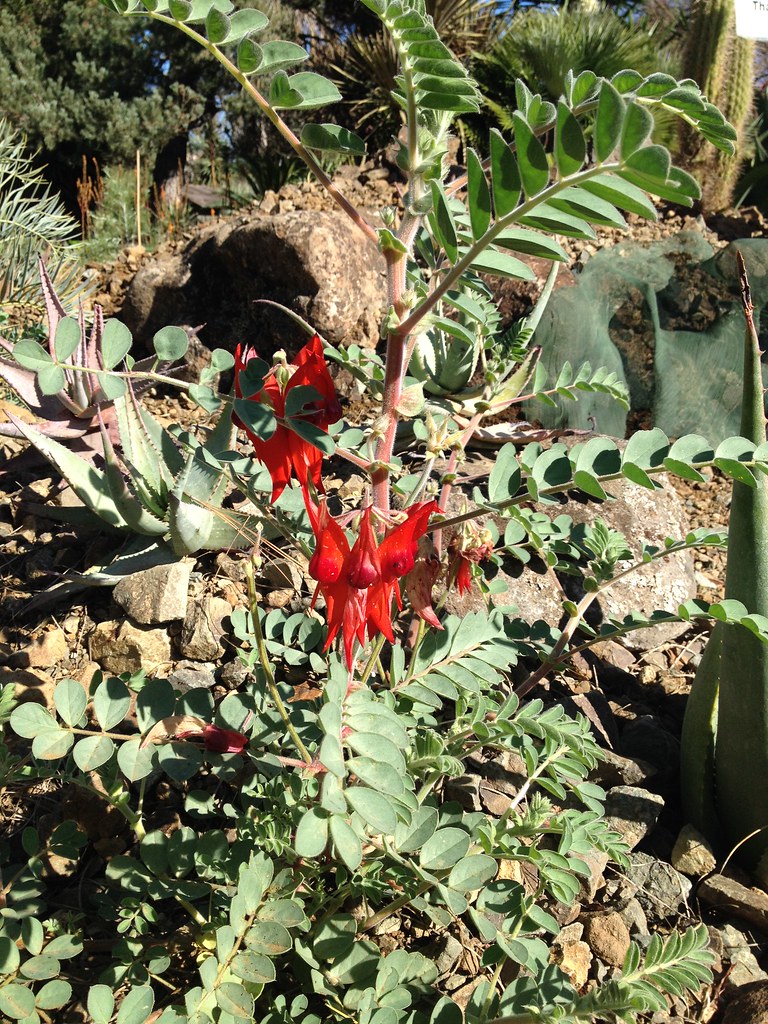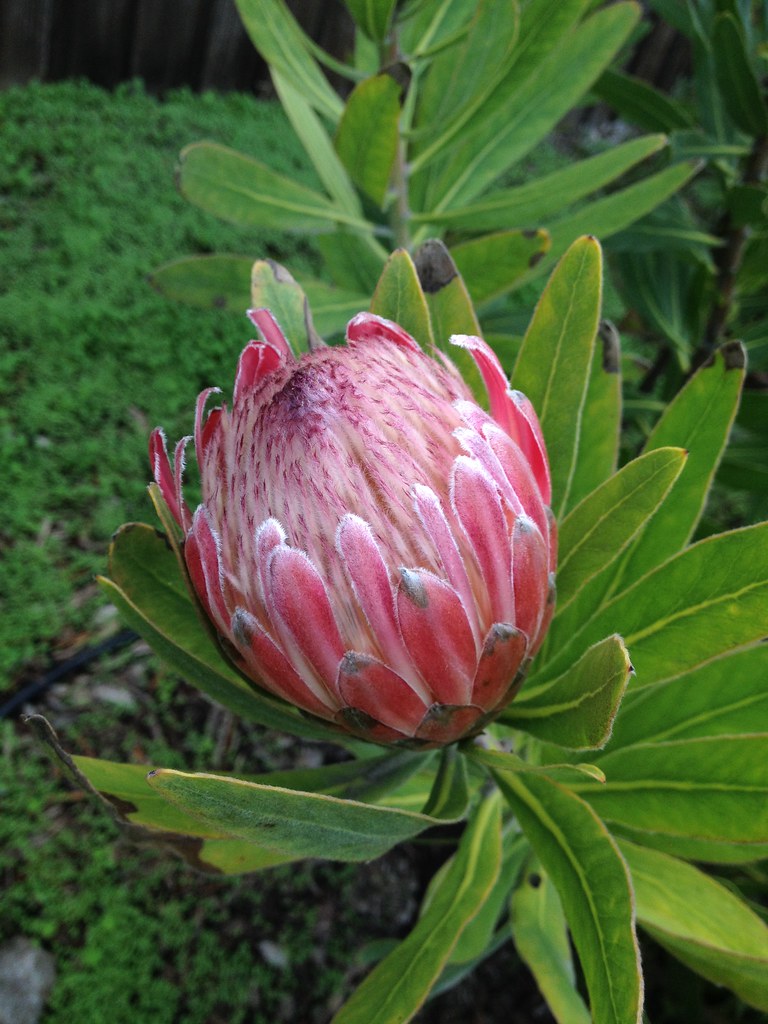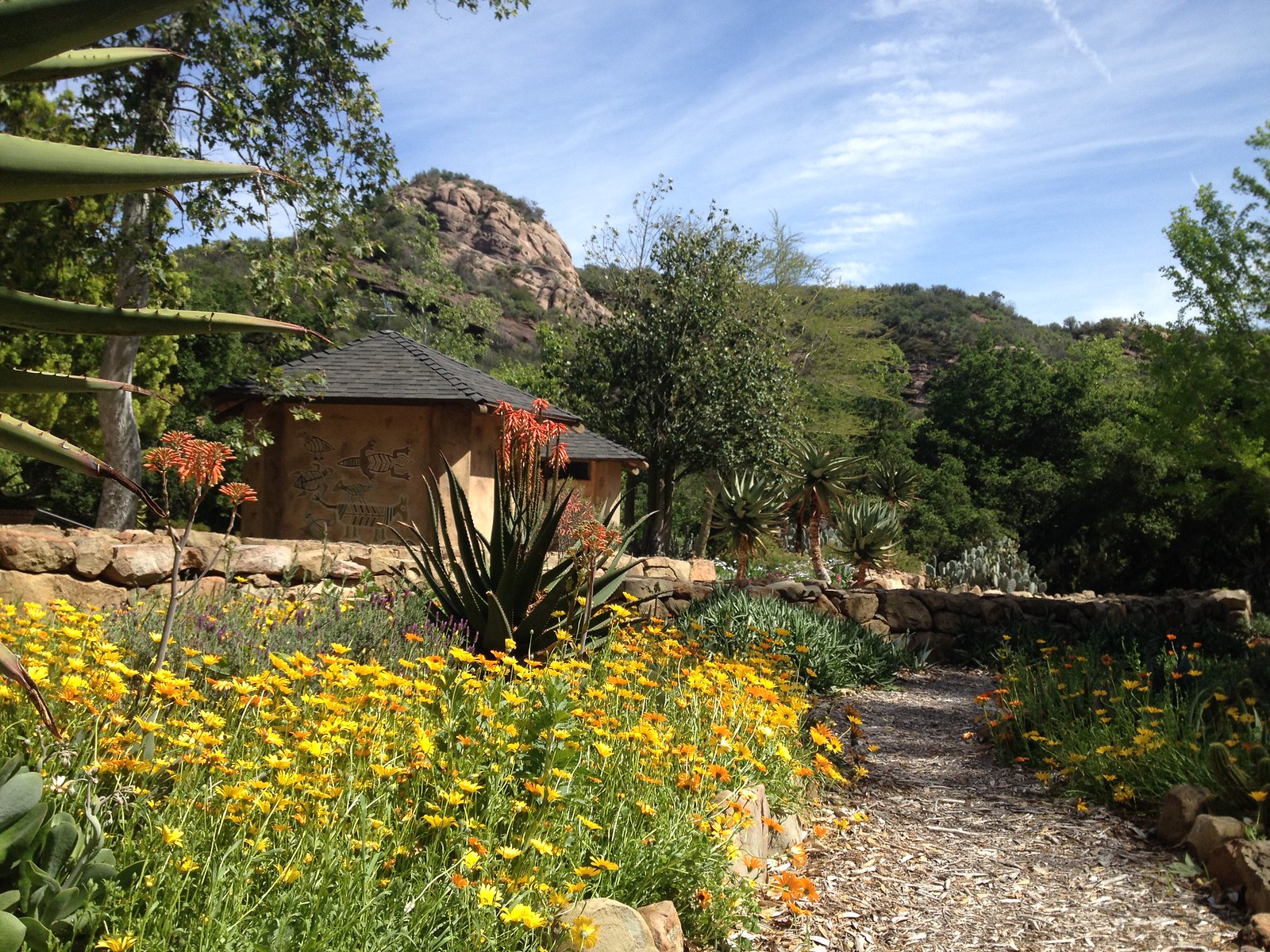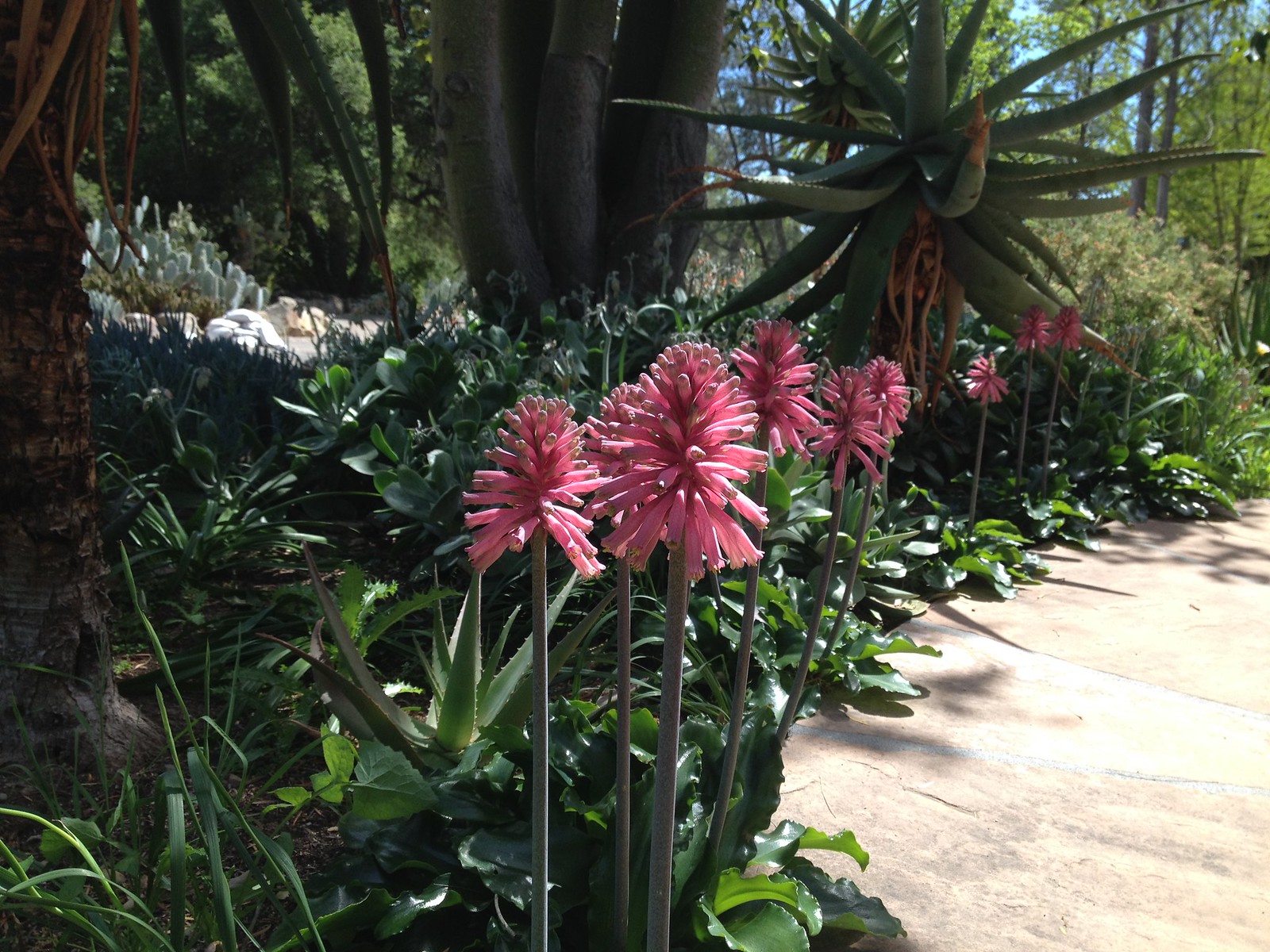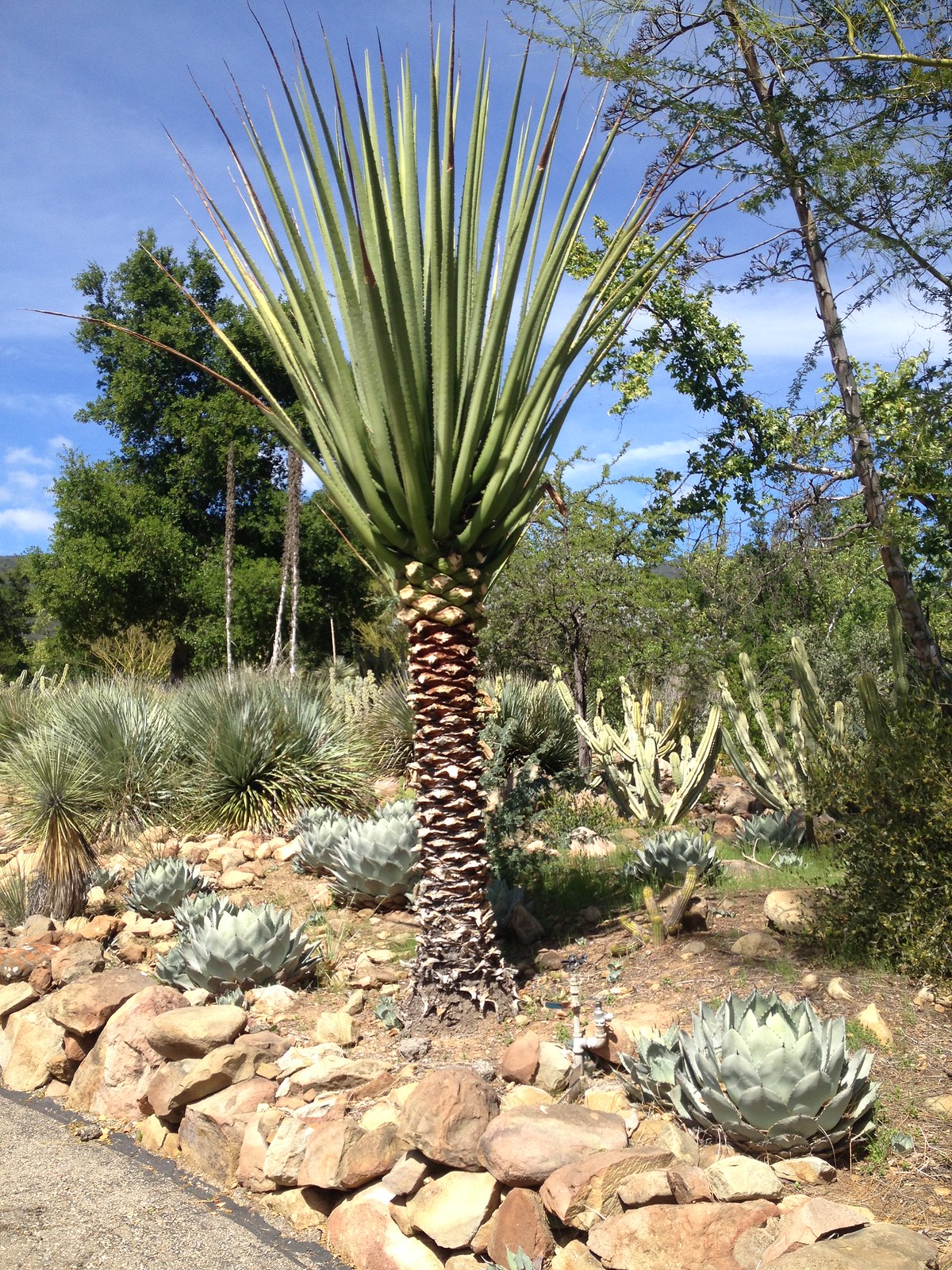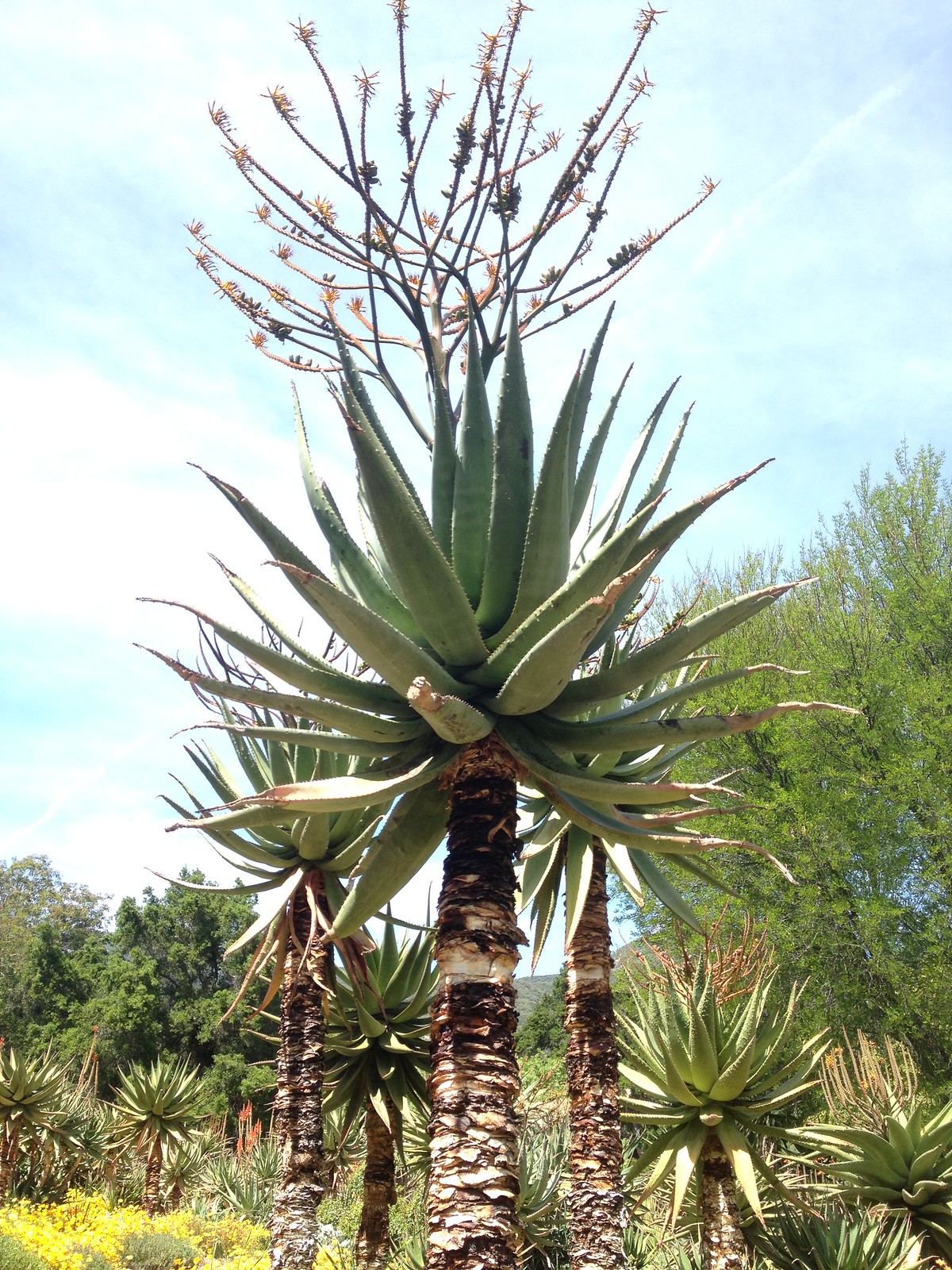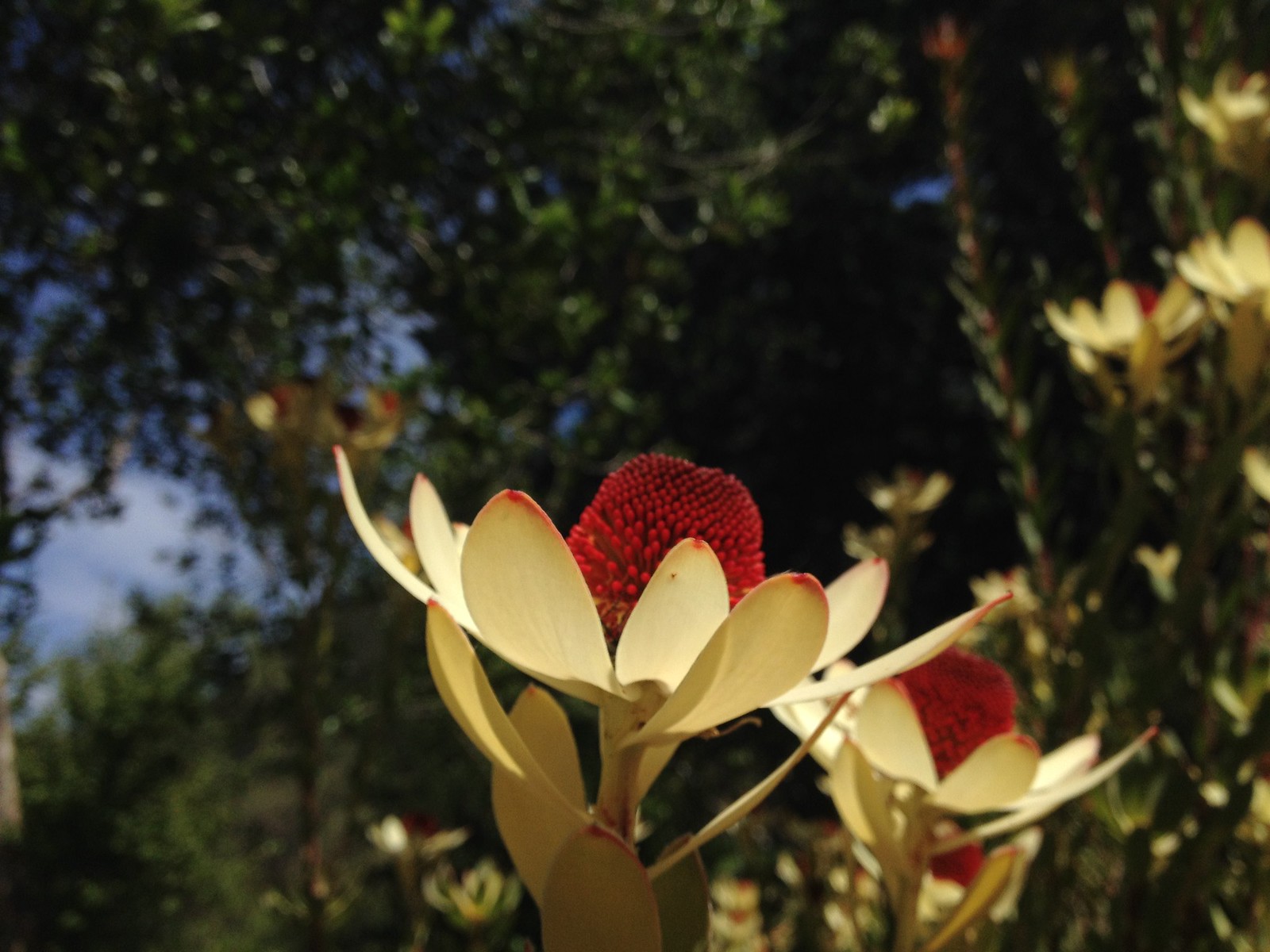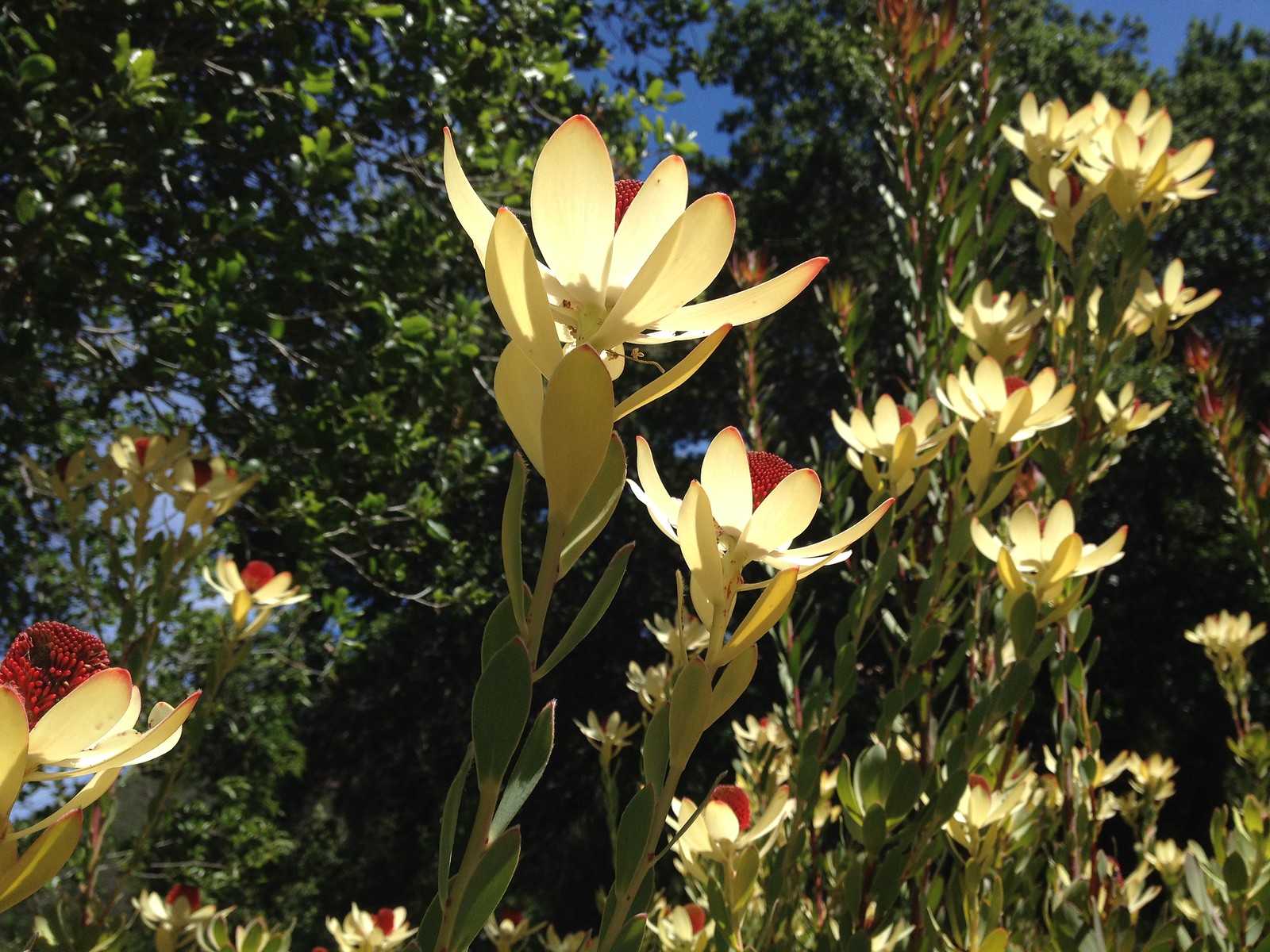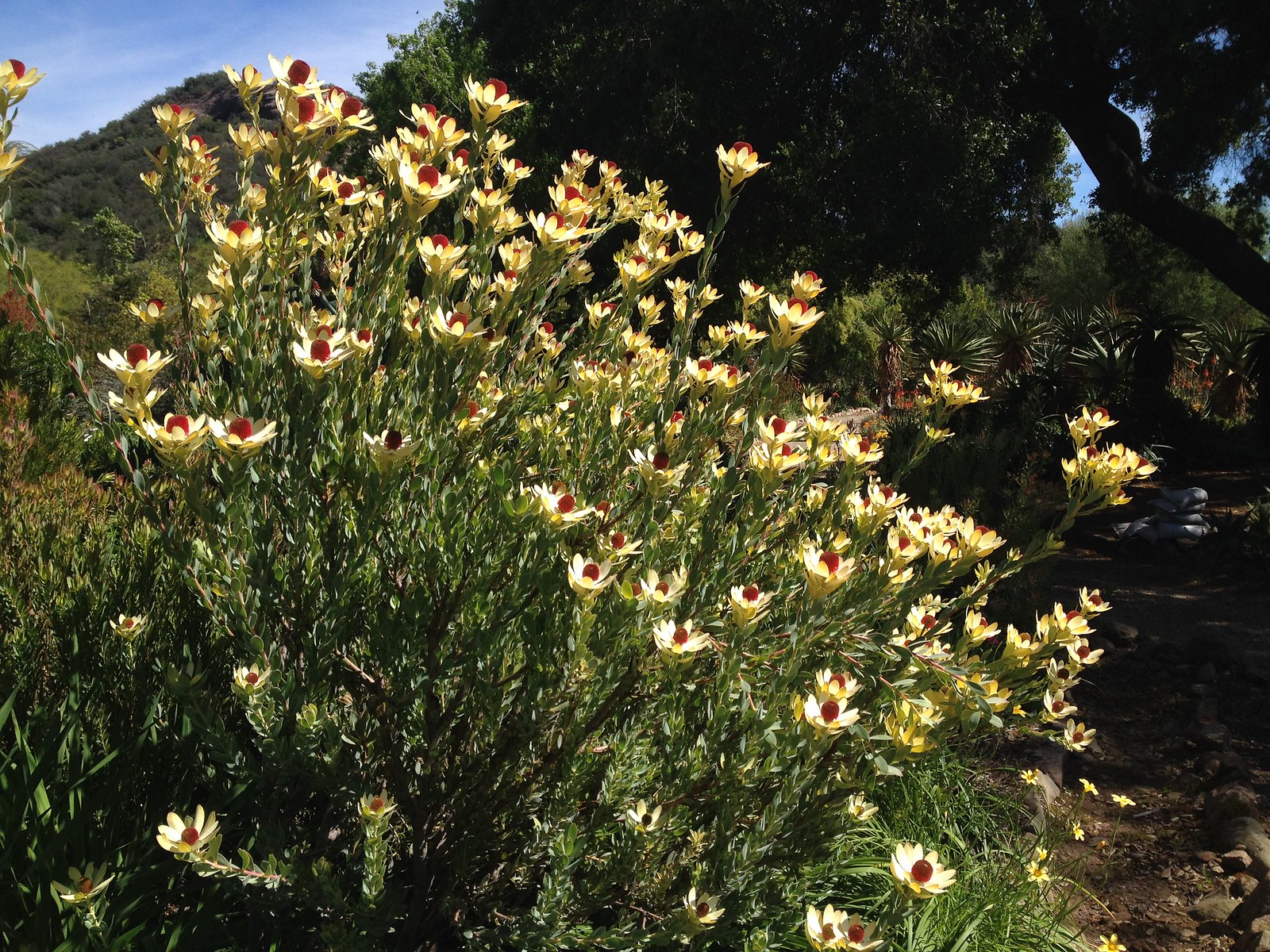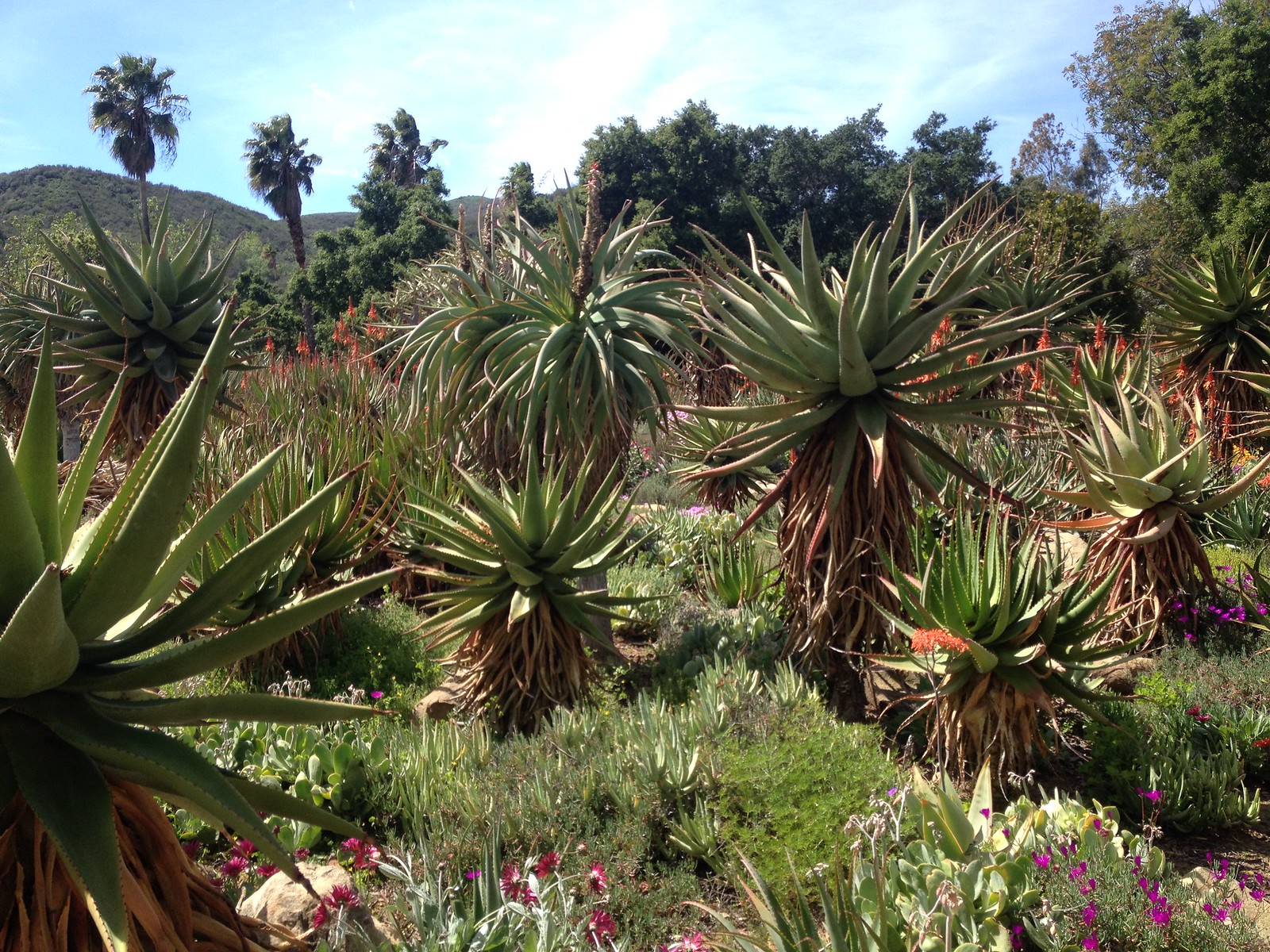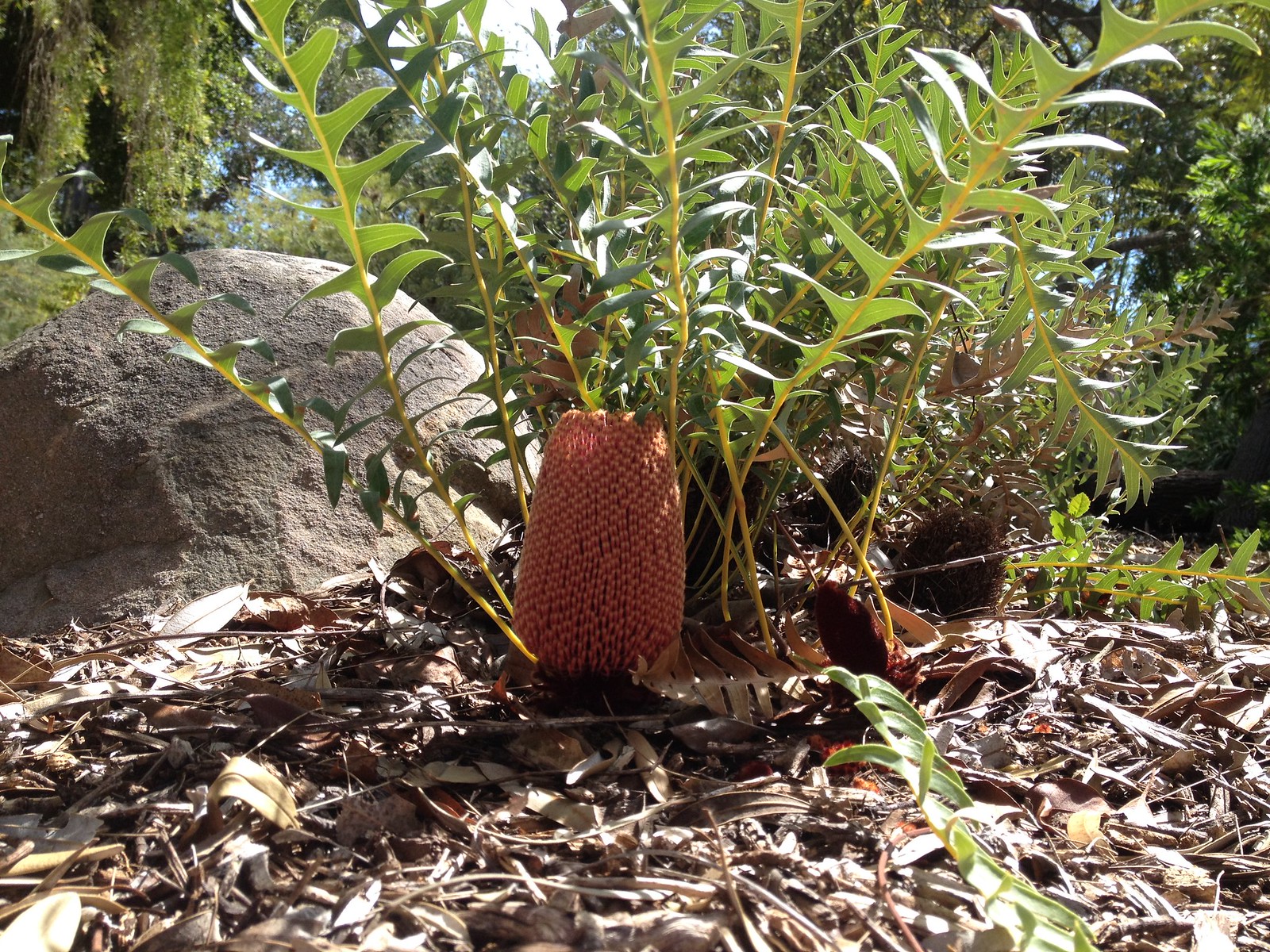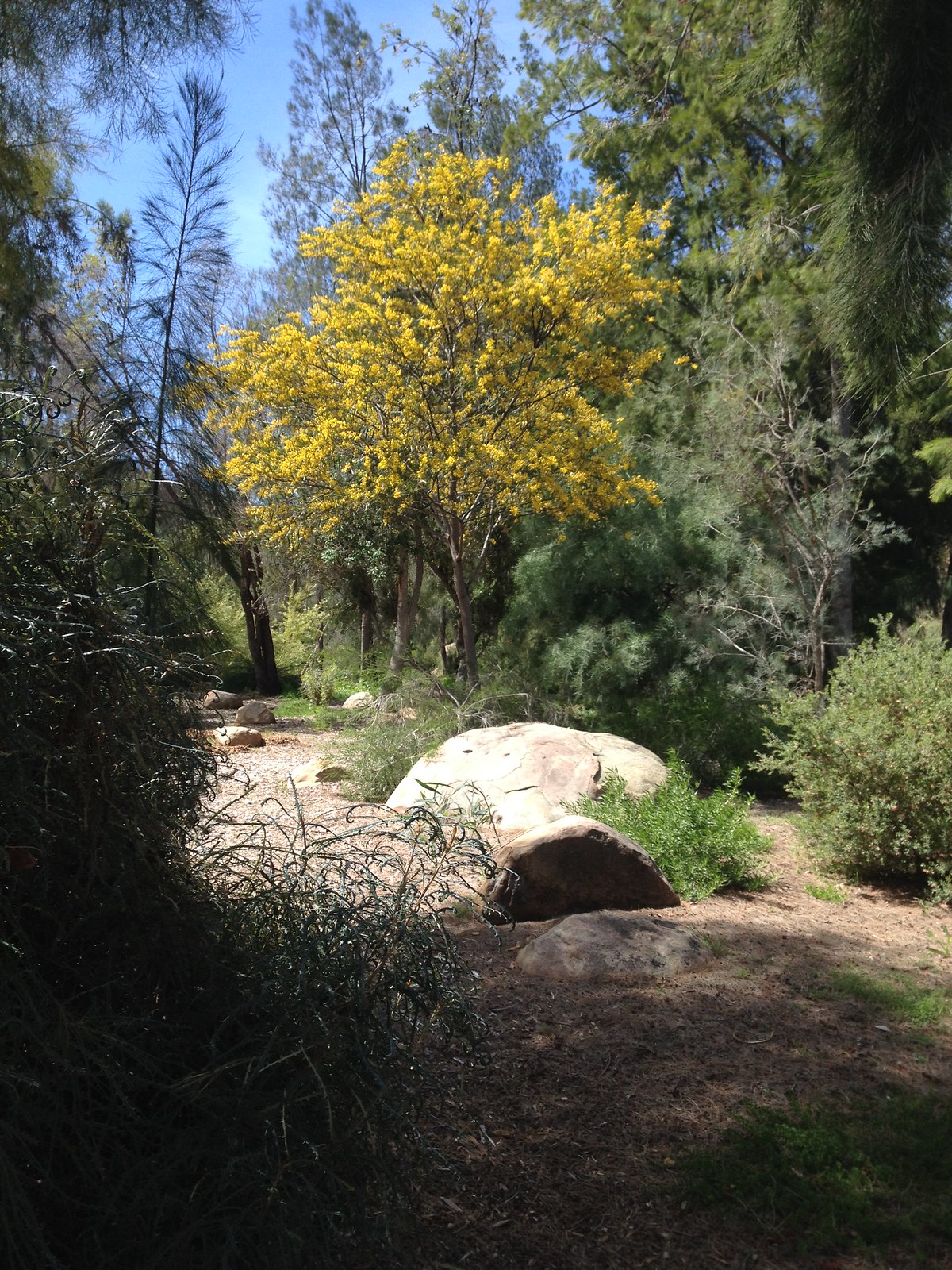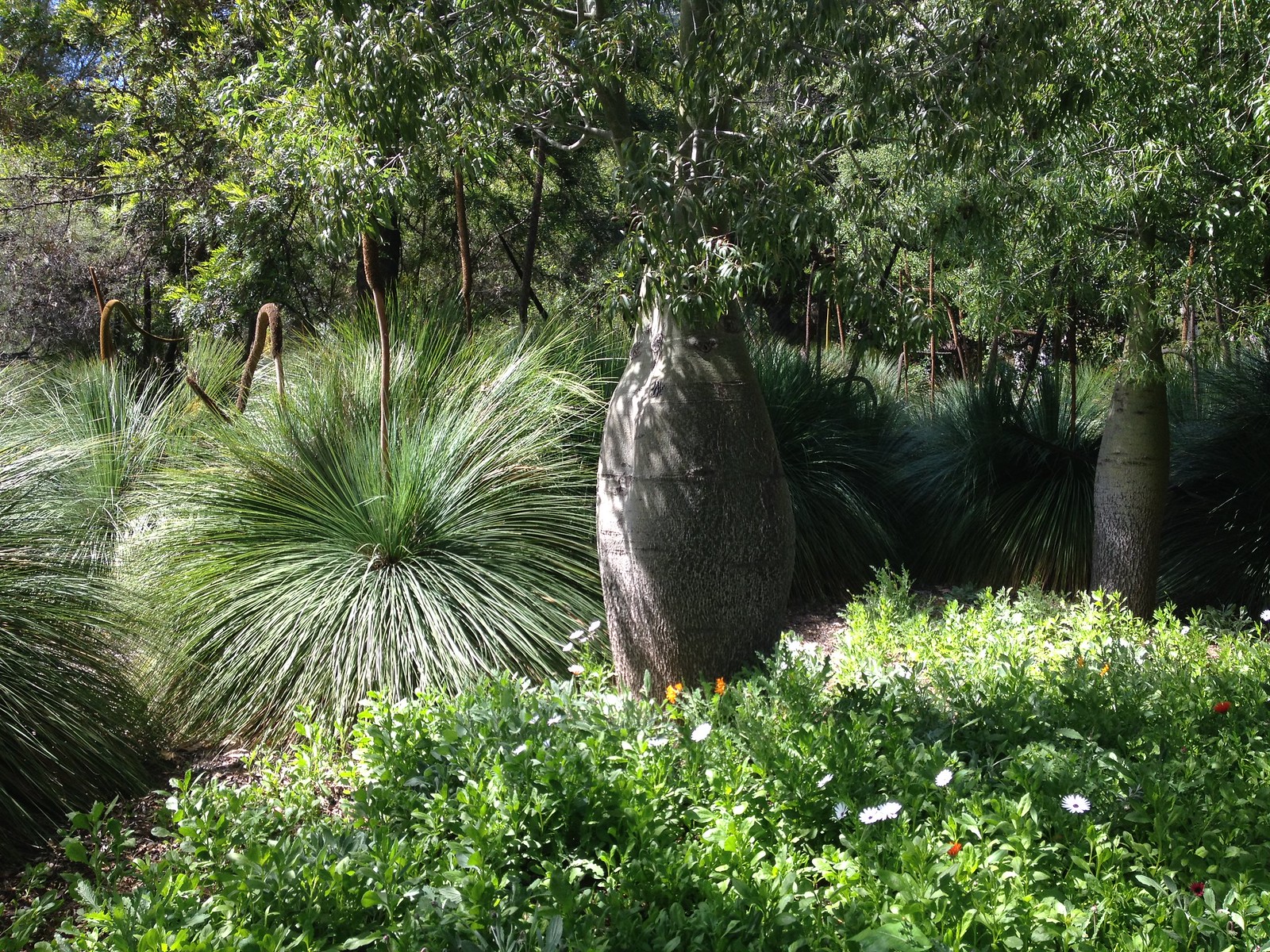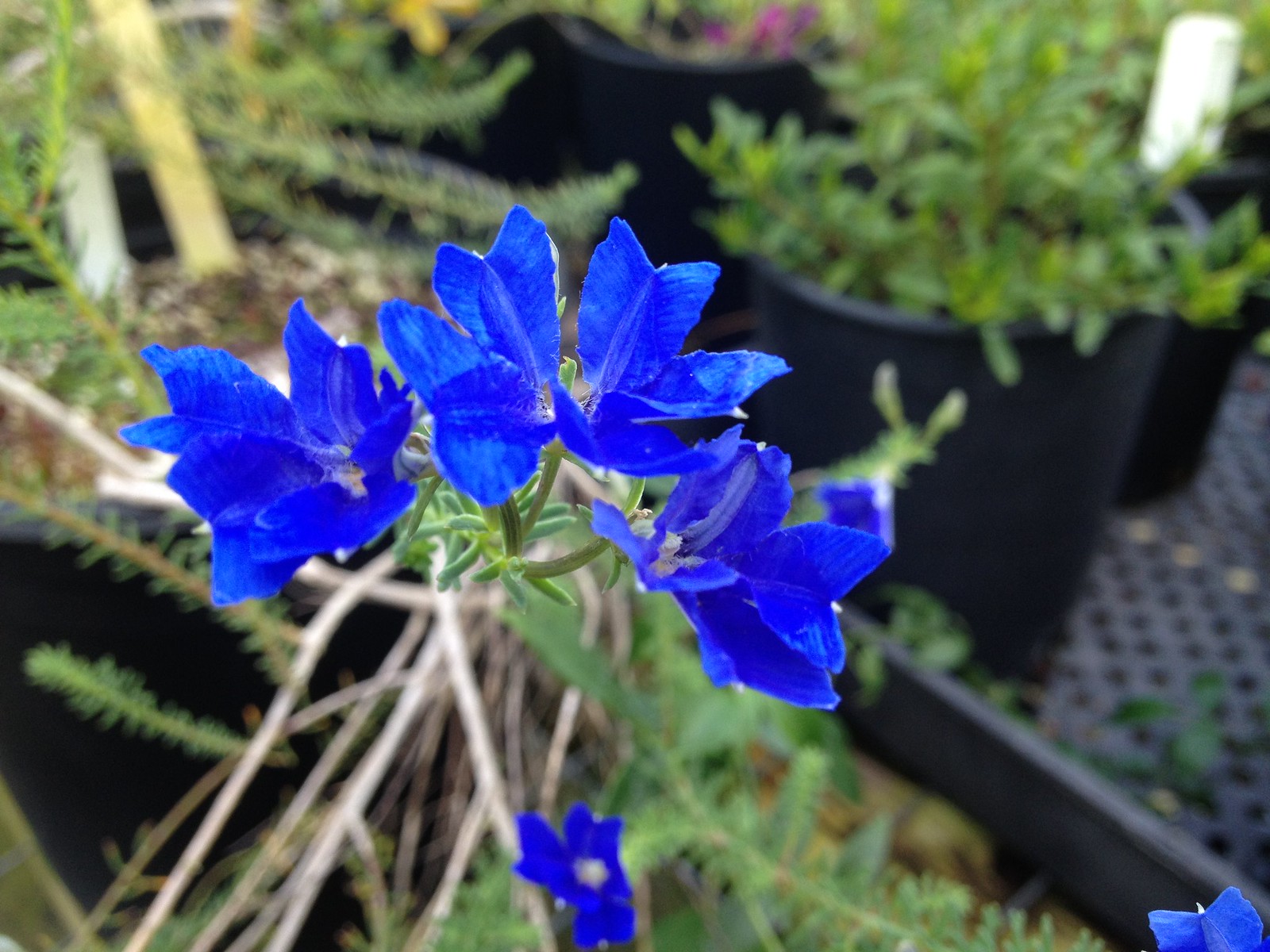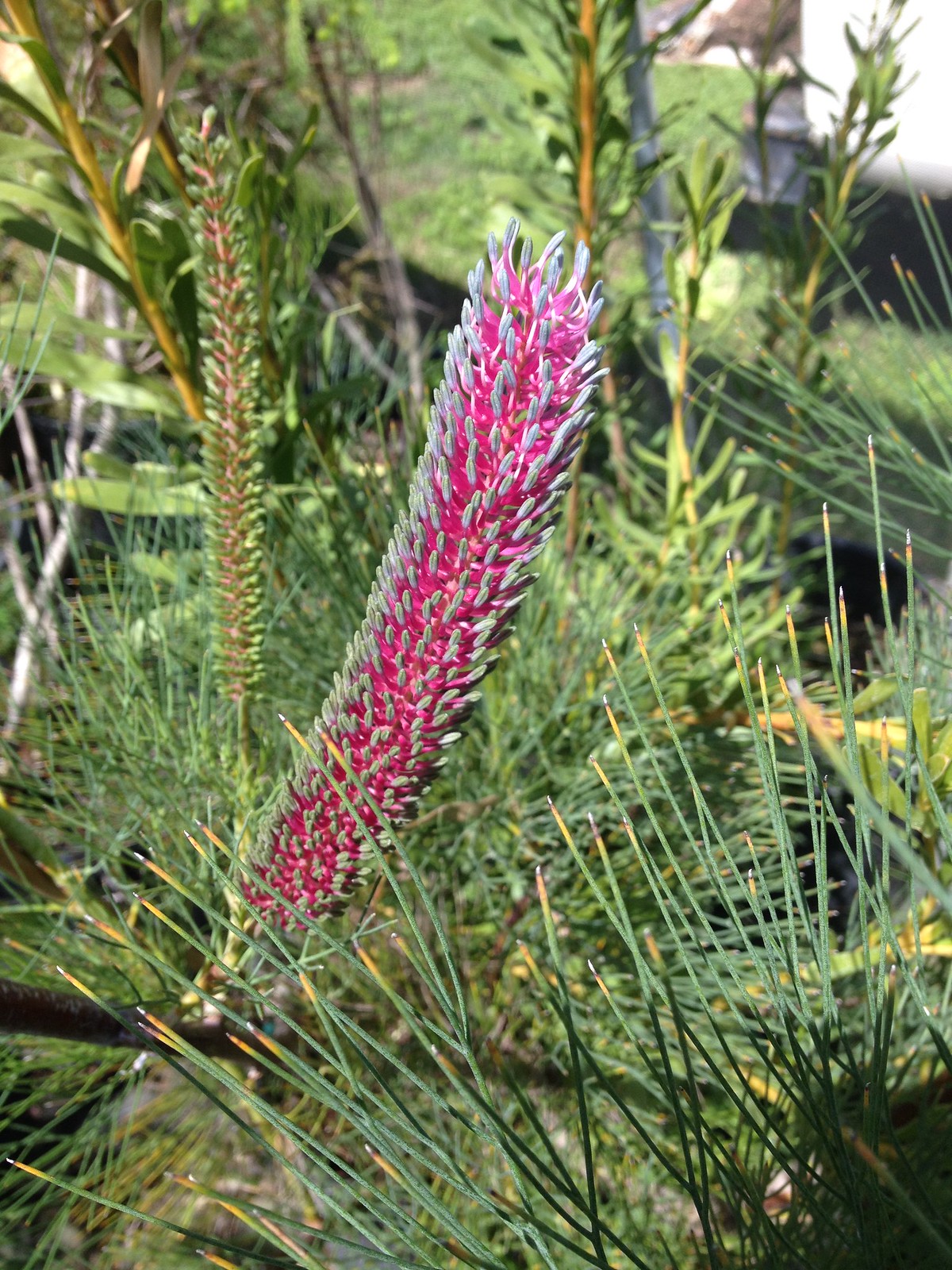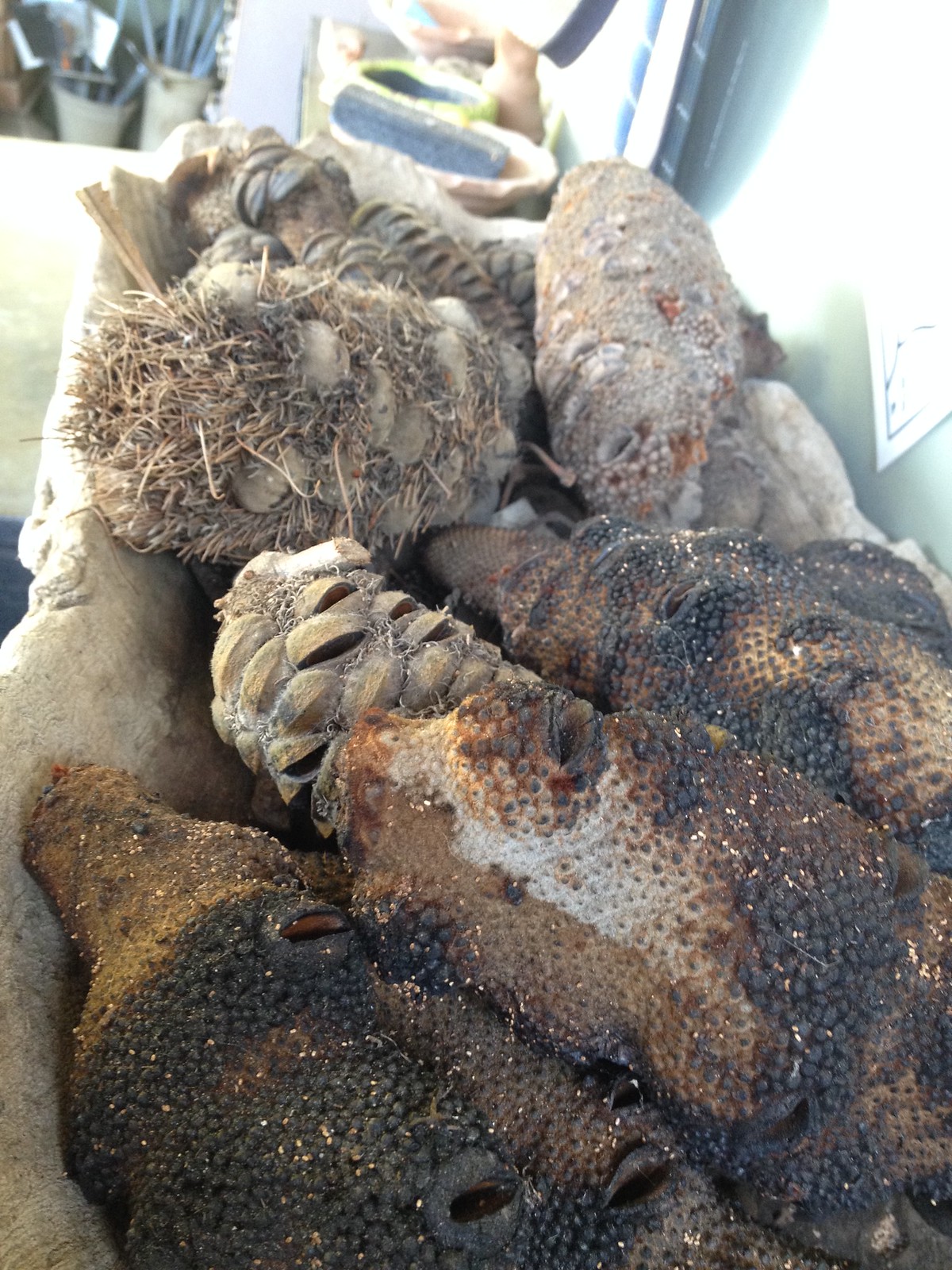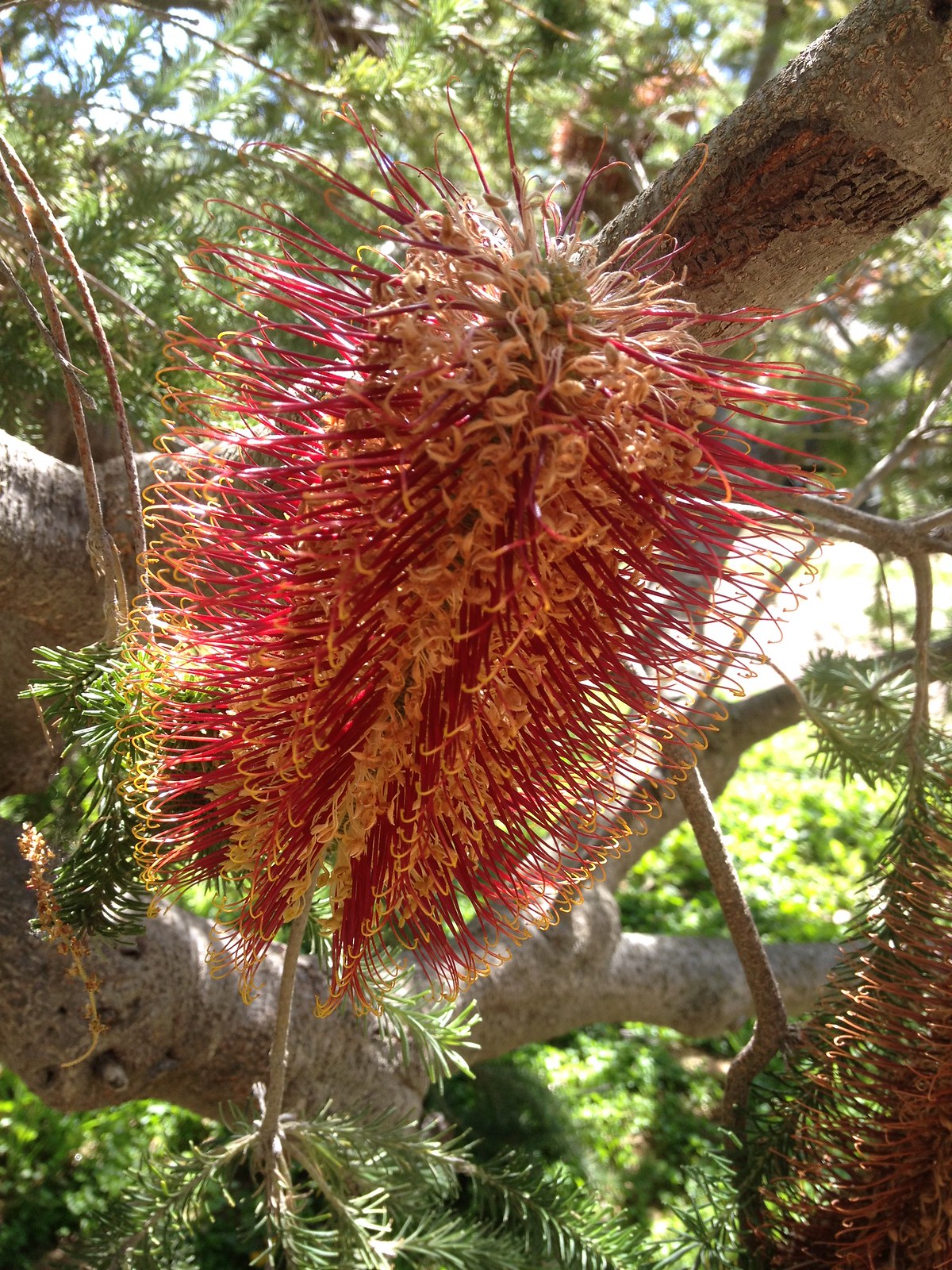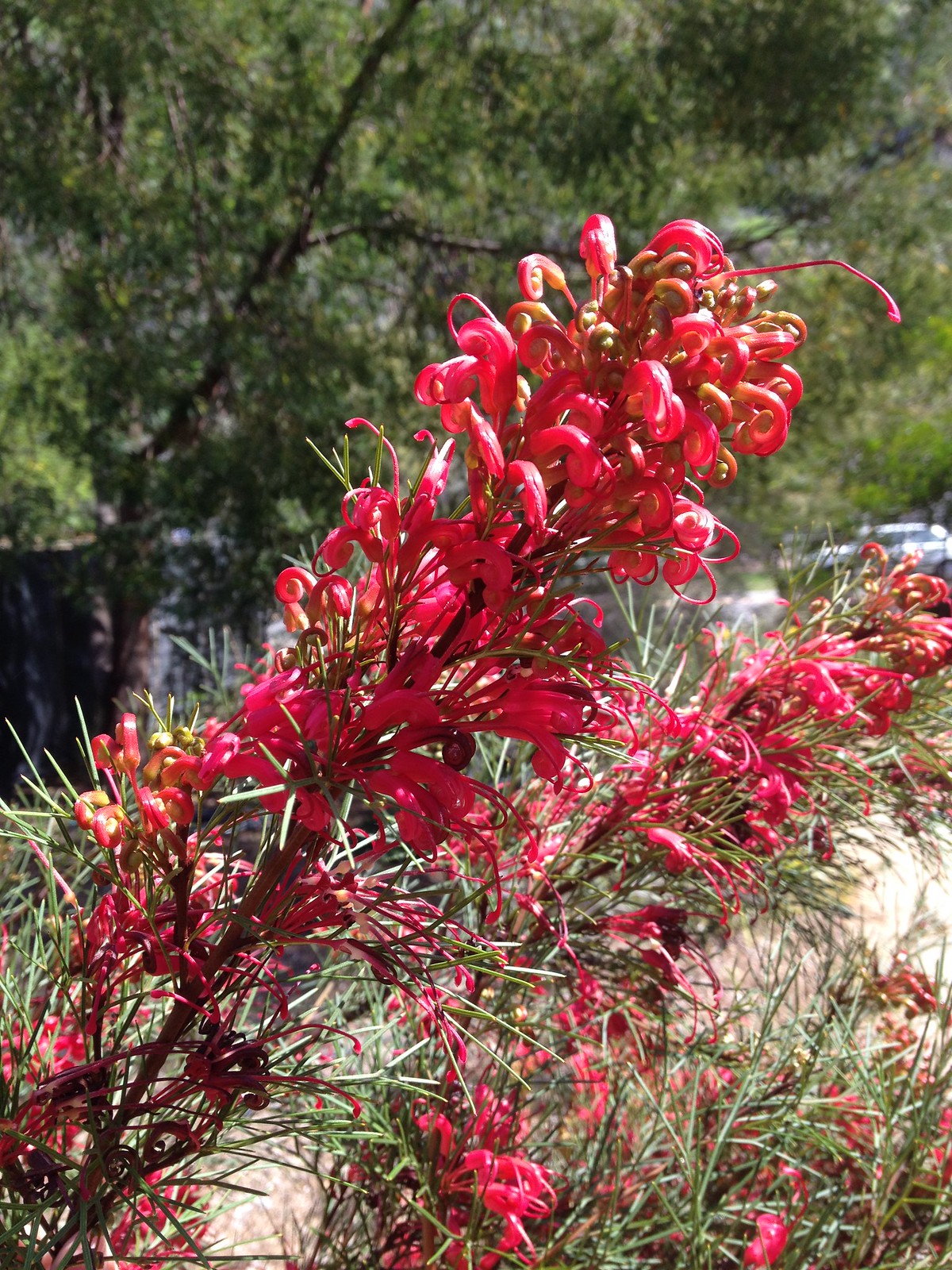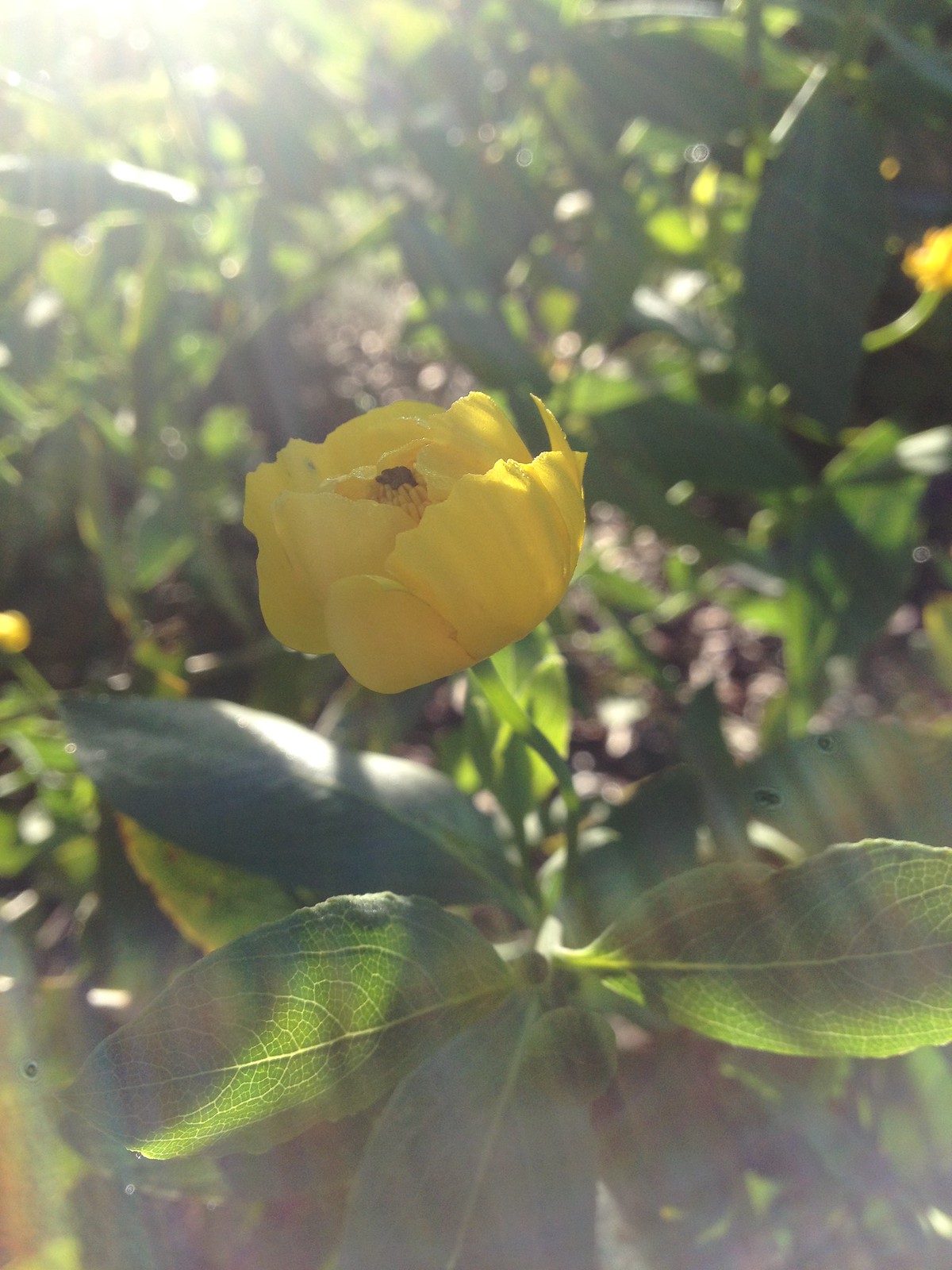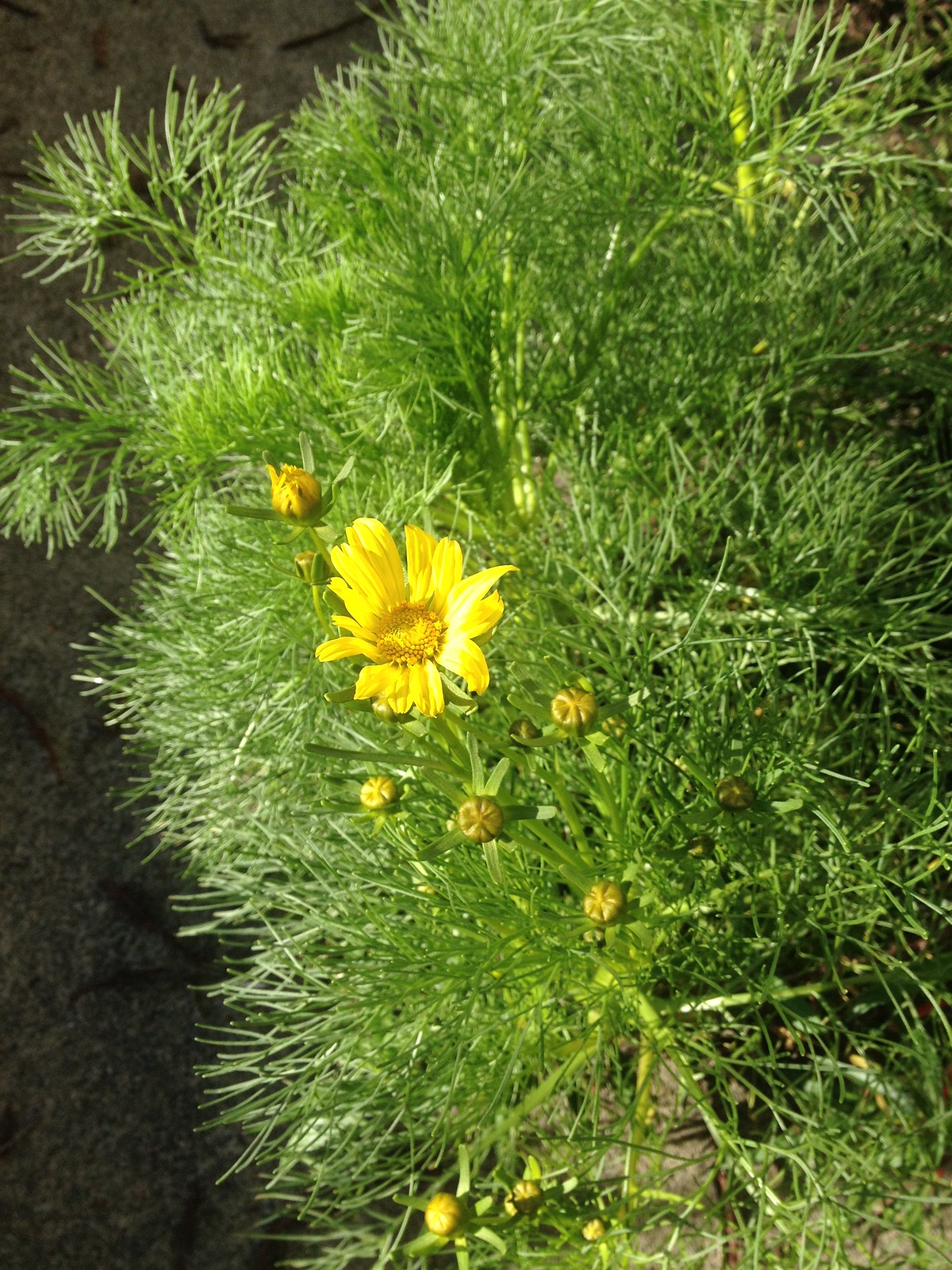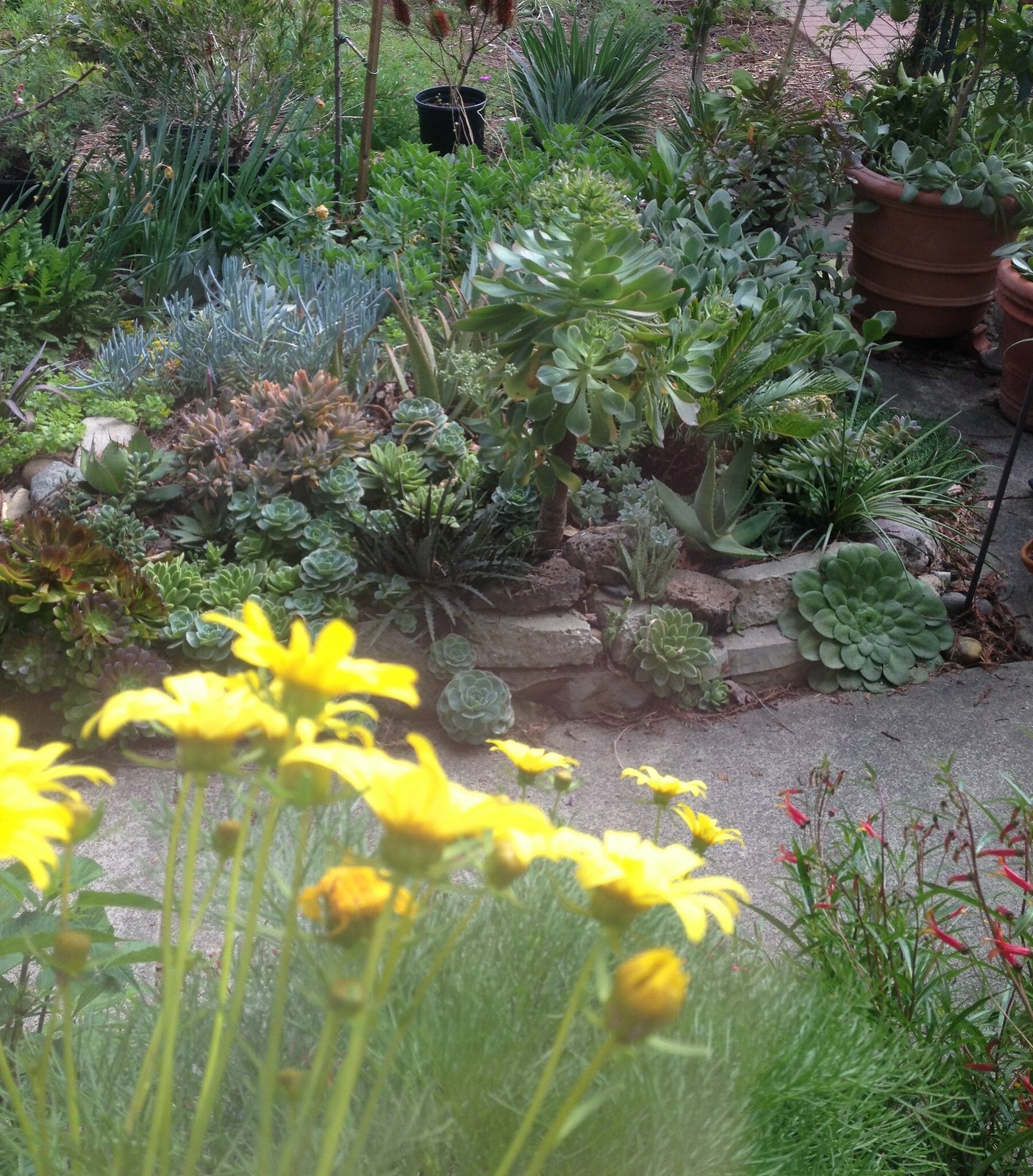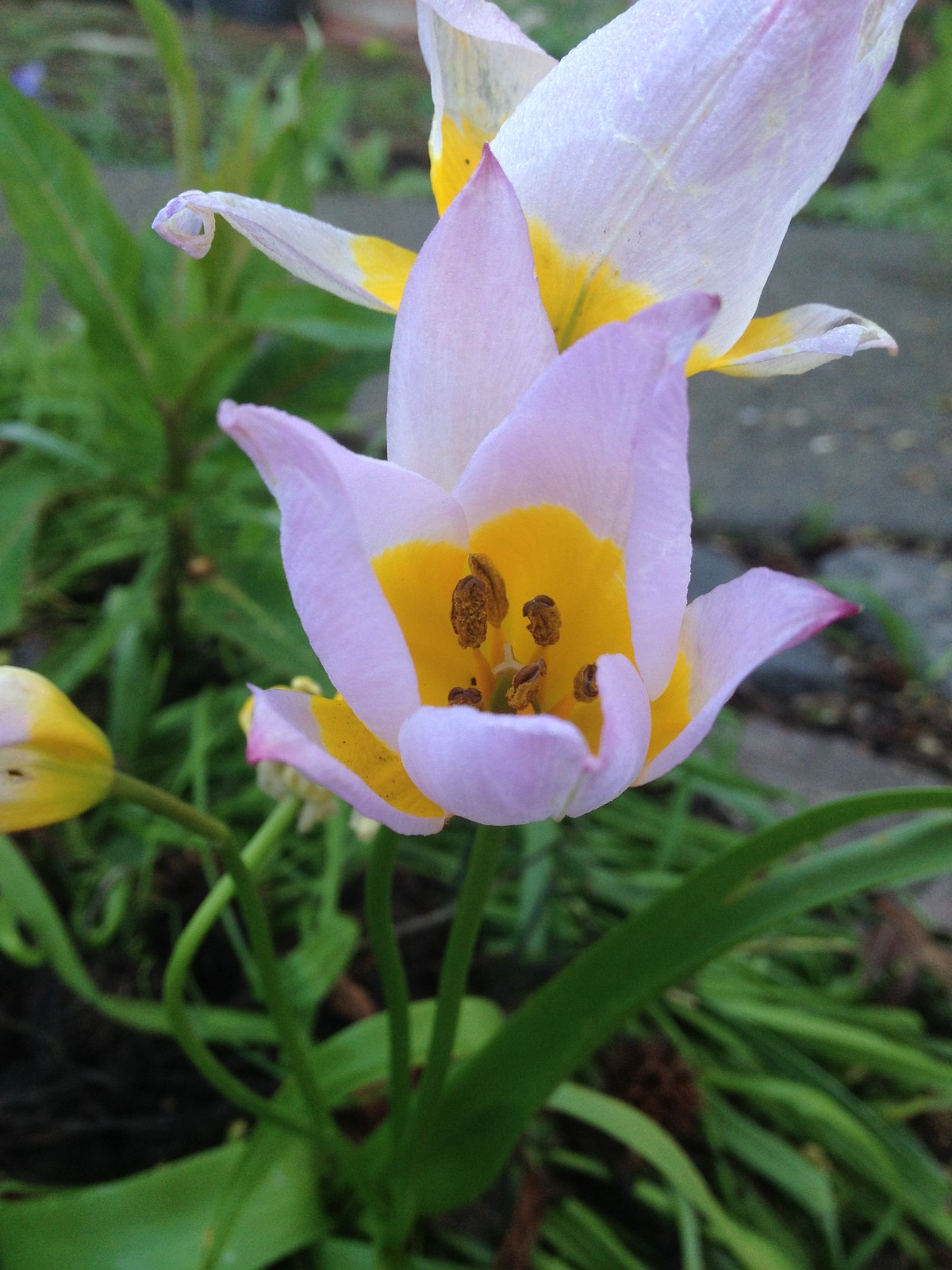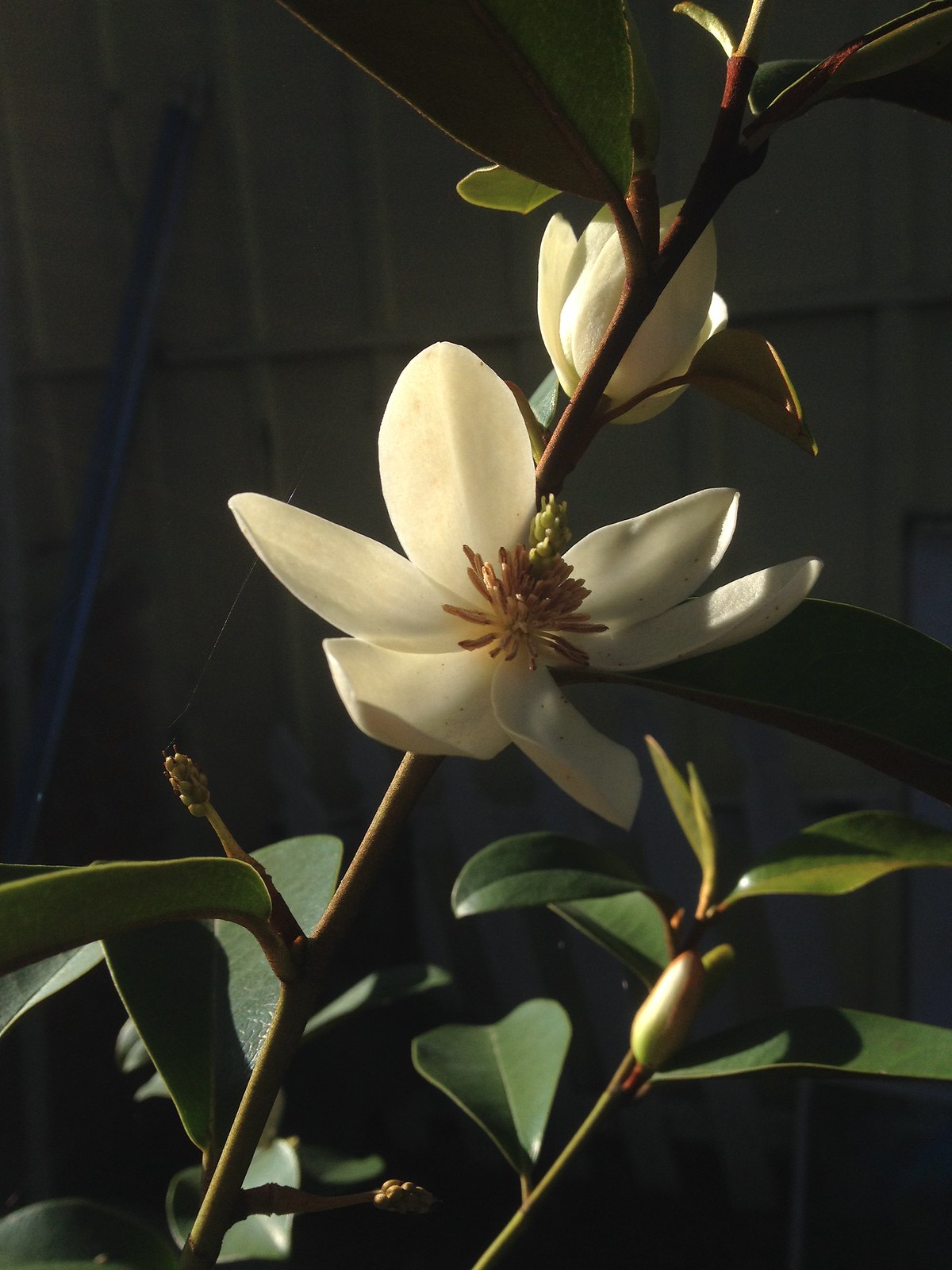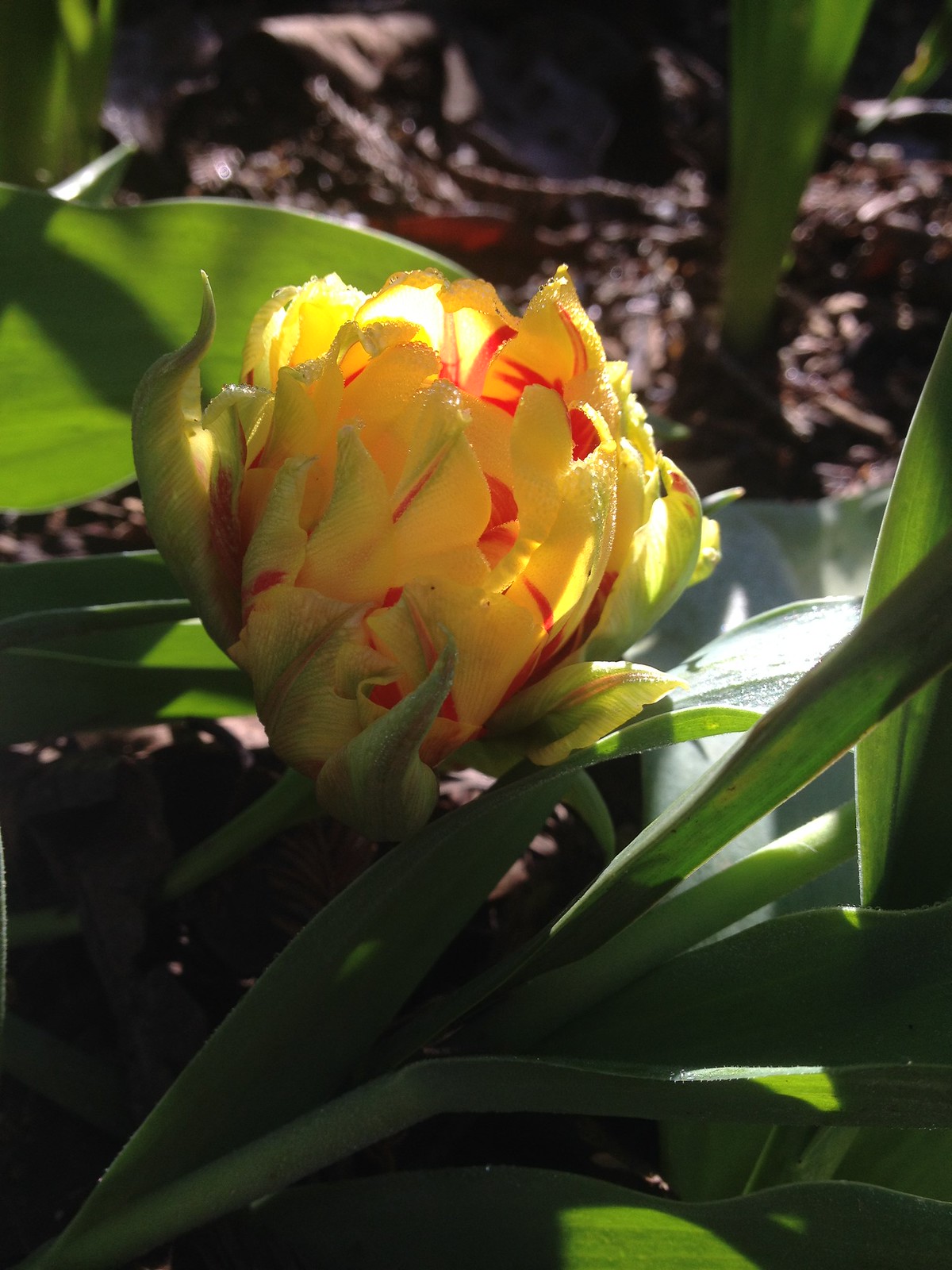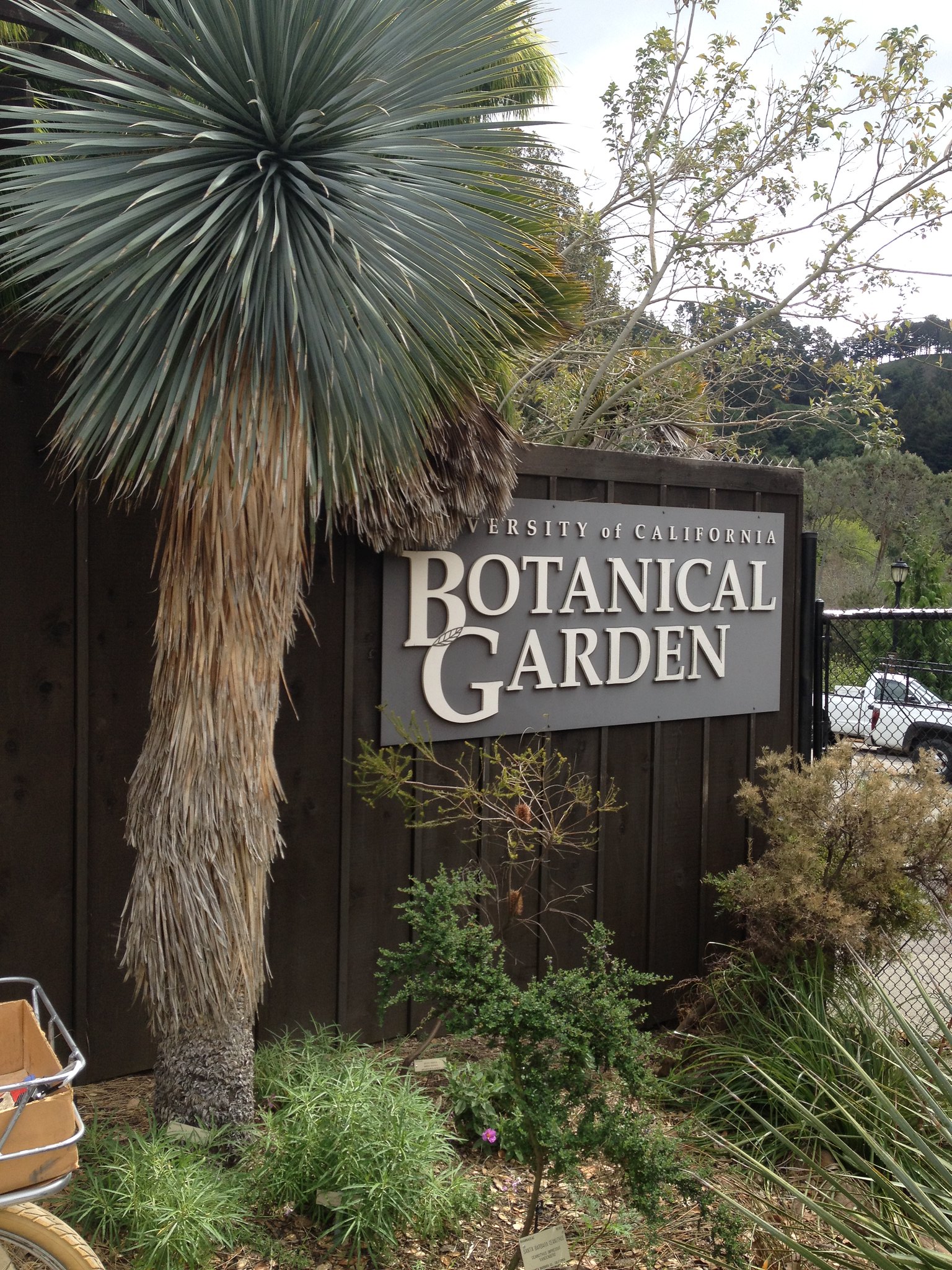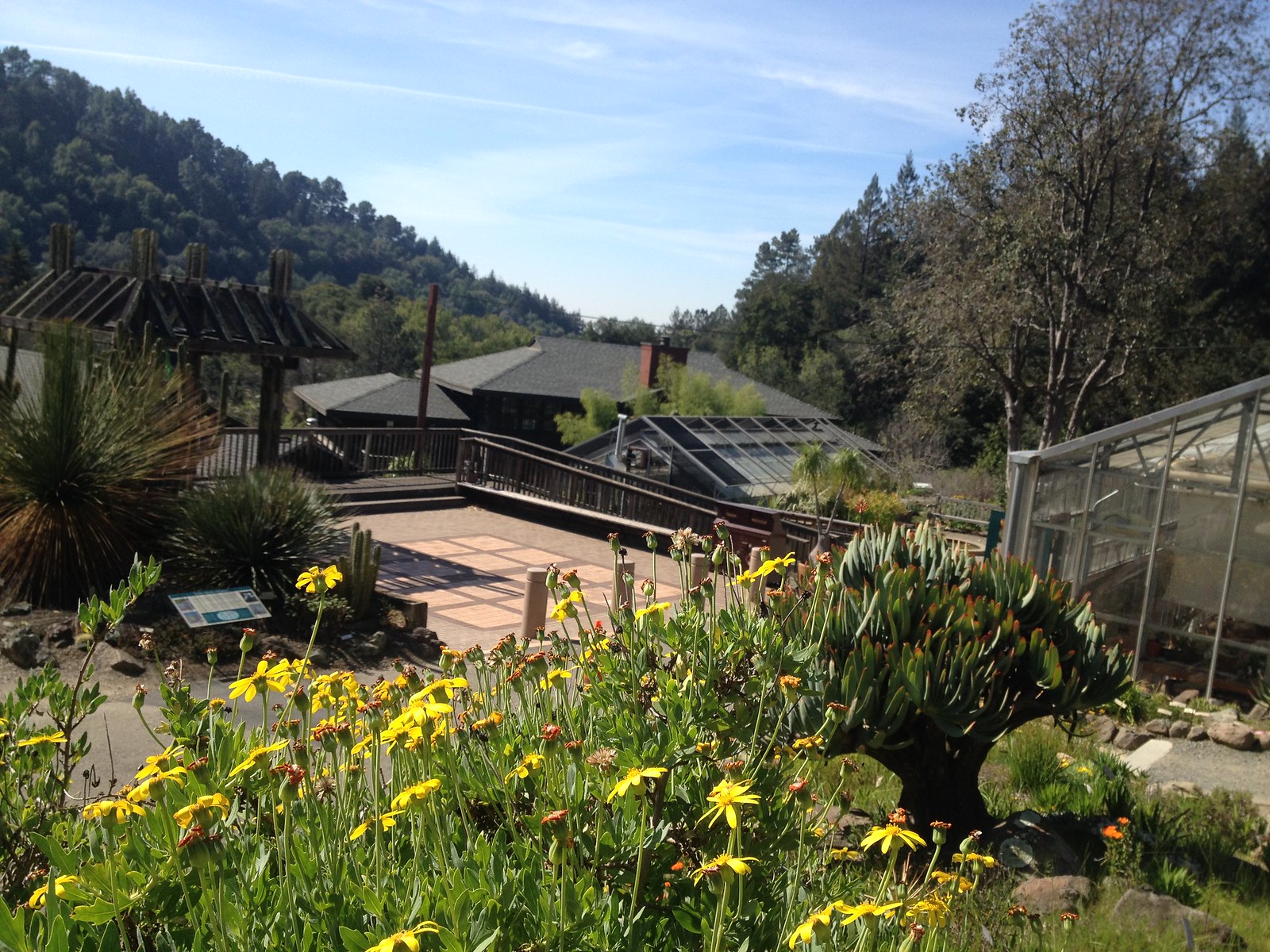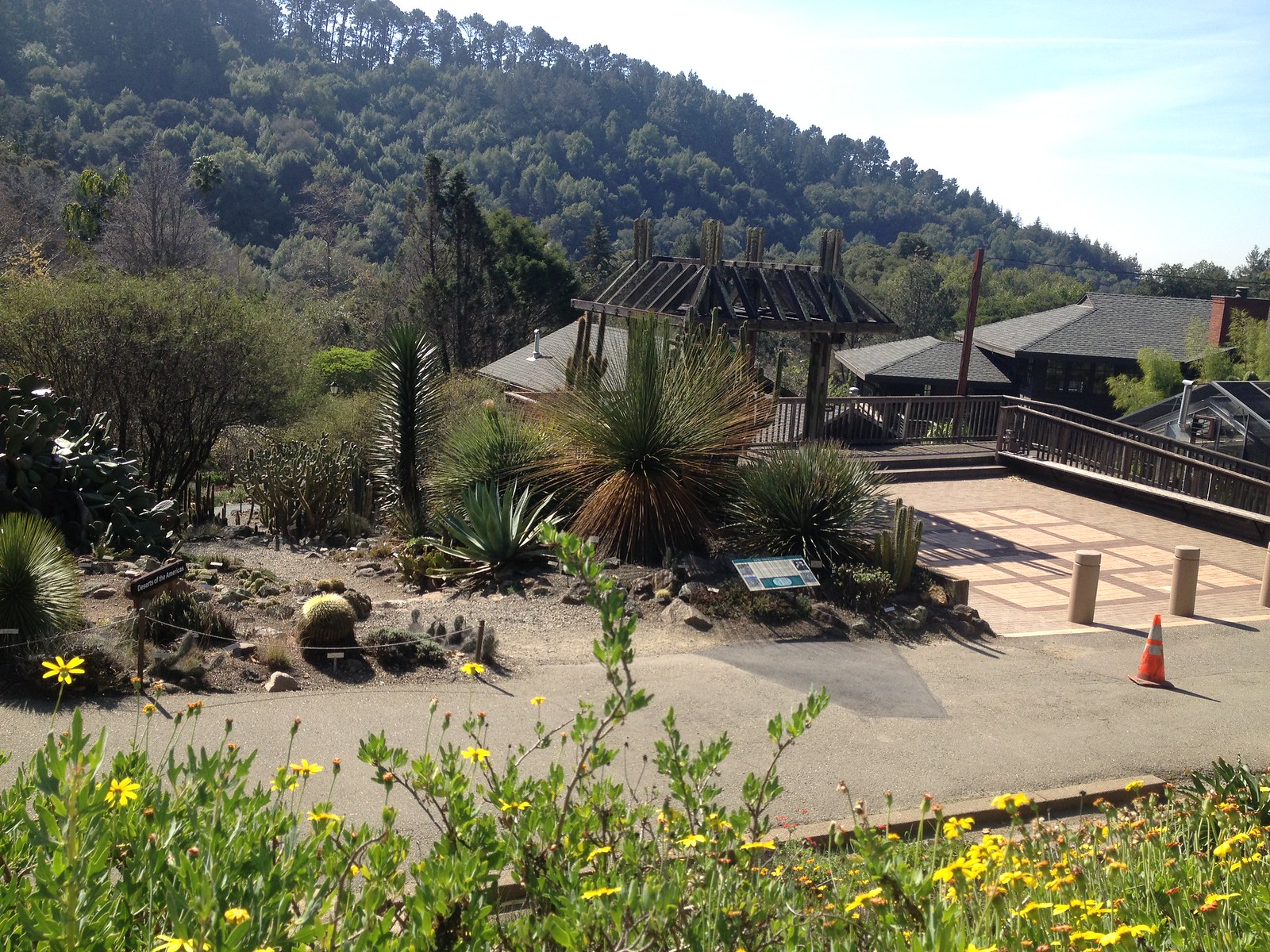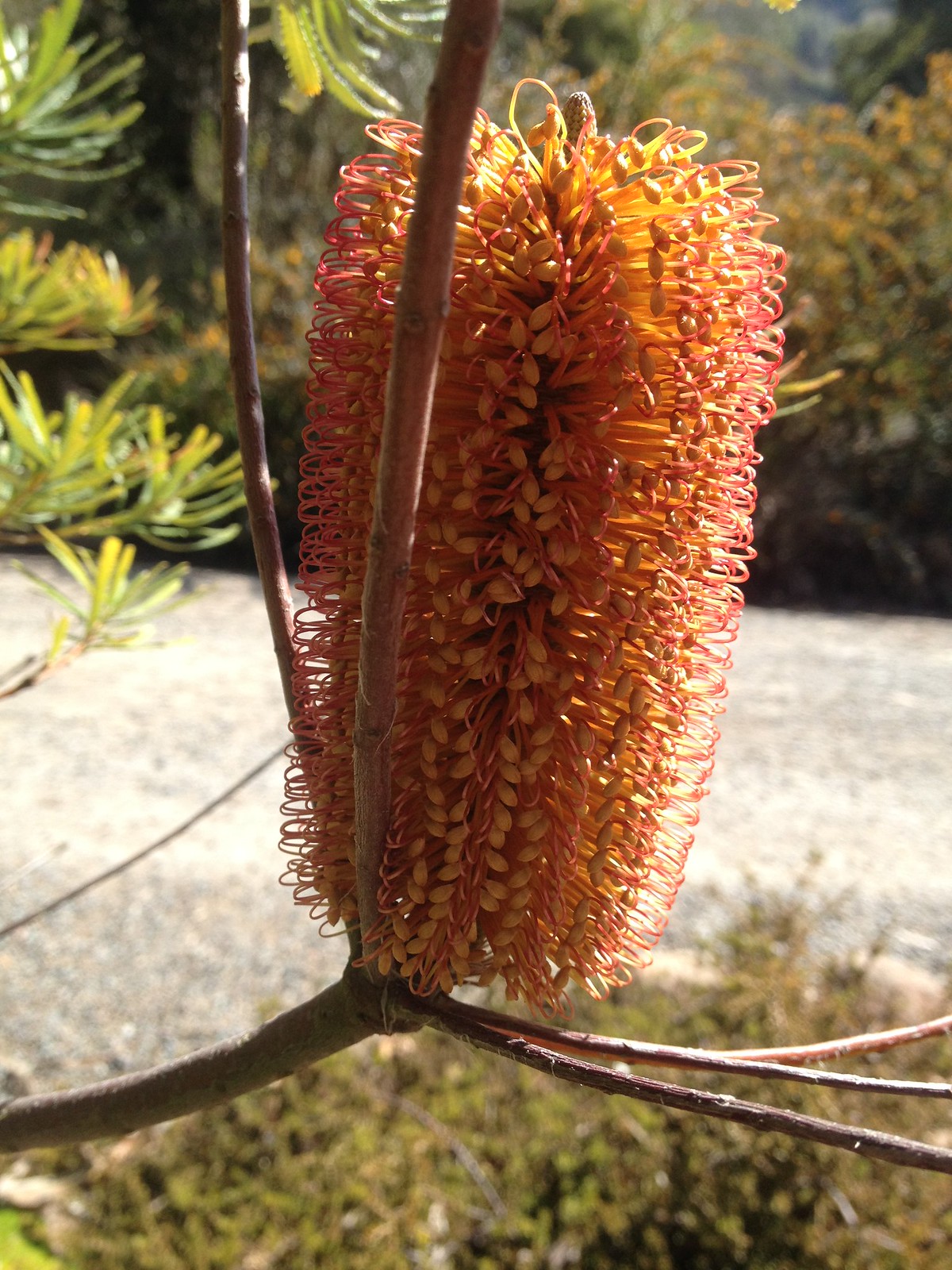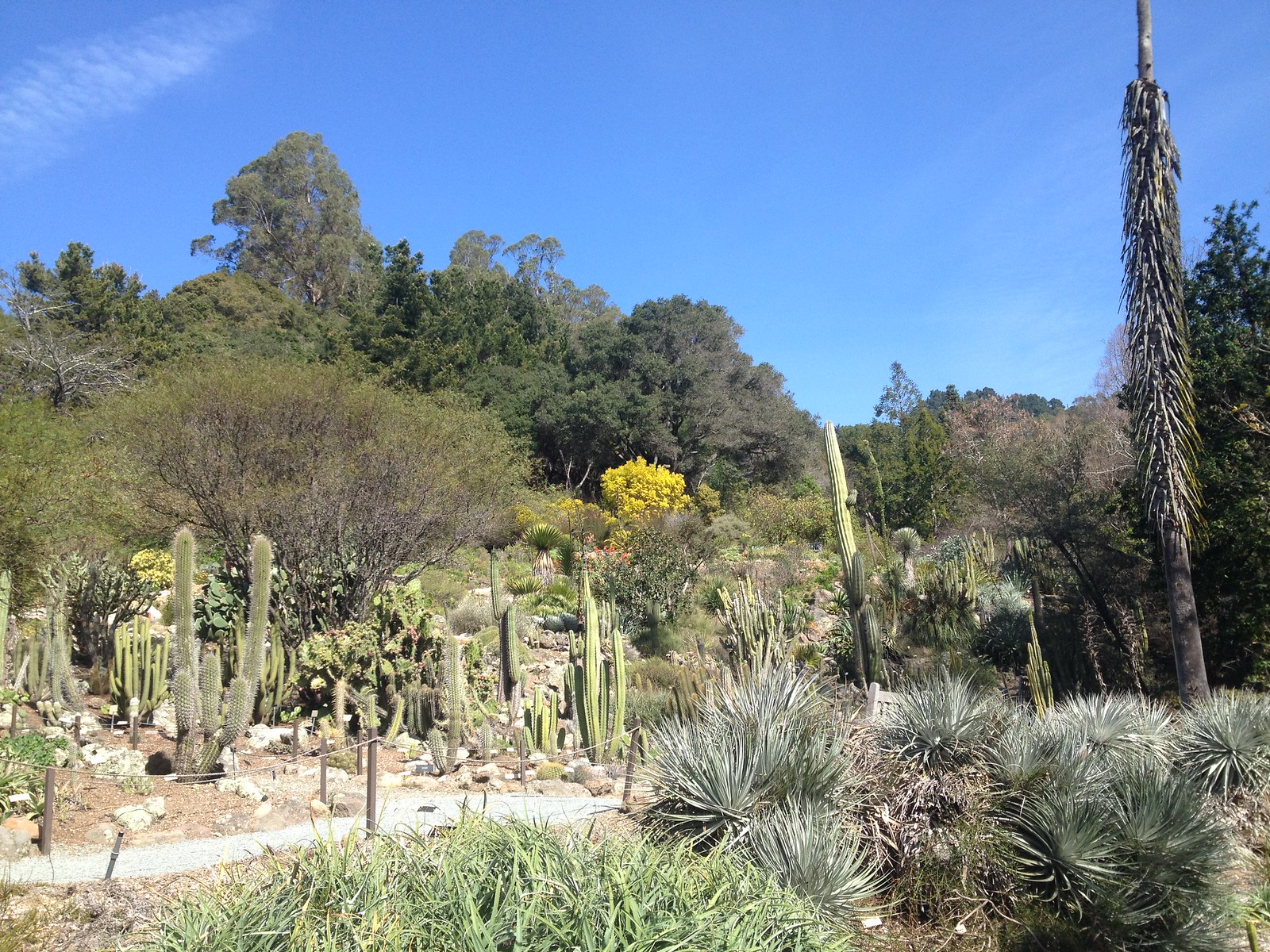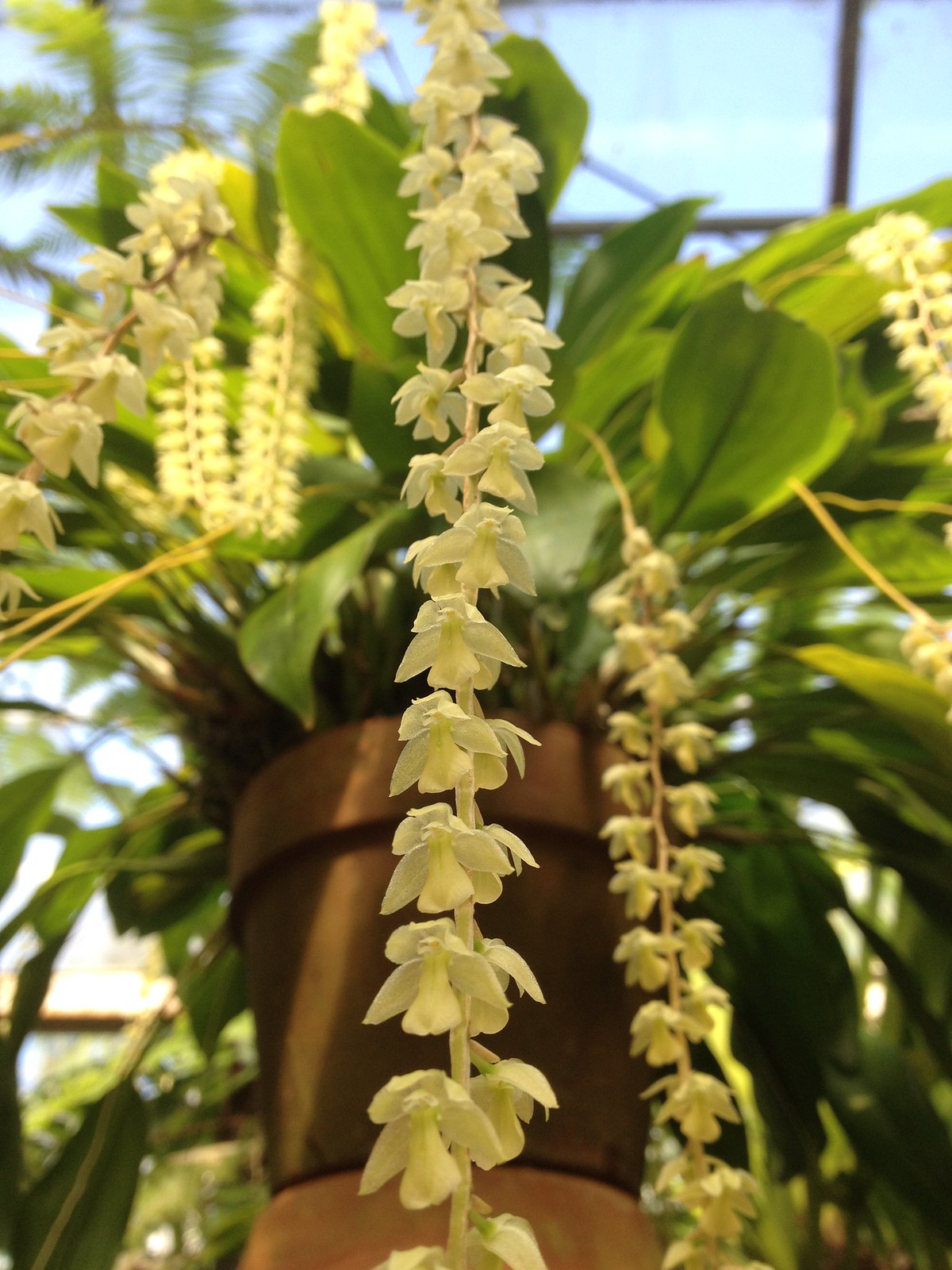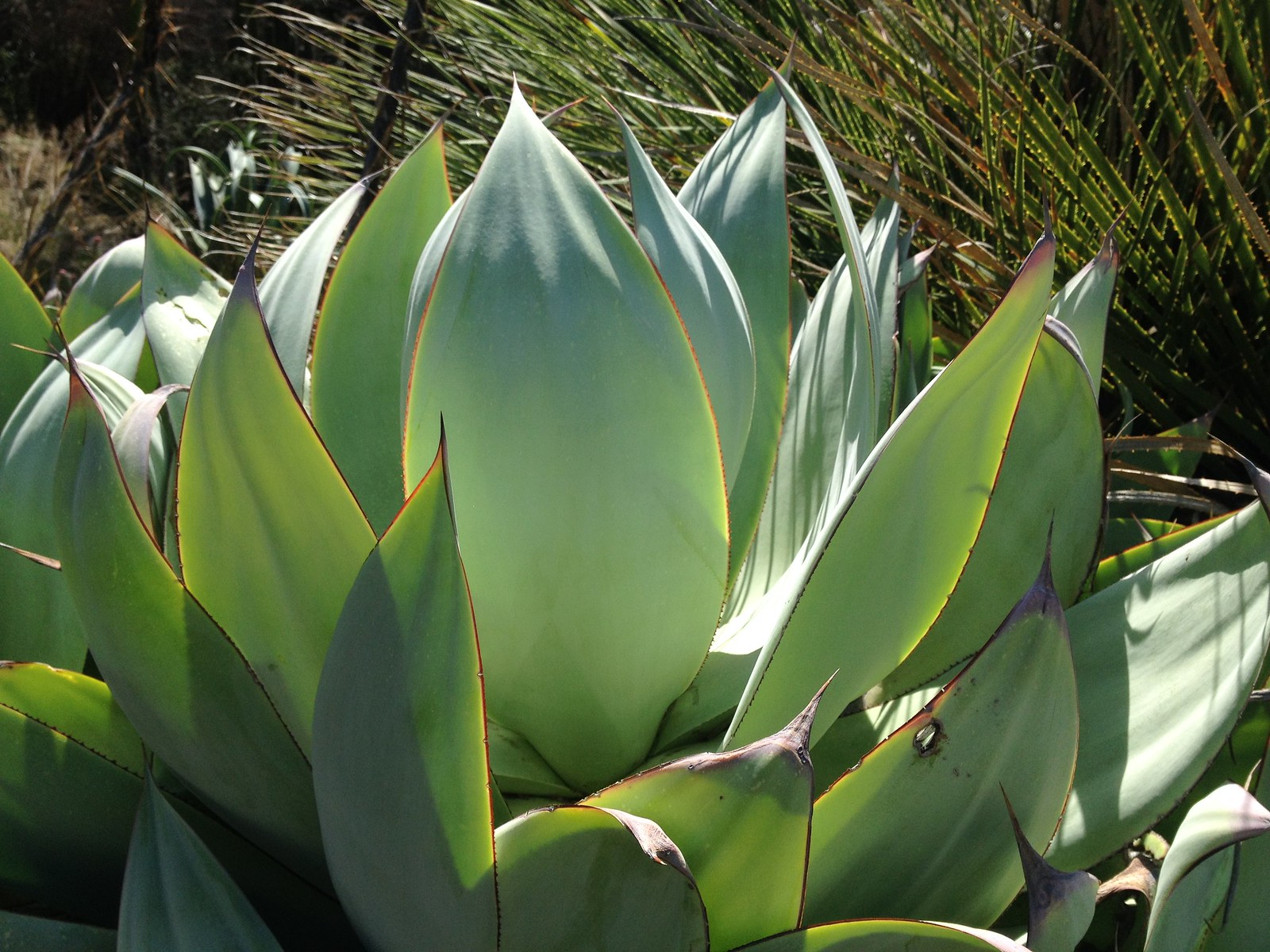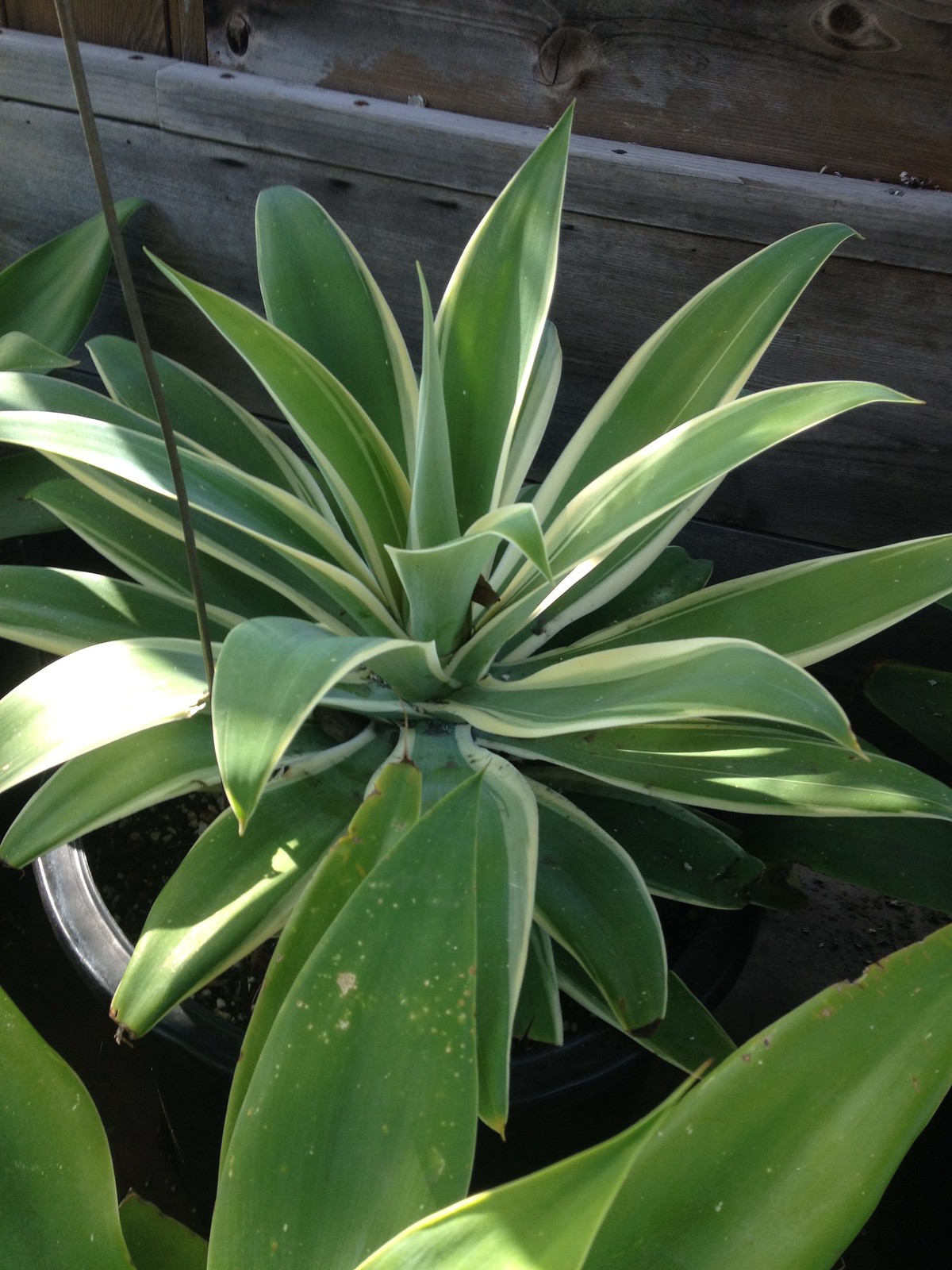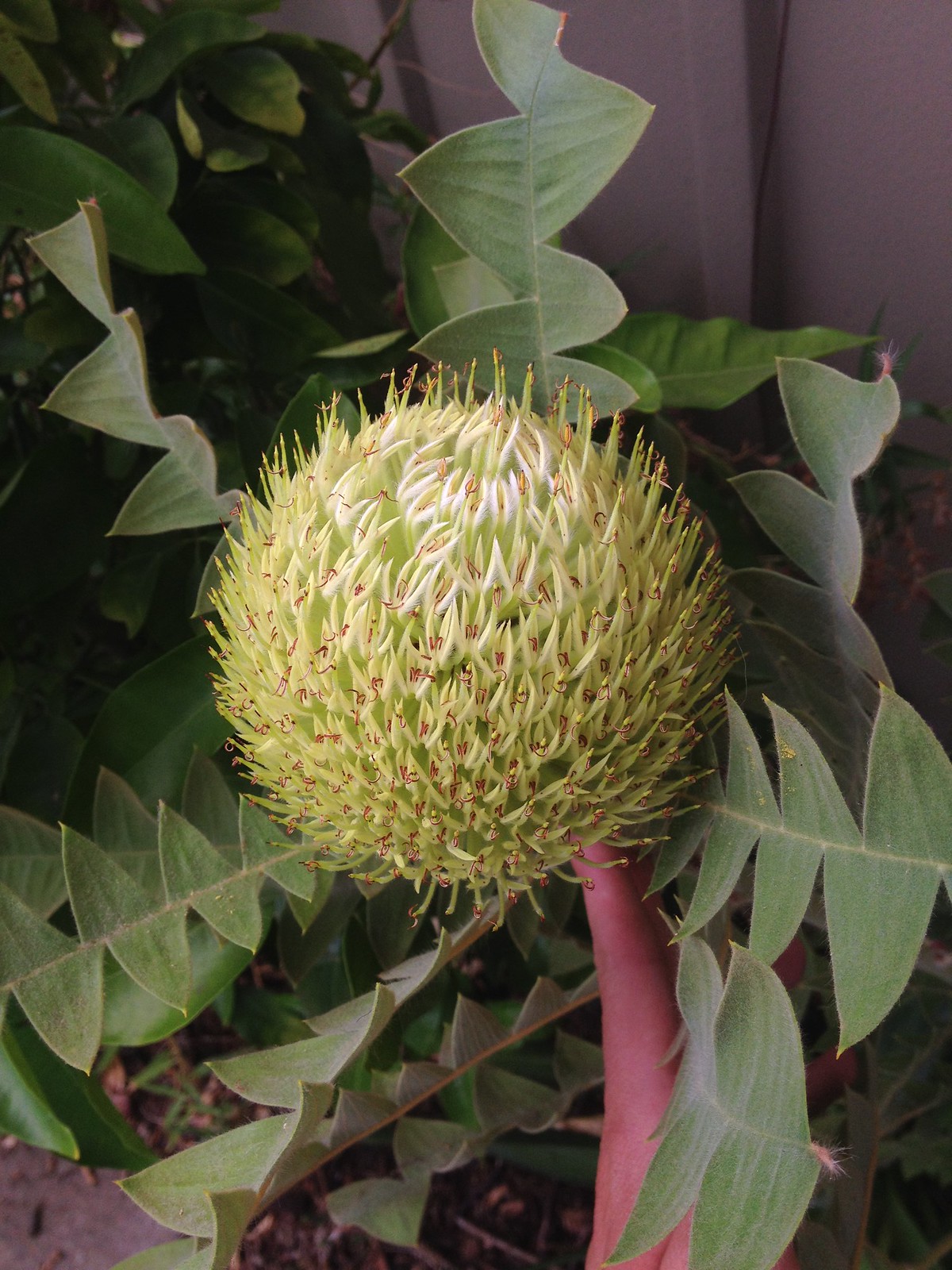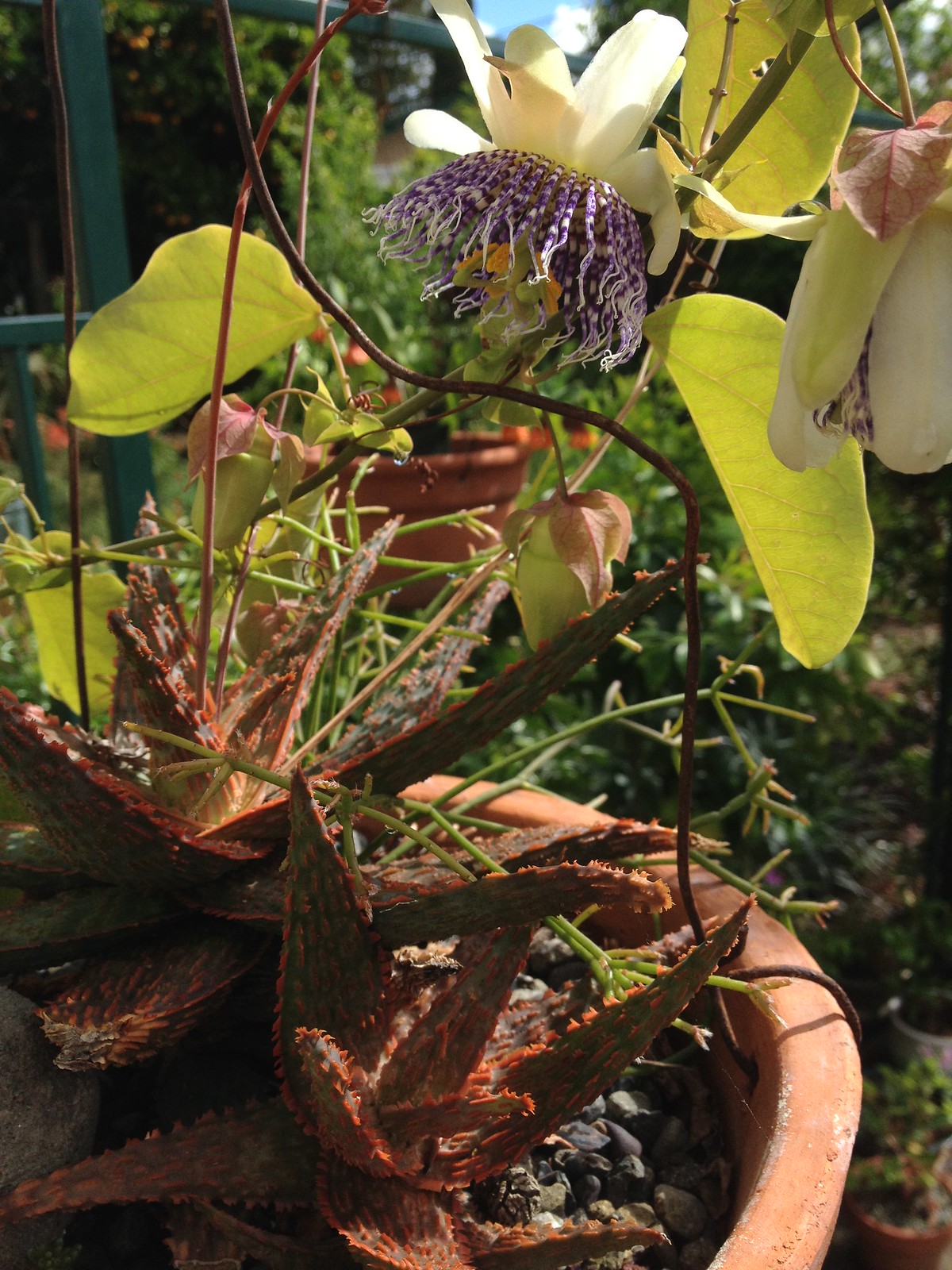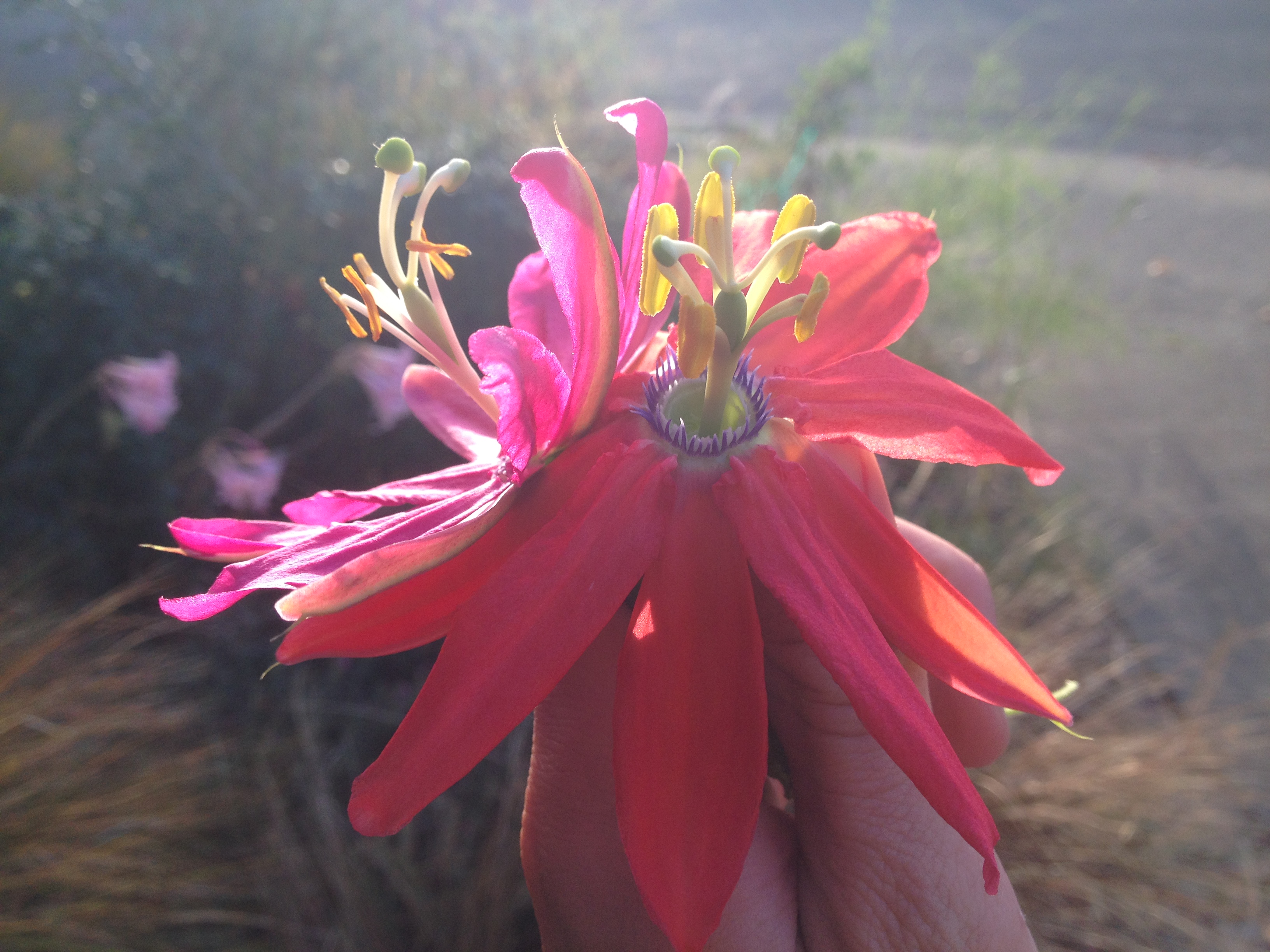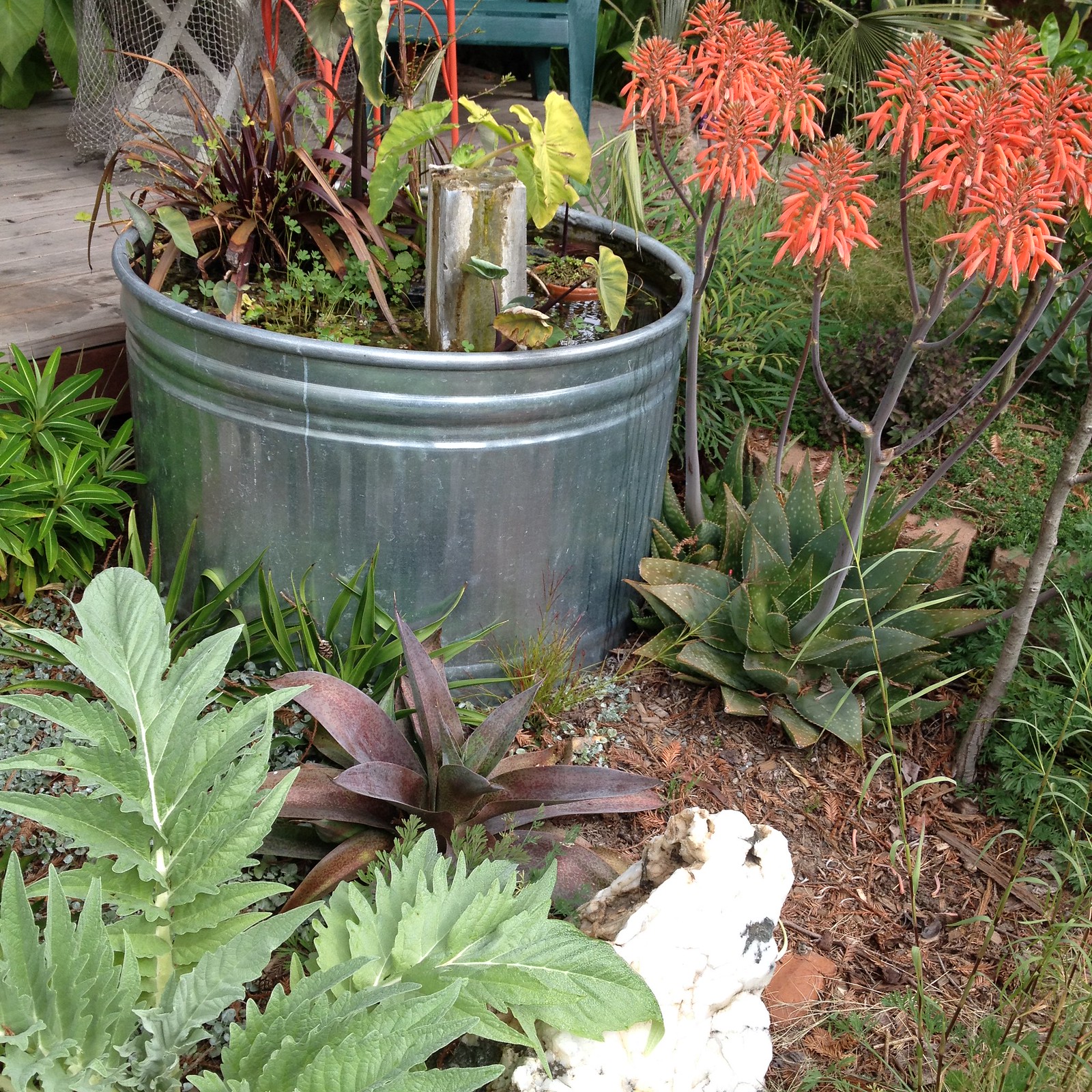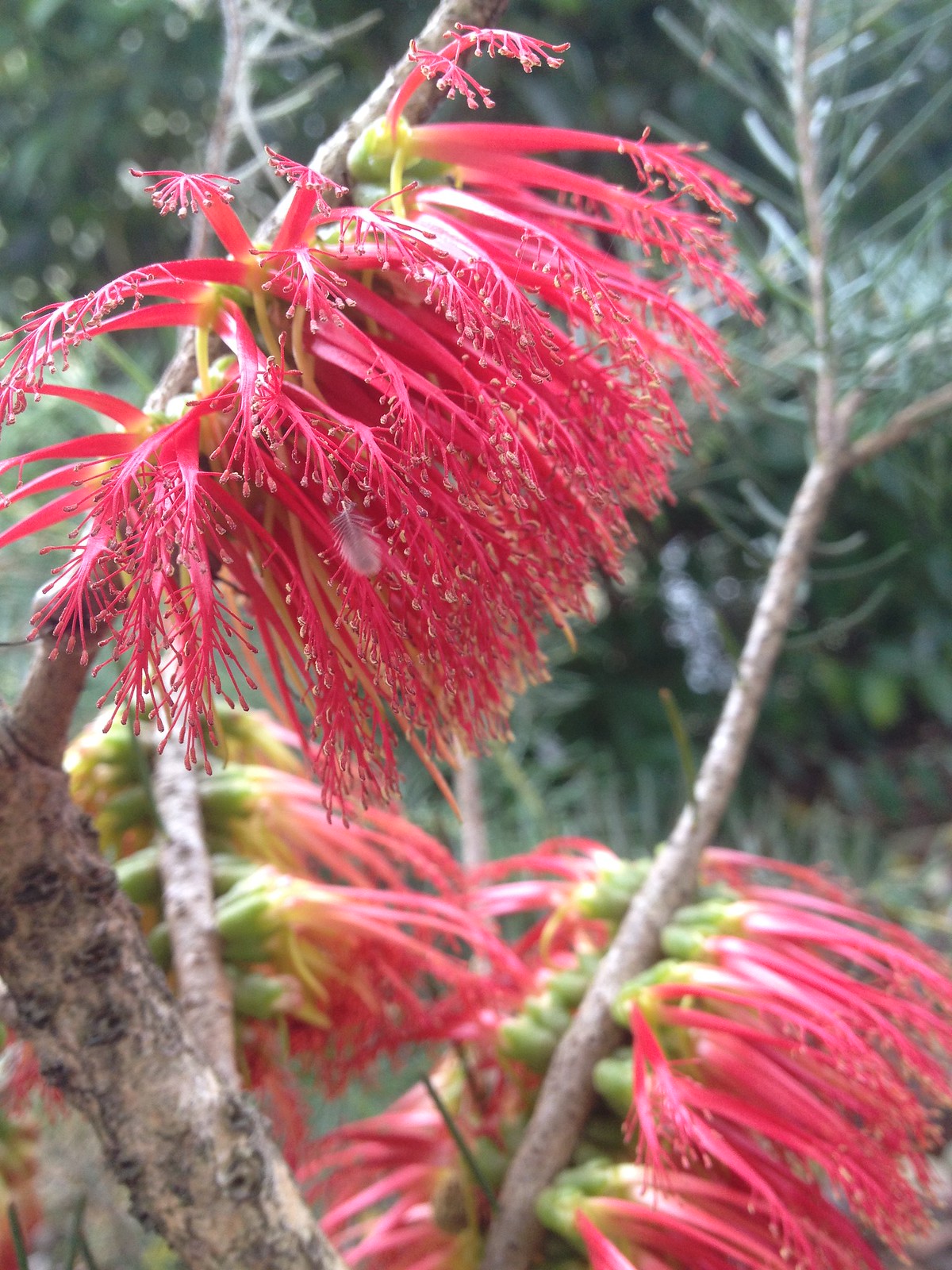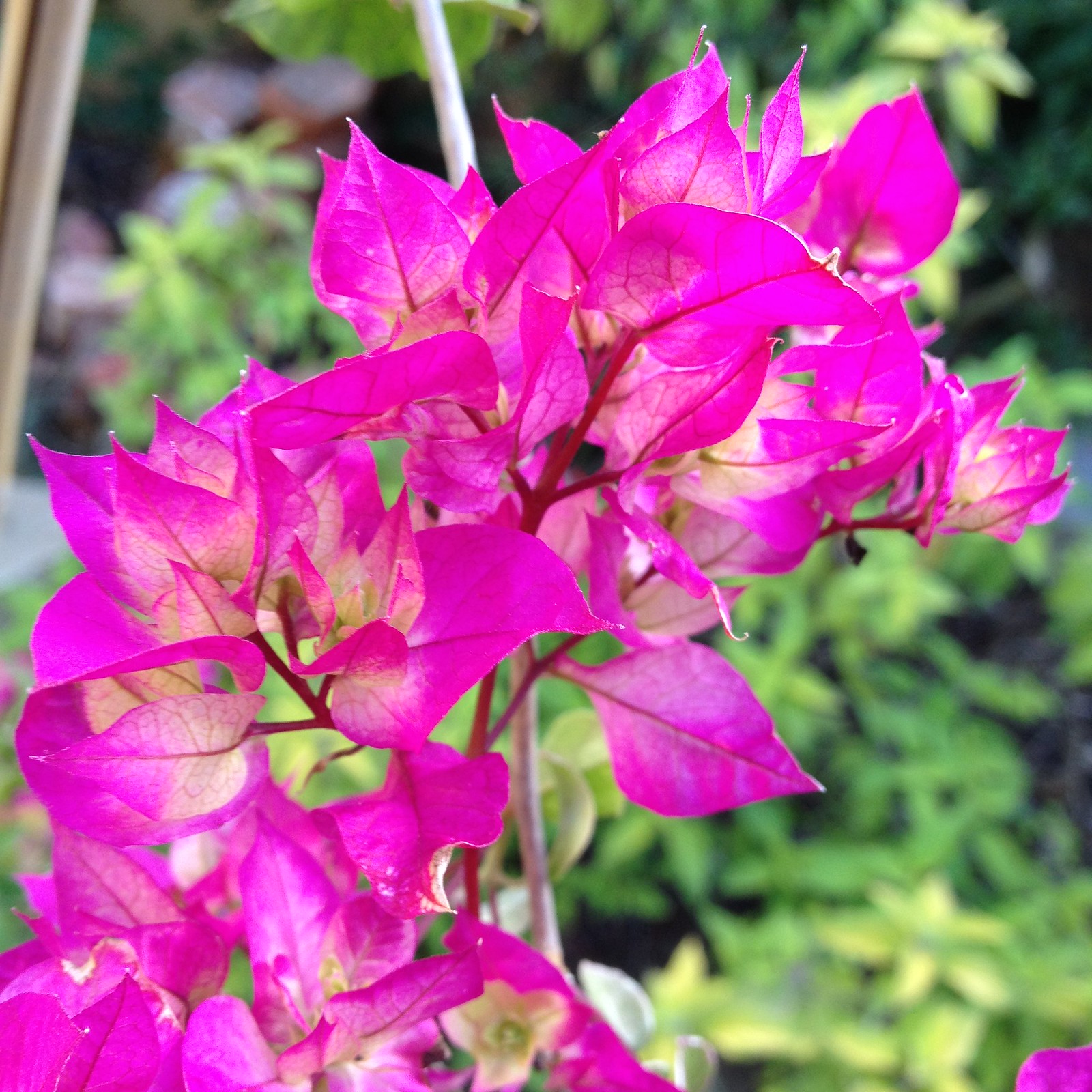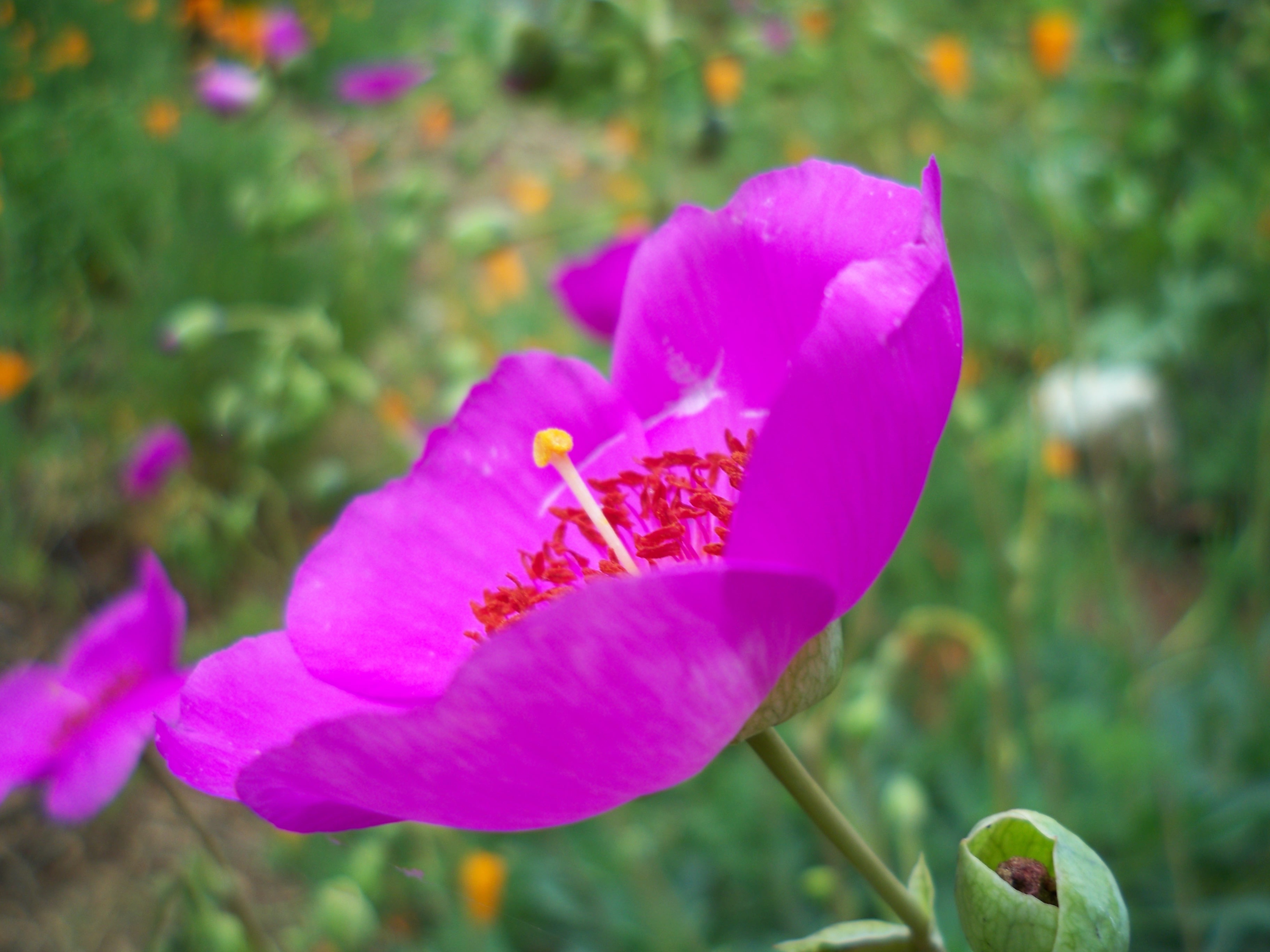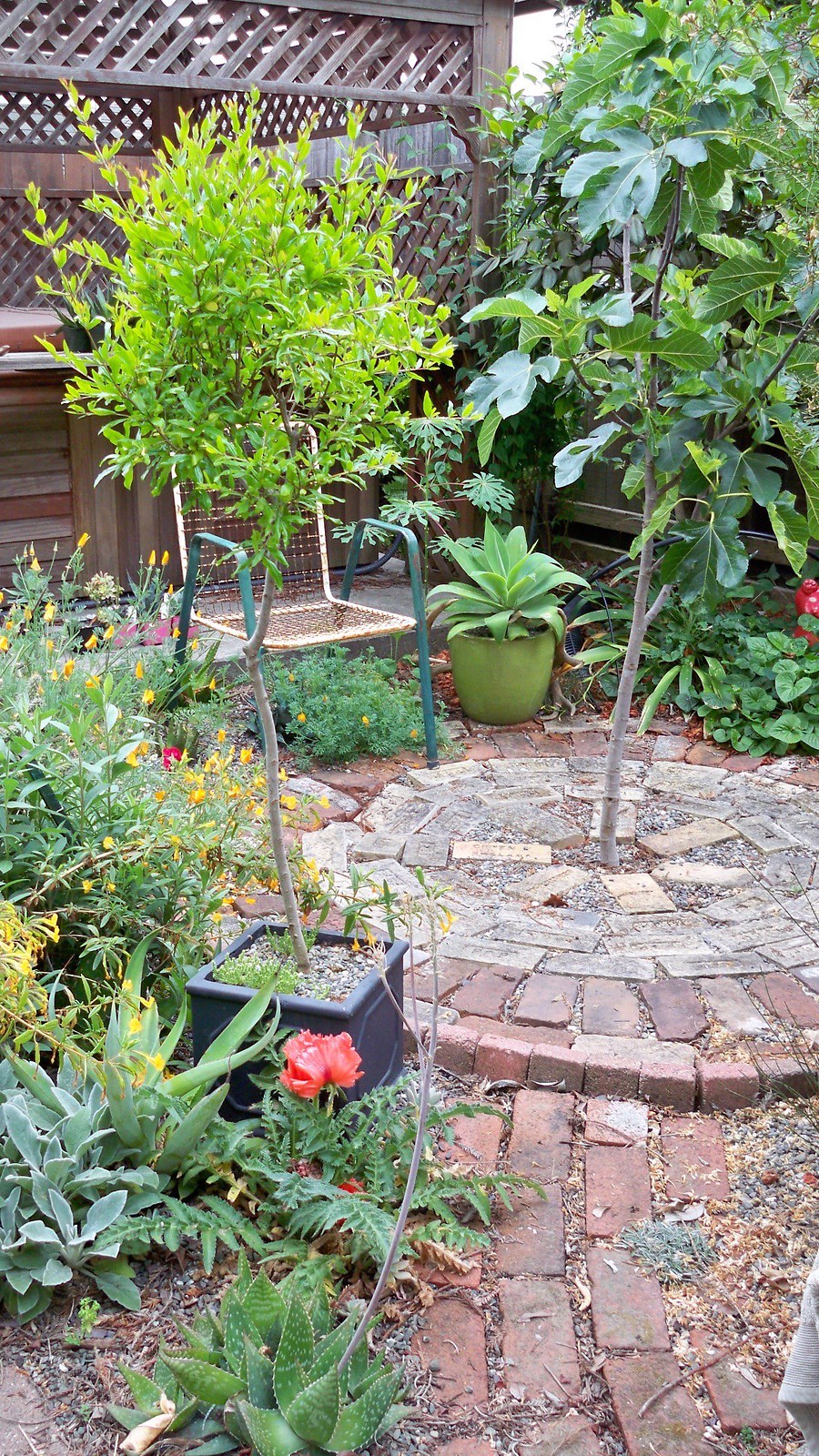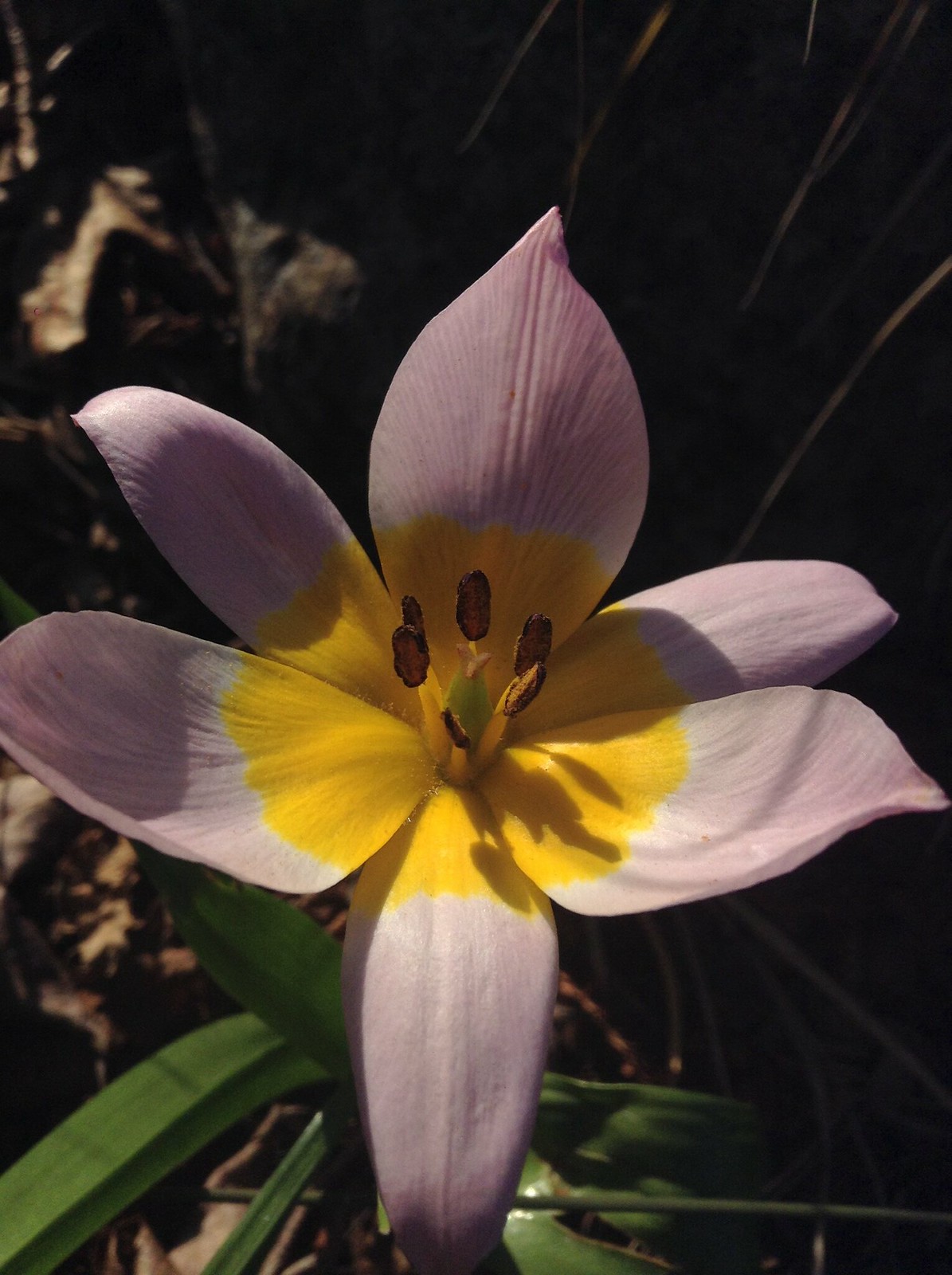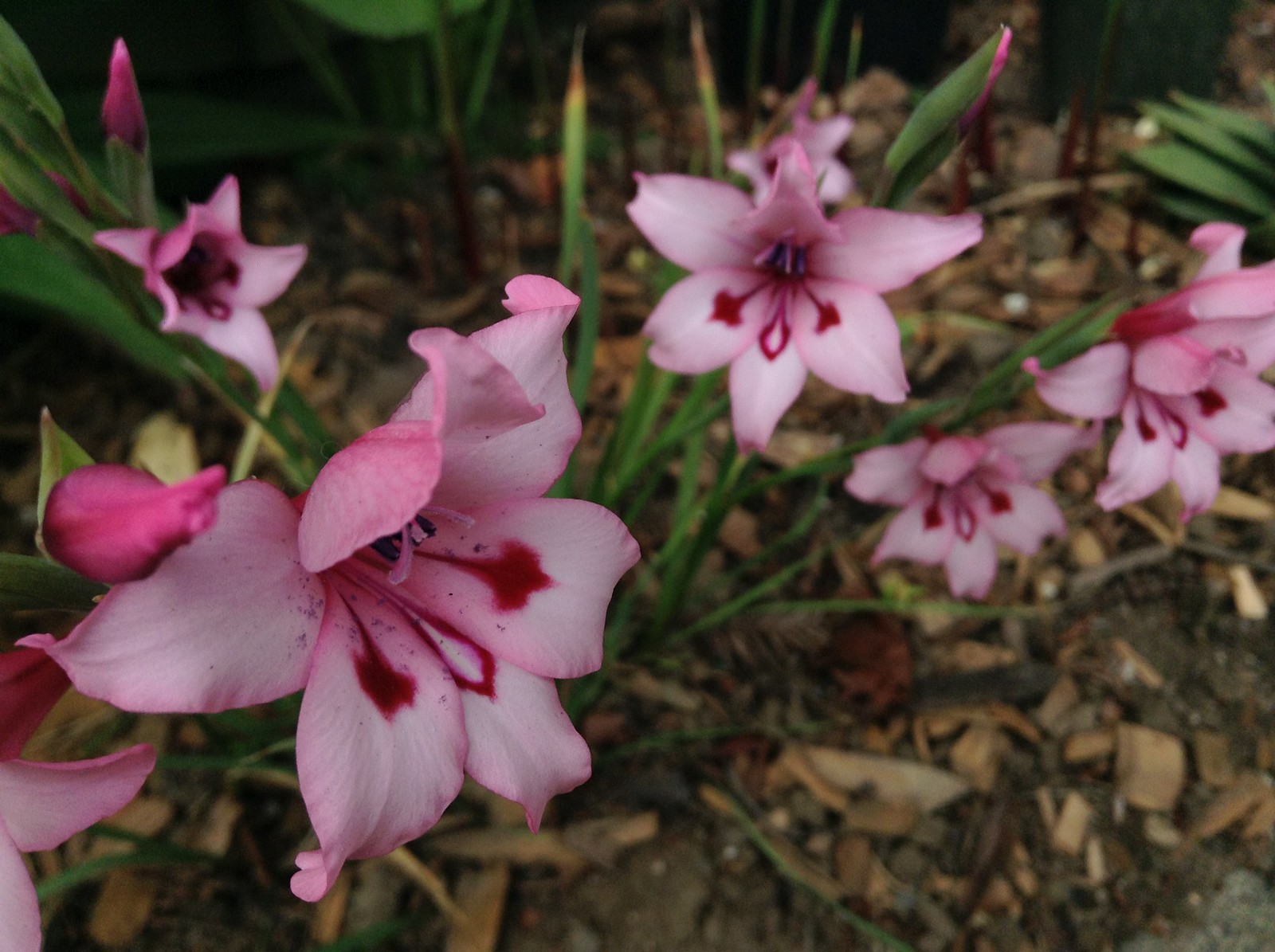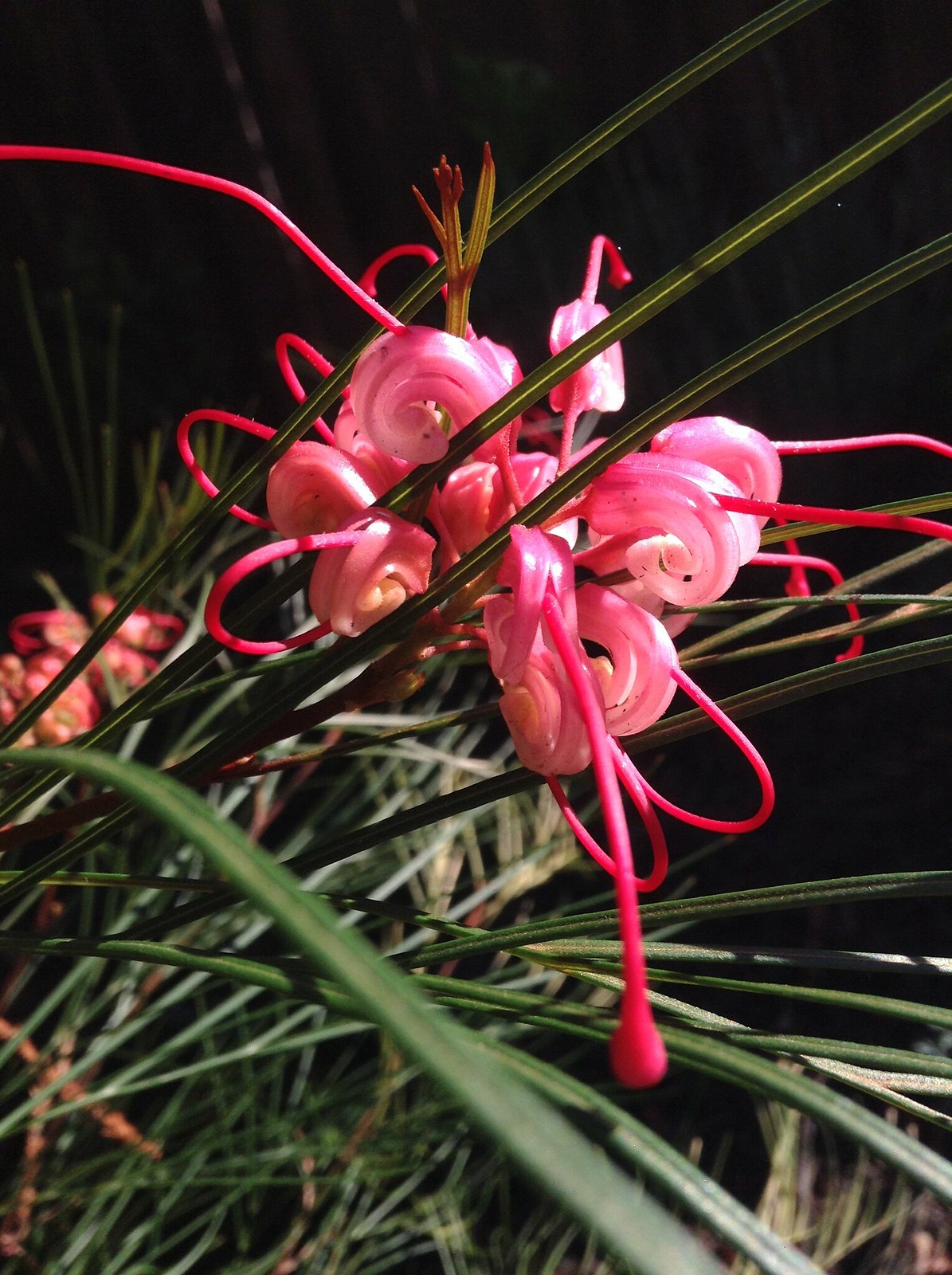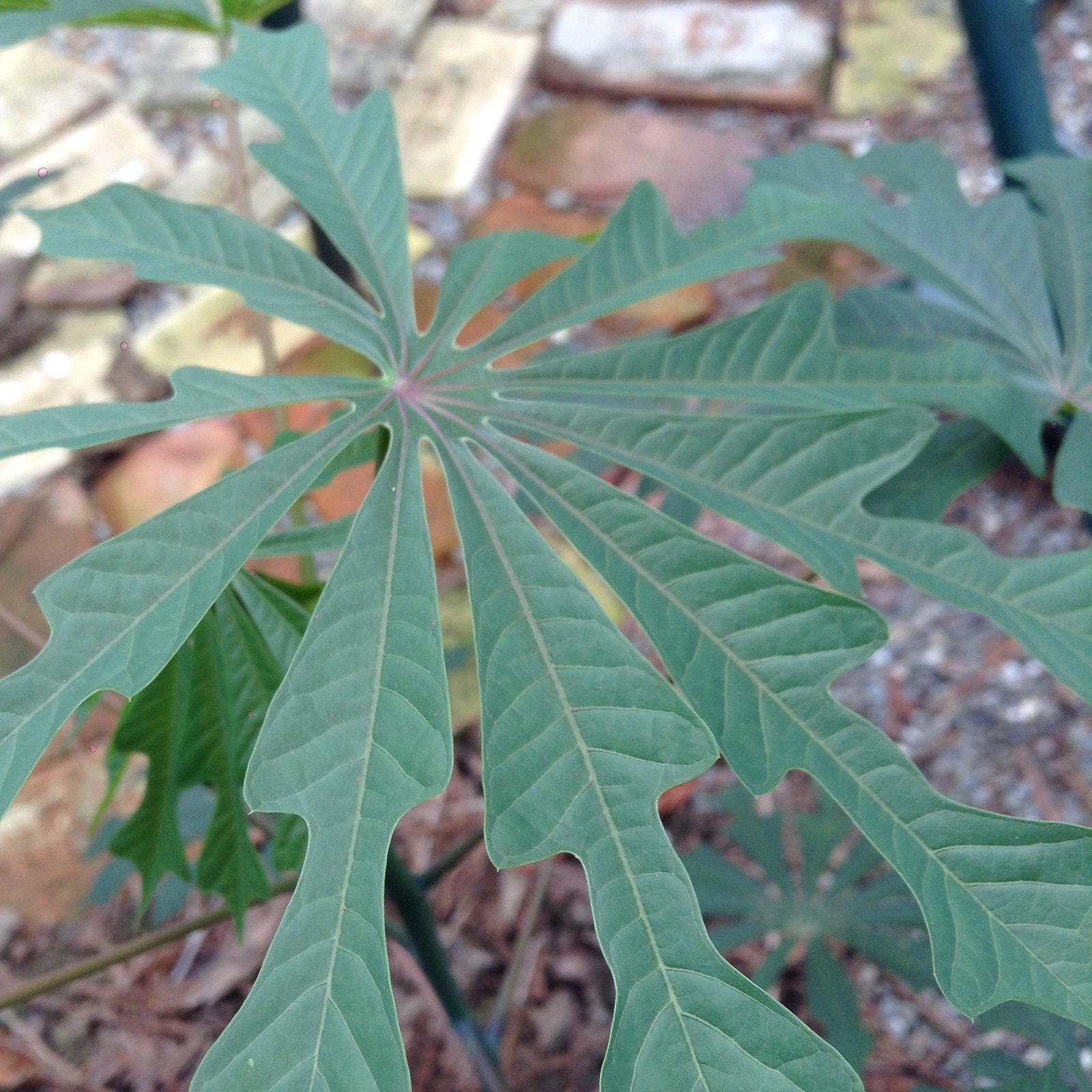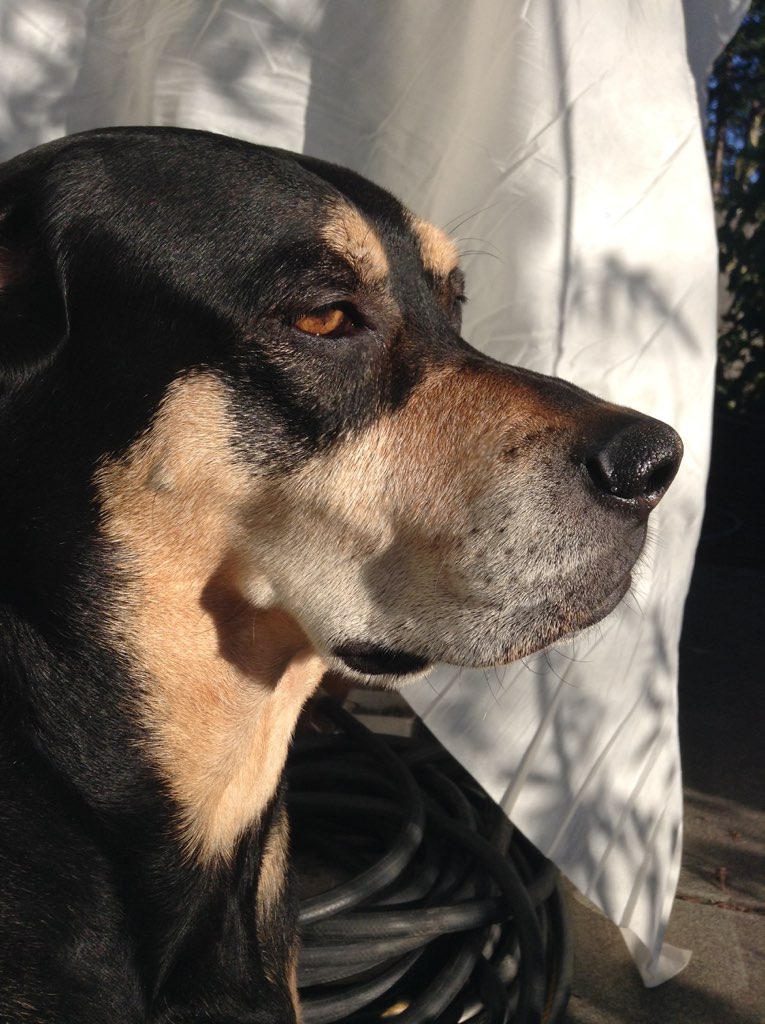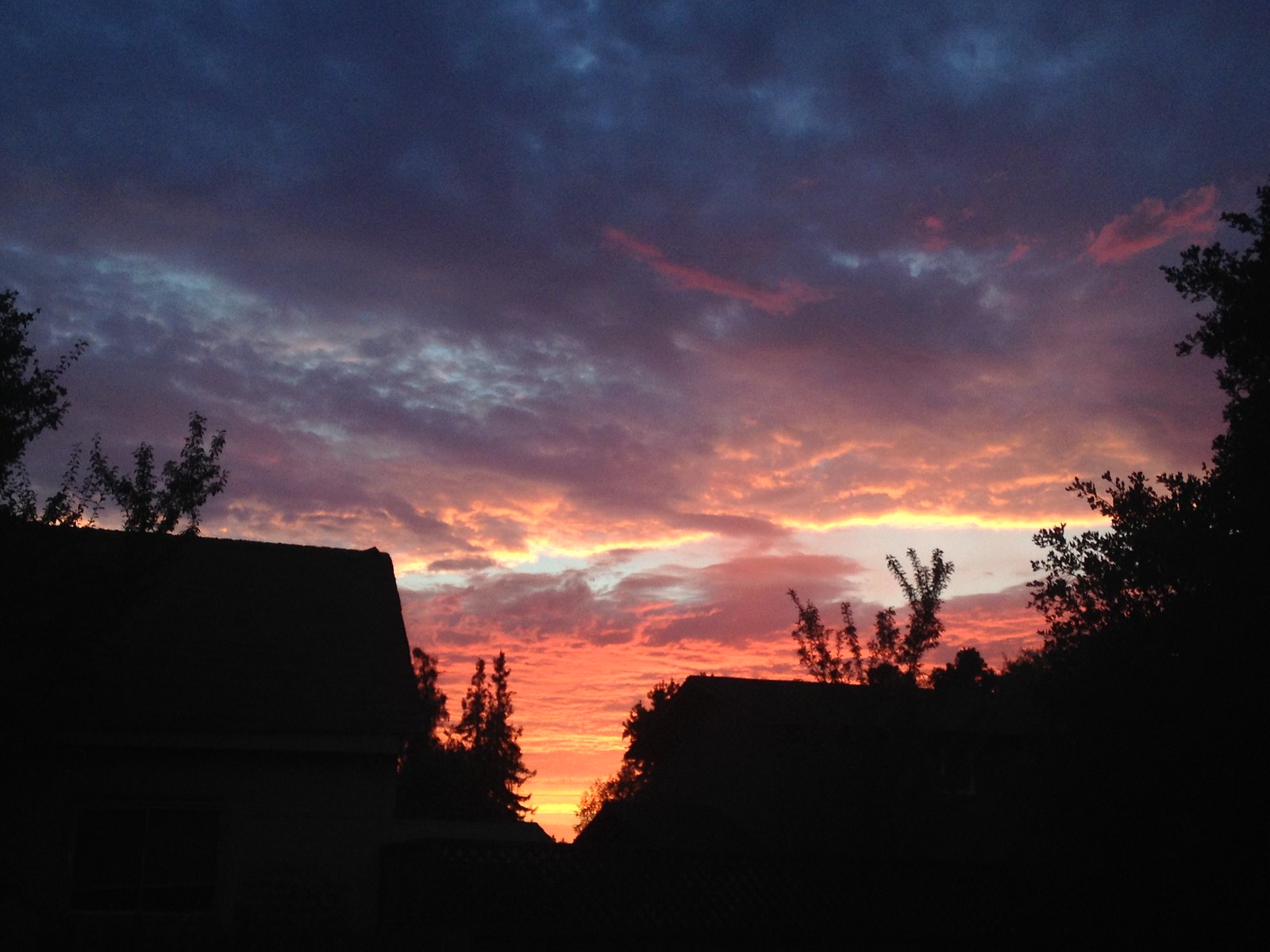I’ve earned that title. I spend a large chunk of time googling plants. More so when it’s winter and I can’t see my plants as often as I’d like, I suppose it’s like touring the World Wide Web’s garden from the comfort of wherever I am. Funny thing, when I’m not googling plants, I’m usually standing within ogling distance of them. The last couple of weekends have had a nice pattern to them: Both weekends were spent at botanical gardens. We even went to the San Francisco Botanical Garden twice in two weekends, which is only interesting because it had been almost a year since I’d last been. Last Saturday’s foray started pretty early, which made for really lovely lighting conditions.
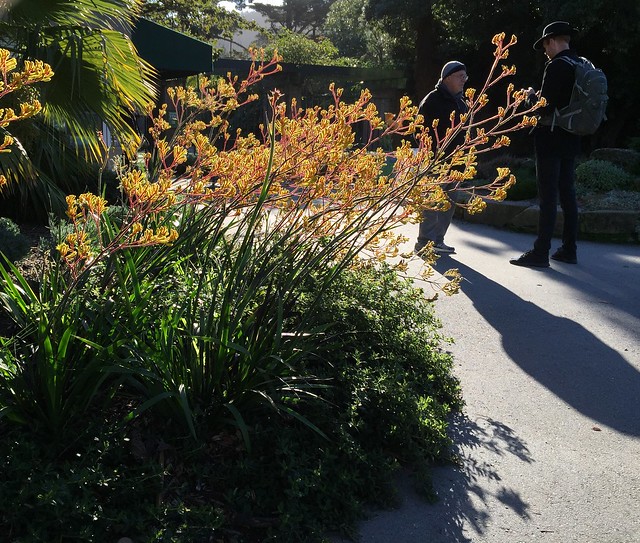 This clump of kangaroo paws was robust, perhaps due to the benign climate and sandy soils of San Francisco, a place where one can grow pretty much anything that doesn’t require heat. I’d love to try it here in Oakland, but I seem to have trouble locating the taller varieties. Not sure how they’d handle our heavier soil either.
This clump of kangaroo paws was robust, perhaps due to the benign climate and sandy soils of San Francisco, a place where one can grow pretty much anything that doesn’t require heat. I’d love to try it here in Oakland, but I seem to have trouble locating the taller varieties. Not sure how they’d handle our heavier soil either. 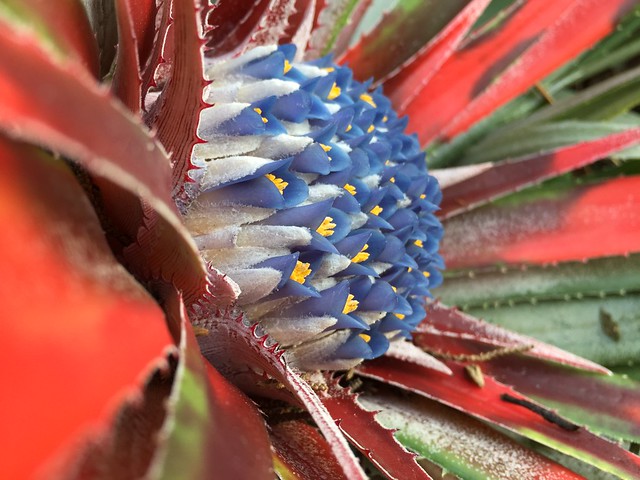 Fascicularia bicolor, this photo was taken a week prior, by the time we came back, the blooms were long gone. Someone mentioned in passing that the red in plants was an indication of toxicity. I’m not sure how scientifically accurate that is (not at all would be my guess), but I think that at least in the case of this plant it’s an indication that if you get too close, blood will be shed. As is the case with most terrestrial bromeliads. Admire from a distance.
Fascicularia bicolor, this photo was taken a week prior, by the time we came back, the blooms were long gone. Someone mentioned in passing that the red in plants was an indication of toxicity. I’m not sure how scientifically accurate that is (not at all would be my guess), but I think that at least in the case of this plant it’s an indication that if you get too close, blood will be shed. As is the case with most terrestrial bromeliads. Admire from a distance. 
Visual warmth on a sort of chilly morning came from this Arctotis, possibly ‘Pumpkin Pie’. I wouldn’t mind having a moderate sized patch of these. I’ve been admiring Arctotis in other gardens for their saturated flower colors in all shades, low growth, and silver foliage. Something to consider.
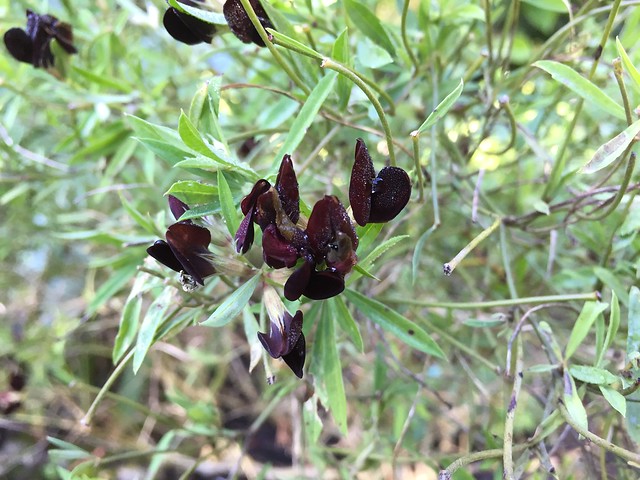 Lotus jacobaeus is one of those plants only a plant nerd could love. It’s also not that easy to photograph, but trust me when I say that it’s the epitome of cool. It comes from Cabo Verde, an island off the coast of West Africa, which from the Google Earth looks pretty dry and isolated. For some reason I have a hard time picturing this plant in habitat. To my minds eye, it looks stand-offish, a bit aloof. Must google. After vowing not to buy any more plants, Beloved and I made our way over to the plant shop, where just a few plants were purchased. I don’t feel quite so bad for indulging as they were promptly placed when we got home. Plus they were plants that have been on the lust list for quite some time. Anyway, that very next day we found ourselves at UC Berkeley Botanical Garden, which is most certainly my favorite place on Earth. I feel like I’ve explored every path a thousand times, and yet every time I go I feel like I find a new path. Perhaps it’s because I tend to follow the same route most times I go, but occasionally I’ll go down a path I usually go up and I’ll find myself feeling a little disoriented. I’m definitely a creature of habit.
Lotus jacobaeus is one of those plants only a plant nerd could love. It’s also not that easy to photograph, but trust me when I say that it’s the epitome of cool. It comes from Cabo Verde, an island off the coast of West Africa, which from the Google Earth looks pretty dry and isolated. For some reason I have a hard time picturing this plant in habitat. To my minds eye, it looks stand-offish, a bit aloof. Must google. After vowing not to buy any more plants, Beloved and I made our way over to the plant shop, where just a few plants were purchased. I don’t feel quite so bad for indulging as they were promptly placed when we got home. Plus they were plants that have been on the lust list for quite some time. Anyway, that very next day we found ourselves at UC Berkeley Botanical Garden, which is most certainly my favorite place on Earth. I feel like I’ve explored every path a thousand times, and yet every time I go I feel like I find a new path. Perhaps it’s because I tend to follow the same route most times I go, but occasionally I’ll go down a path I usually go up and I’ll find myself feeling a little disoriented. I’m definitely a creature of habit.
The Salvias in the South American section were looking fantastic, bulging with flowers and fat from the rain we’ve had so far. Hummingbirds were delighting in the abundance and we were fortunate enough to see a male furiously courting a female by rocketing way up, then plummeting down in a big U, making a loud whistle at the bottom of the arc. It’s a sight to behold, and momentarily distracted me from the plant orgy that awaited.
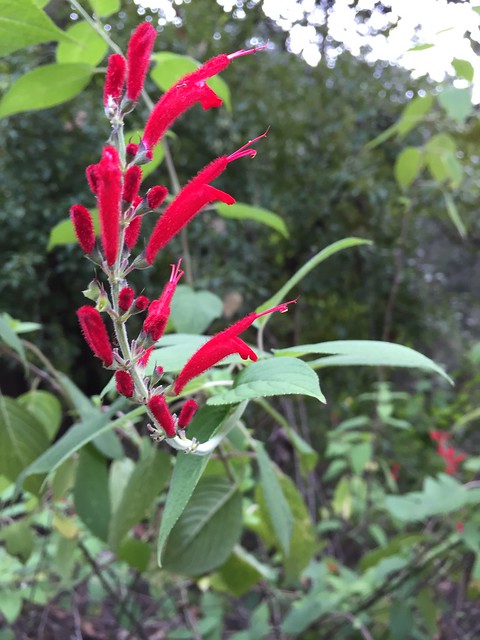
Salvia cinnabarina was more crimson than cinnabar, but regardless the camera was having trouble capturing the intensity of the red.
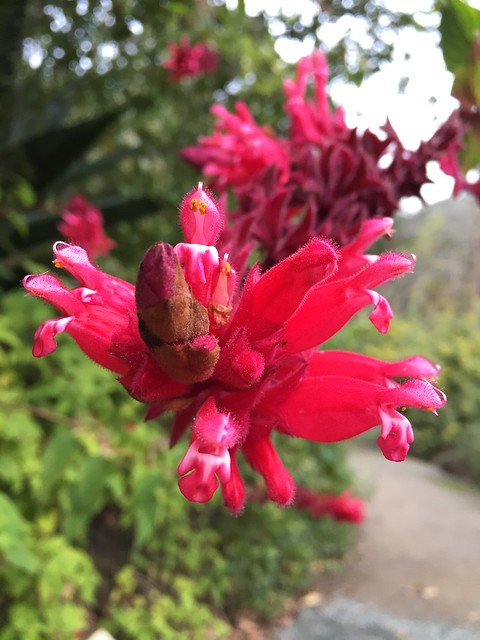
What I think is Salvia wagneriana was hanging down over the path throughout most of the South American section, creating a romantic scrim. Upon closer inspection, and with a bit of imagination, I see a herd of pink camels baying. Sort of. Fortunately the weekend is upon us, and the weather forecast is clear. I think I’ll be outside pulling weeds and transplanting poppies more than I’ll be inside googling plants, fortunately. I’ll leave you with this picture from the Ruth Bancroft Garden I took early December 2017. May your new (ish) year be filled with plants 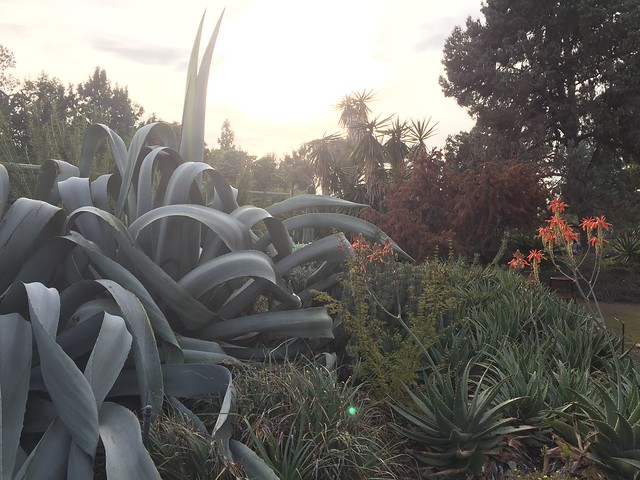
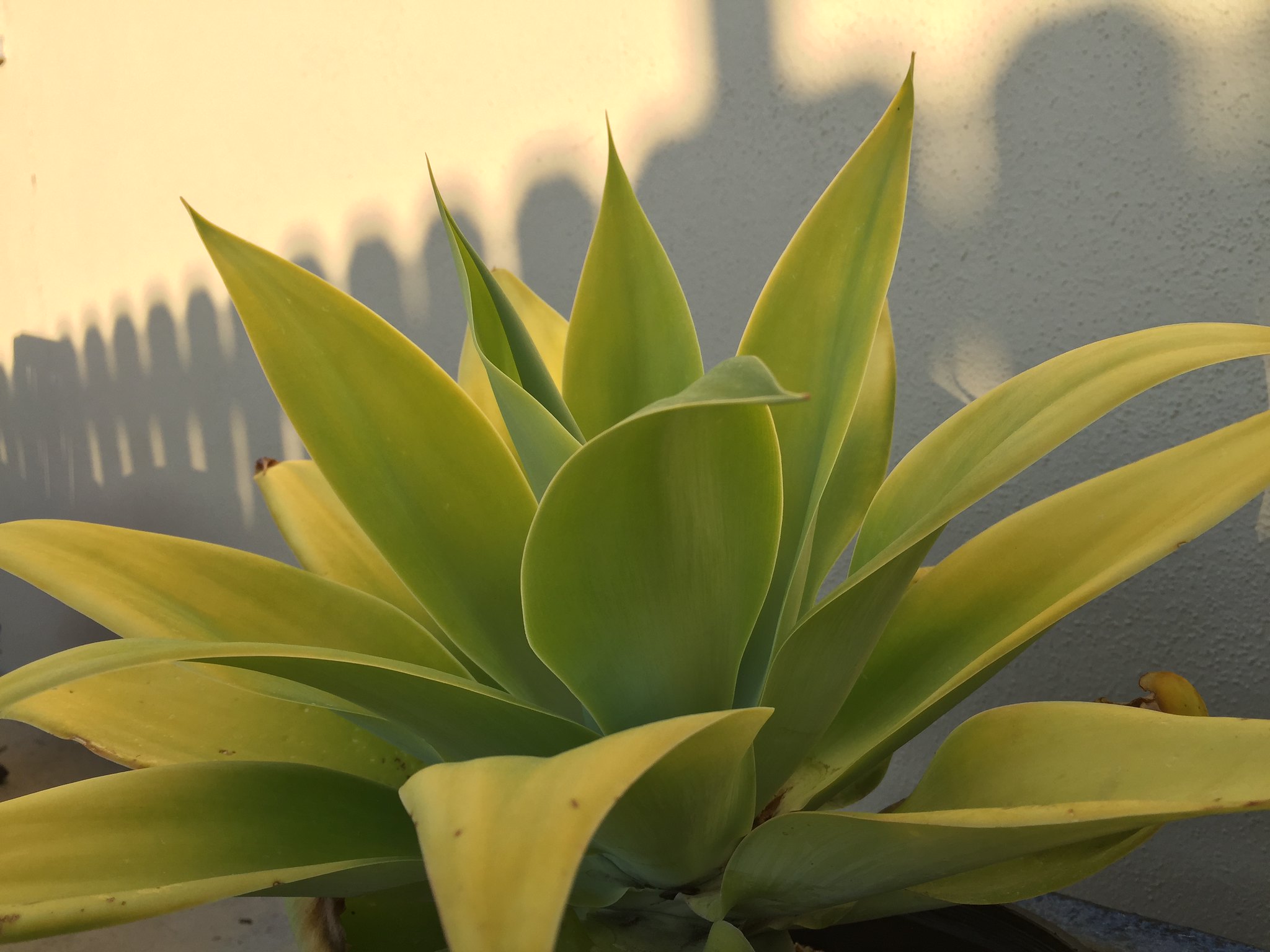

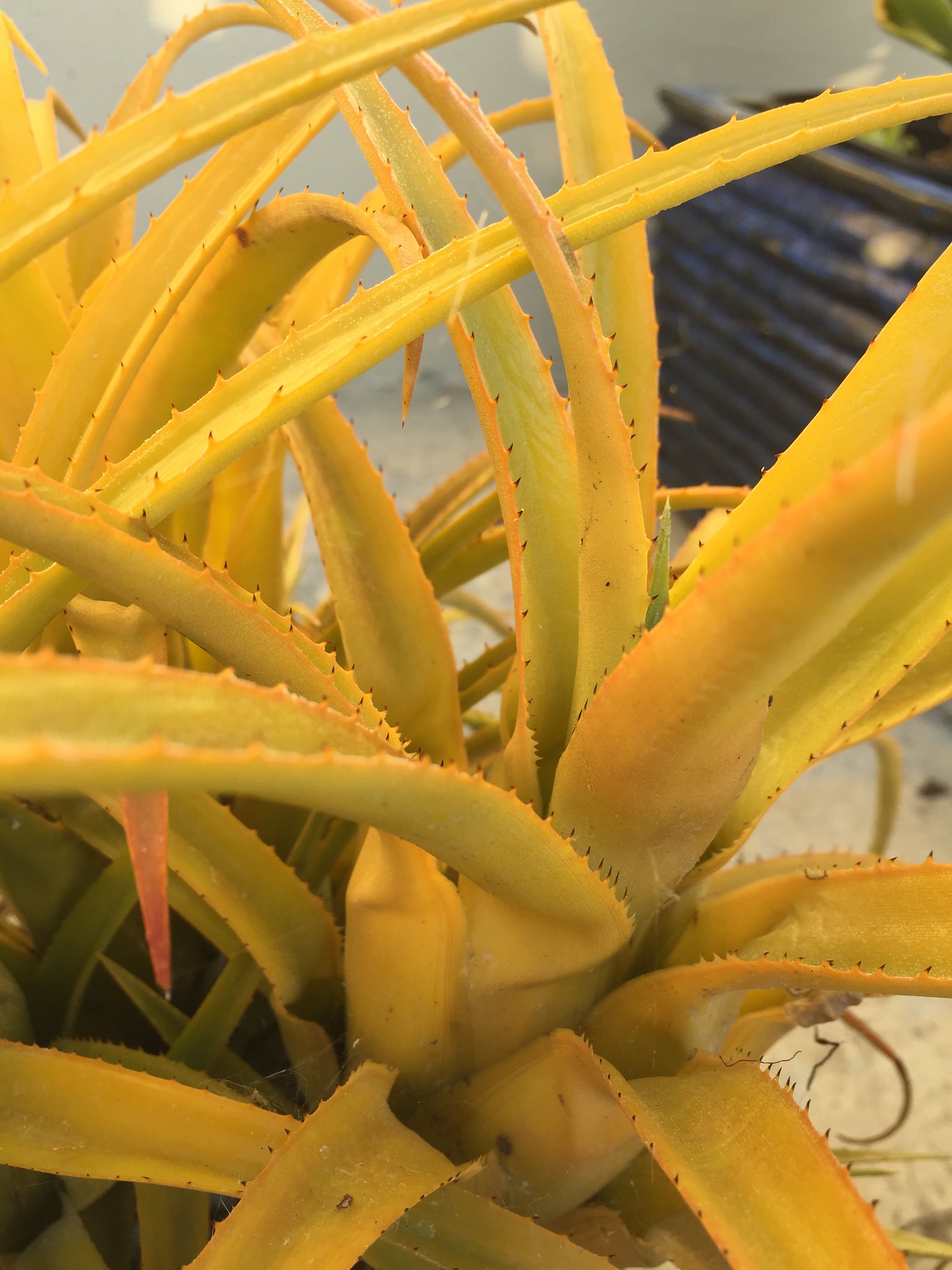
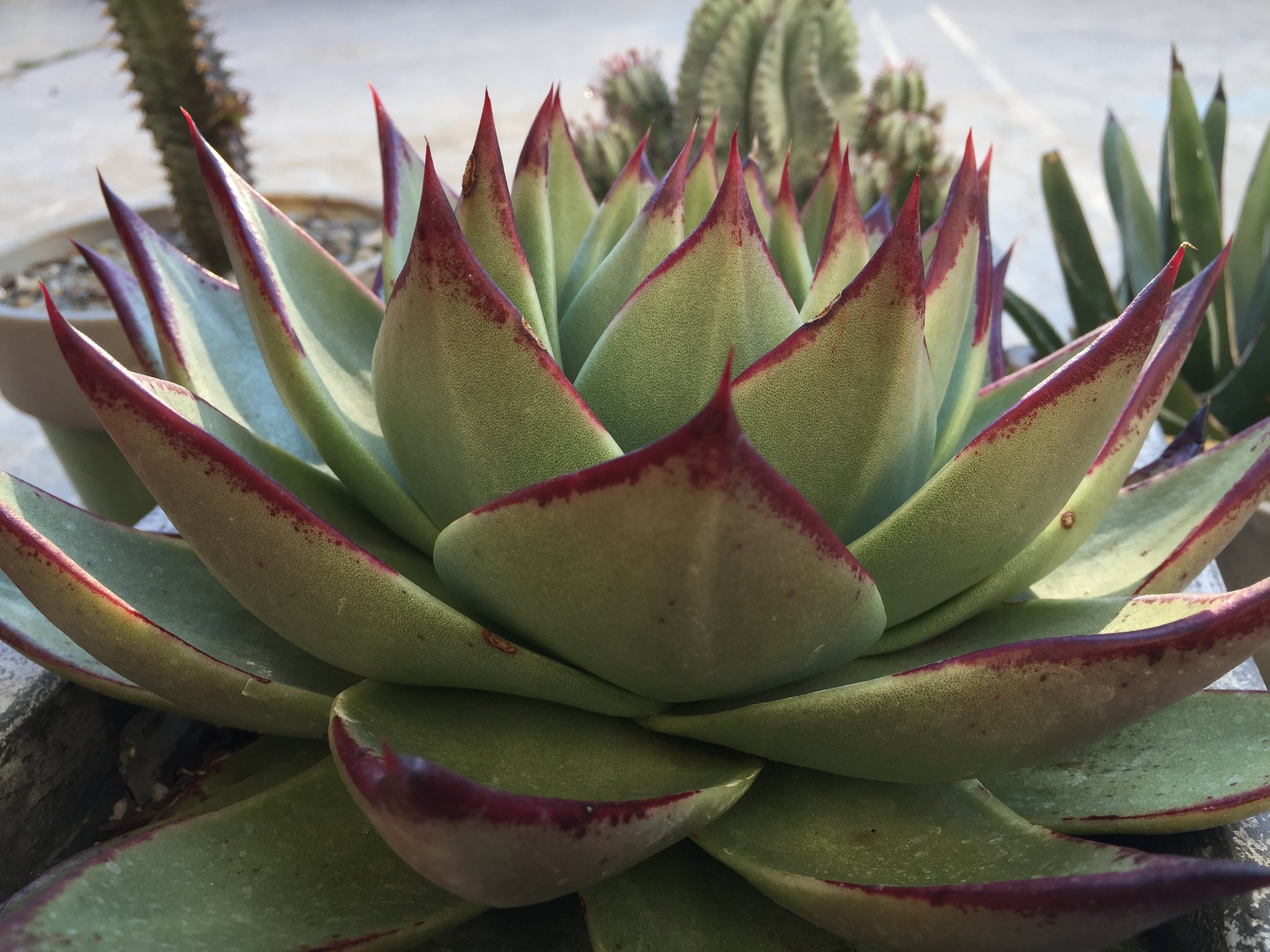
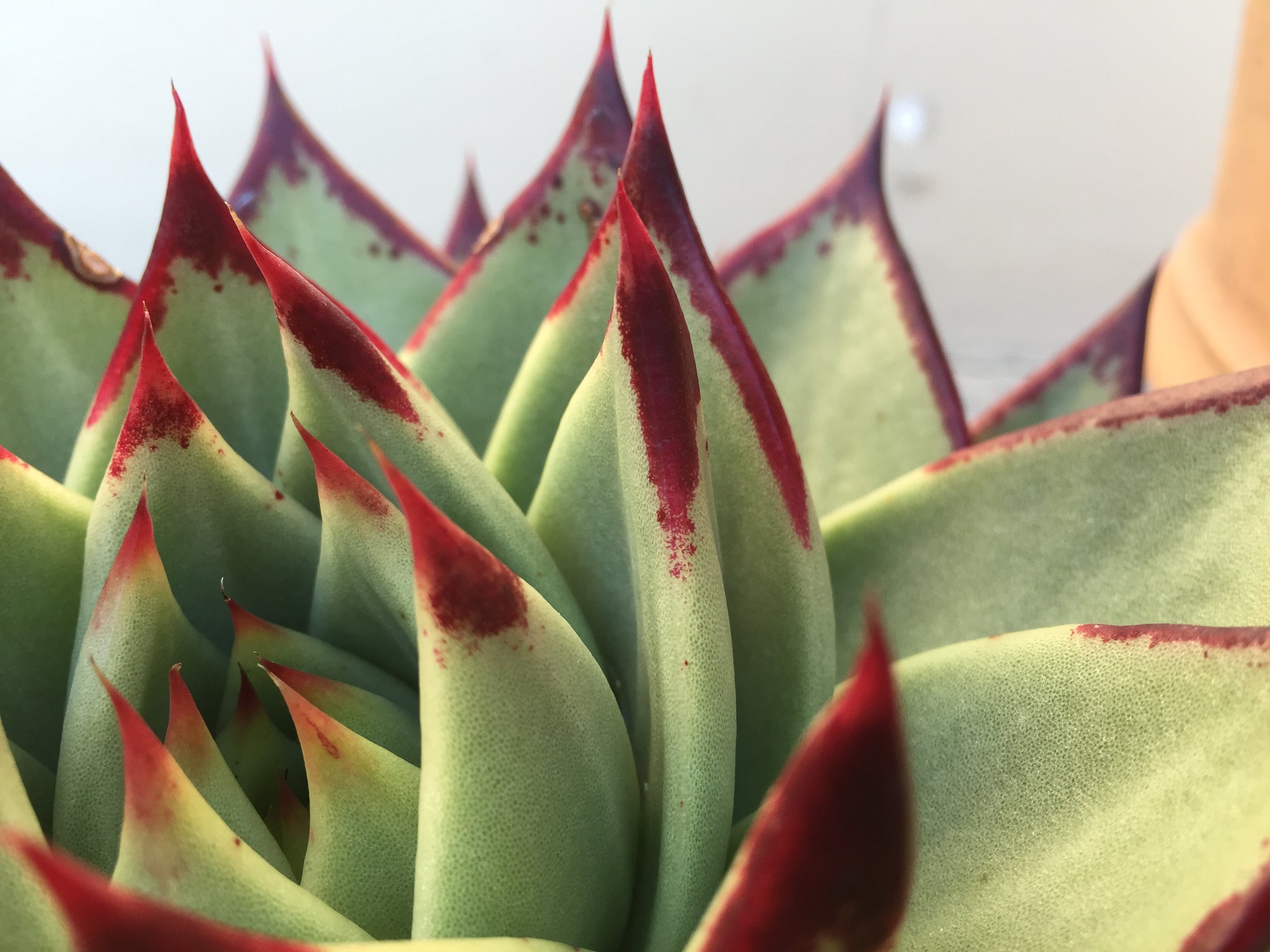
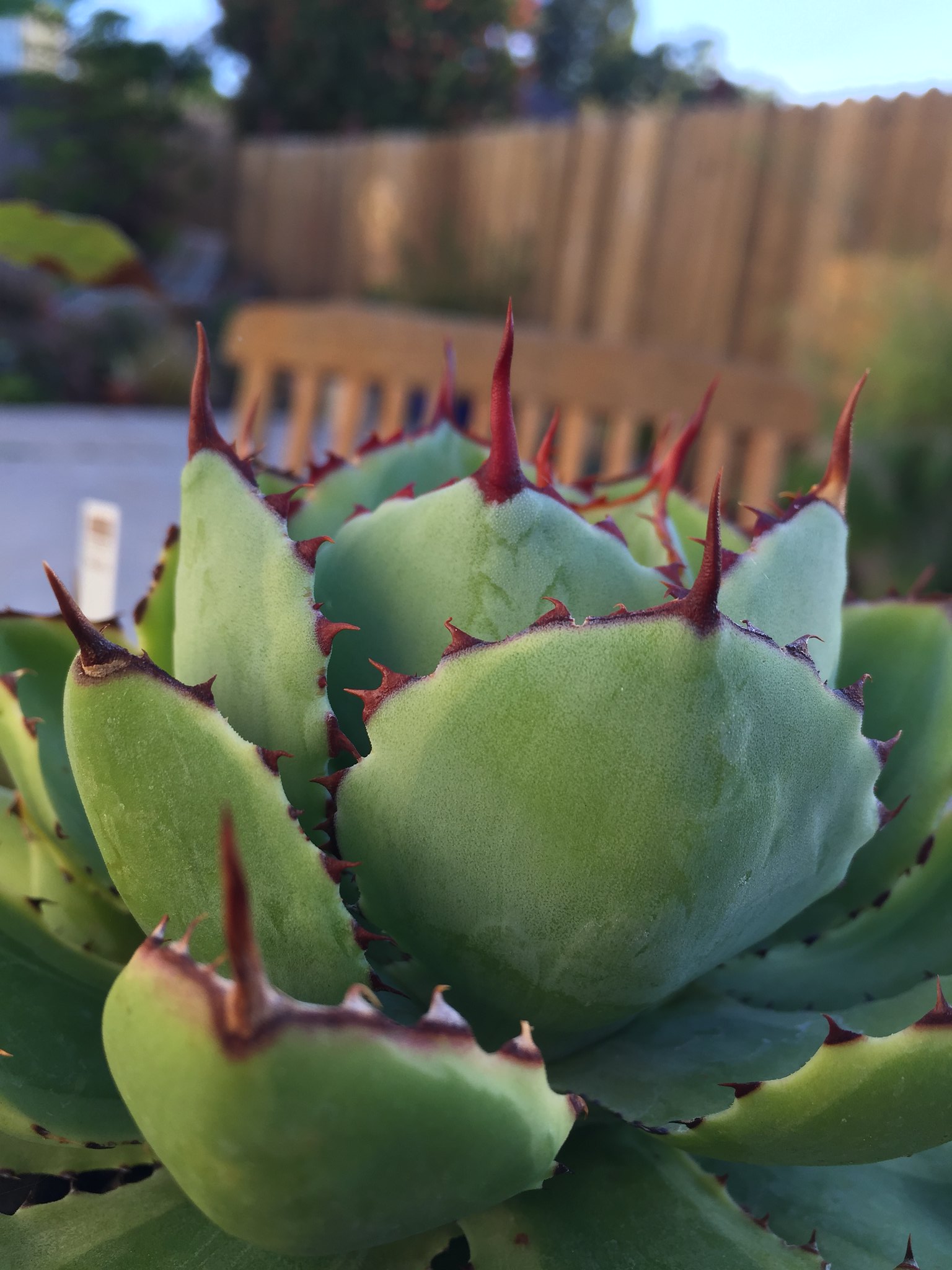 Agave celsii albicans is much happier in the ground. When I first acquired it, as a very thoughtful gift (thanks DC!), it had only a couple of sickly looking leaves and rotted roots. I wasn’t sure it would make it, but in true agave fashion, it pulled through, the tough little trouper. It was looking really good until this summer, when I let it bake in its pot, not realizing that it was underpotted and not absorbing water. It was looking good again after being planted in the ground until a rogue umbrella attack. The irony is that the umbrella was propped up in order to protect this and a few other new plants. The same winds that kicked up the fires north of here sent the umbrella flying across the yard, smashing plants on its way. Boy, I really live on the edge here in Oakland. Attack umbrellas and all.
Agave celsii albicans is much happier in the ground. When I first acquired it, as a very thoughtful gift (thanks DC!), it had only a couple of sickly looking leaves and rotted roots. I wasn’t sure it would make it, but in true agave fashion, it pulled through, the tough little trouper. It was looking really good until this summer, when I let it bake in its pot, not realizing that it was underpotted and not absorbing water. It was looking good again after being planted in the ground until a rogue umbrella attack. The irony is that the umbrella was propped up in order to protect this and a few other new plants. The same winds that kicked up the fires north of here sent the umbrella flying across the yard, smashing plants on its way. Boy, I really live on the edge here in Oakland. Attack umbrellas and all. 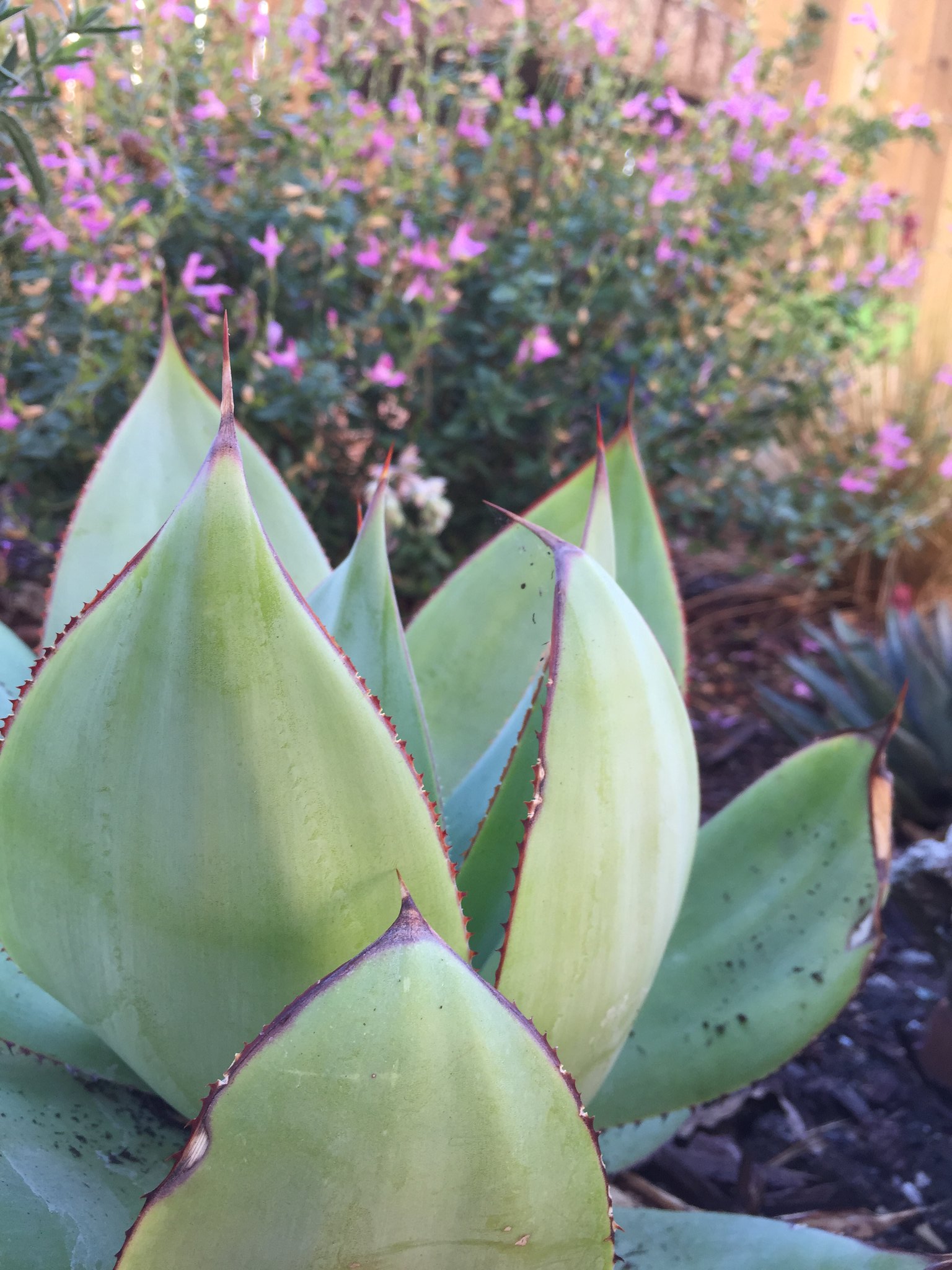
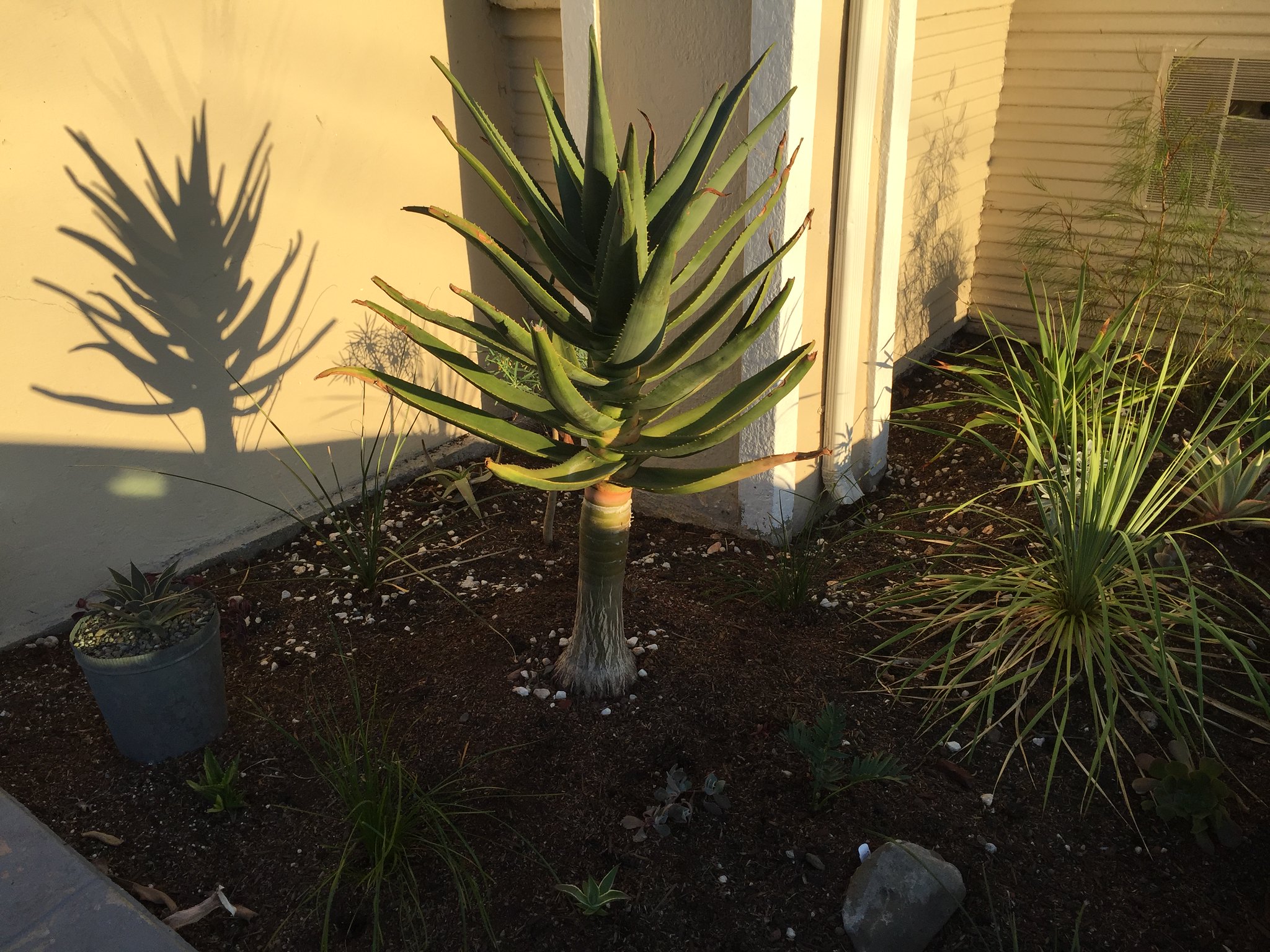 Some garbage is good. The East Bay is blessed with some well stocked salvage shops. Urban Ore, my favorite, is a great place to find interesting planters for good prices. Agave vilmoriniana ‘Stained Glass’ had crispy leaf tips when I got it unfortunately, but hopefully will grow out of the ugly phase soon.
Some garbage is good. The East Bay is blessed with some well stocked salvage shops. Urban Ore, my favorite, is a great place to find interesting planters for good prices. Agave vilmoriniana ‘Stained Glass’ had crispy leaf tips when I got it unfortunately, but hopefully will grow out of the ugly phase soon. 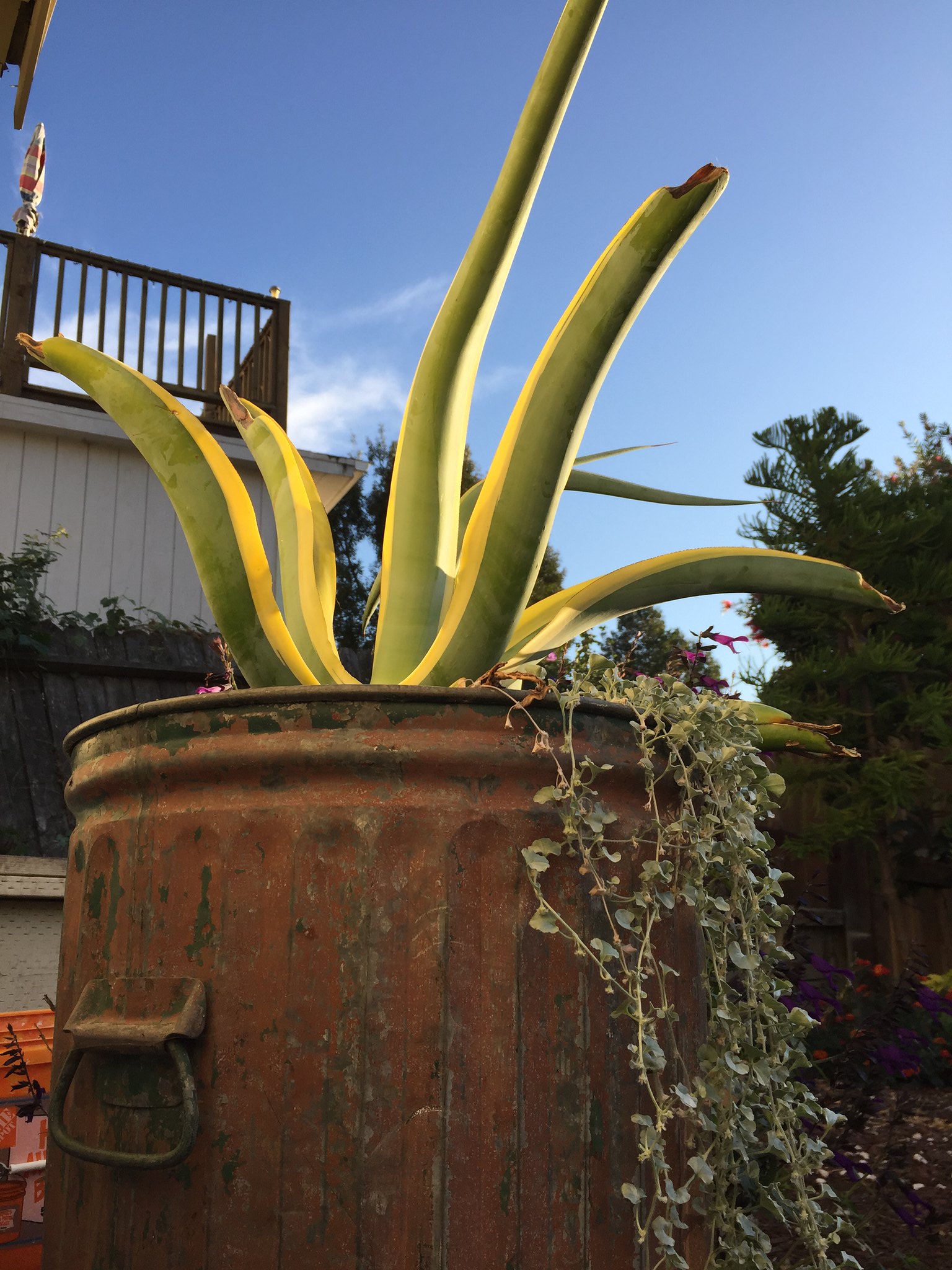
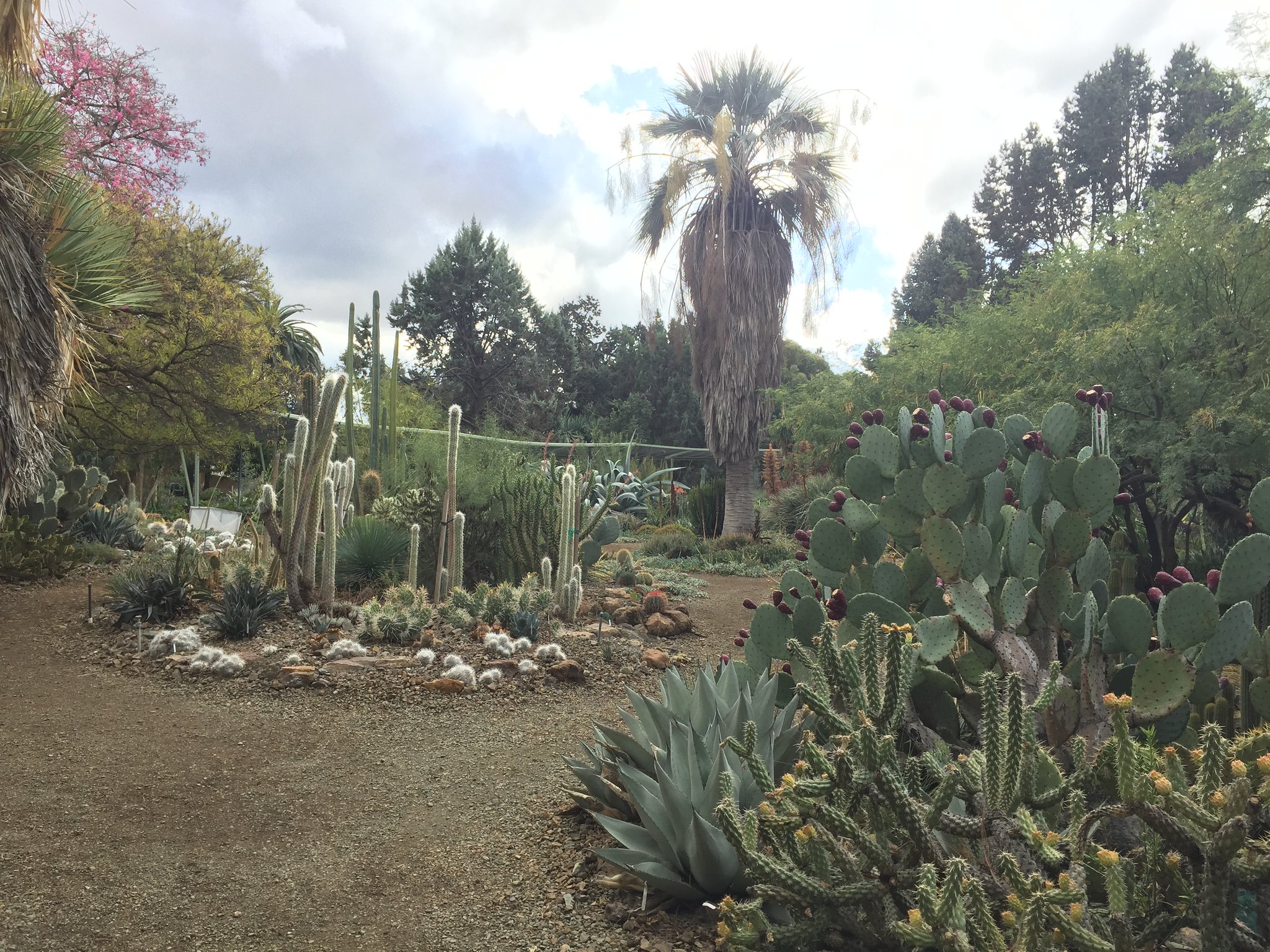 I think I need to snatch up the next Boophone disticha I see, regardless of price tag.
I think I need to snatch up the next Boophone disticha I see, regardless of price tag. 